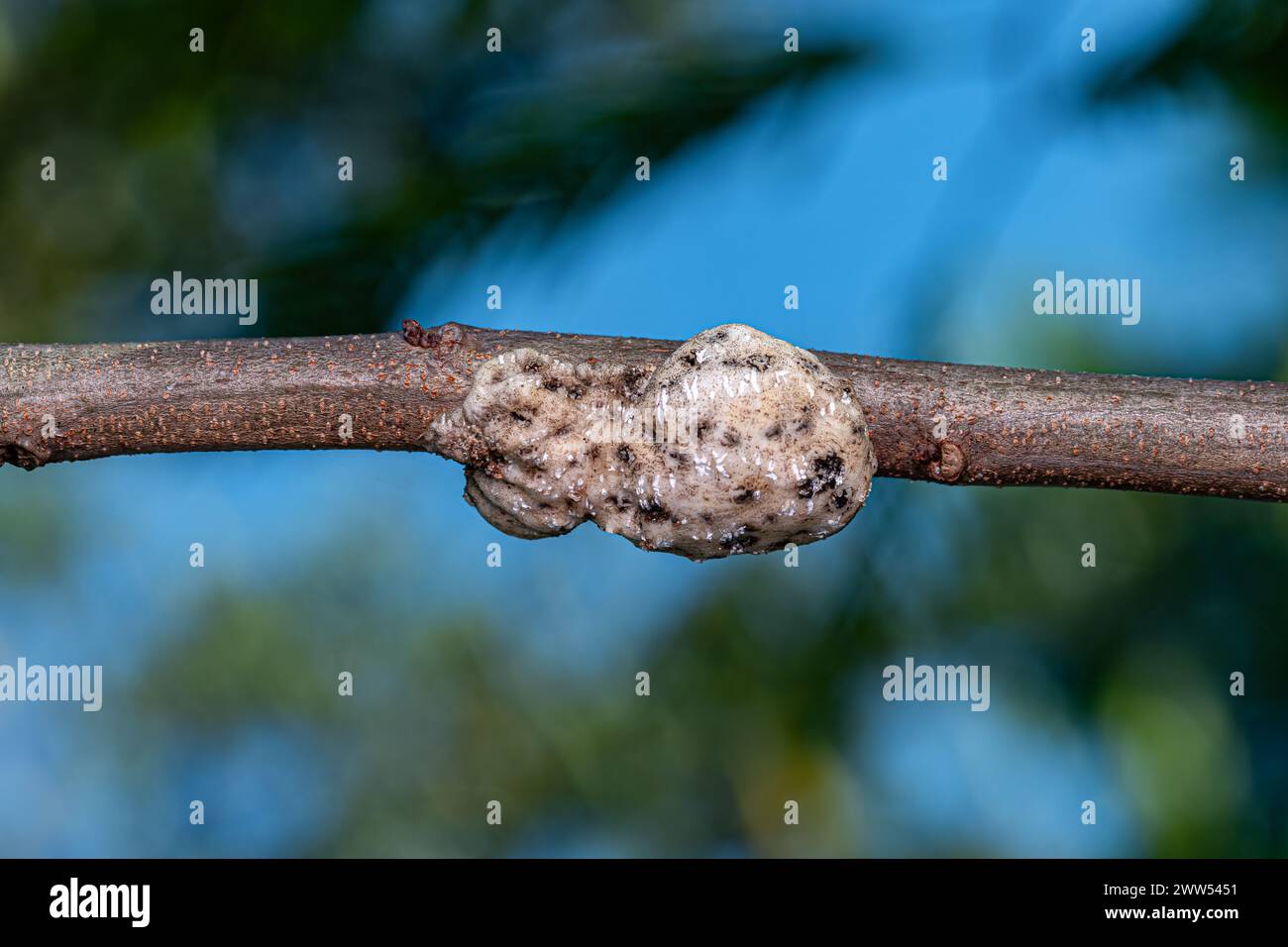Quick filters:
Wax scale insect Stock Photos and Images
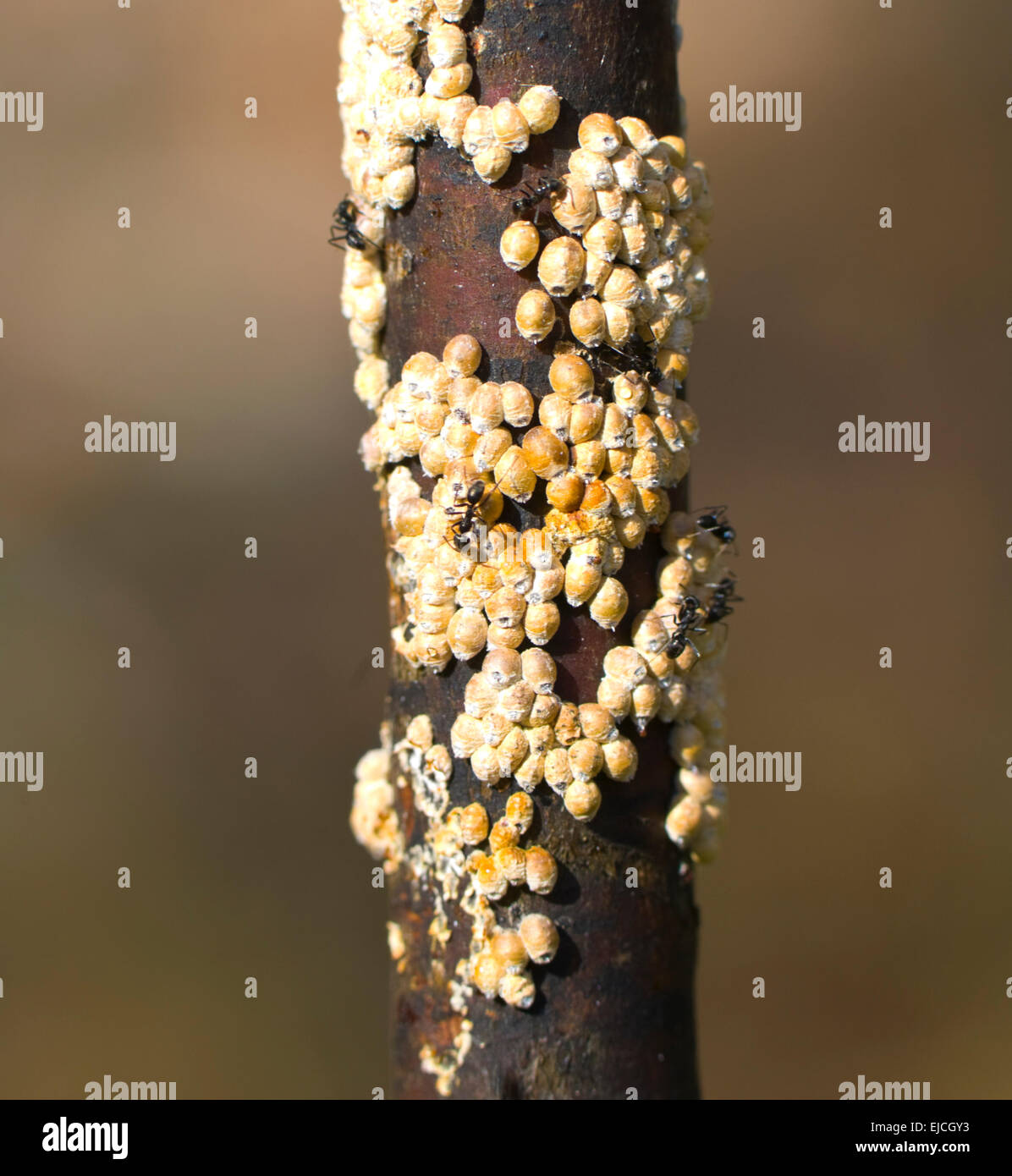 Pink-white Wax Scale Insect (Cryptes baccatus) Stock Photohttps://www.alamy.com/image-license-details/?v=1https://www.alamy.com/stock-photo-pink-white-wax-scale-insect-cryptes-baccatus-80182007.html
Pink-white Wax Scale Insect (Cryptes baccatus) Stock Photohttps://www.alamy.com/image-license-details/?v=1https://www.alamy.com/stock-photo-pink-white-wax-scale-insect-cryptes-baccatus-80182007.htmlRMEJCGY3–Pink-white Wax Scale Insect (Cryptes baccatus)
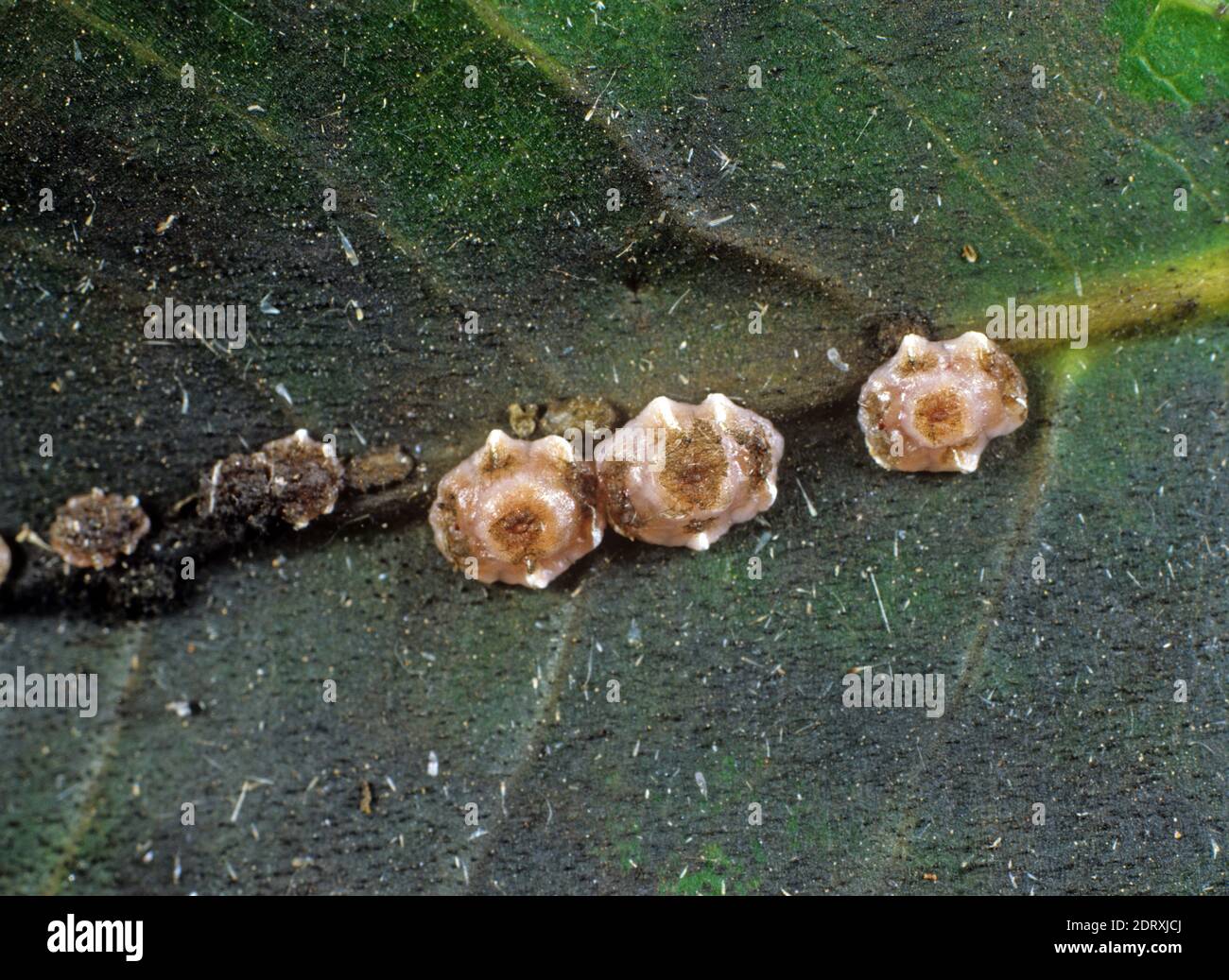 Wax scale insect (Ceroplastes spp.) adults and immatures along the midrib of a mango leaf, Thailand Stock Photohttps://www.alamy.com/image-license-details/?v=1https://www.alamy.com/wax-scale-insect-ceroplastes-spp-adults-and-immatures-along-the-midrib-of-a-mango-leaf-thailand-image393350402.html
Wax scale insect (Ceroplastes spp.) adults and immatures along the midrib of a mango leaf, Thailand Stock Photohttps://www.alamy.com/image-license-details/?v=1https://www.alamy.com/wax-scale-insect-ceroplastes-spp-adults-and-immatures-along-the-midrib-of-a-mango-leaf-thailand-image393350402.htmlRM2DRXJCJ–Wax scale insect (Ceroplastes spp.) adults and immatures along the midrib of a mango leaf, Thailand
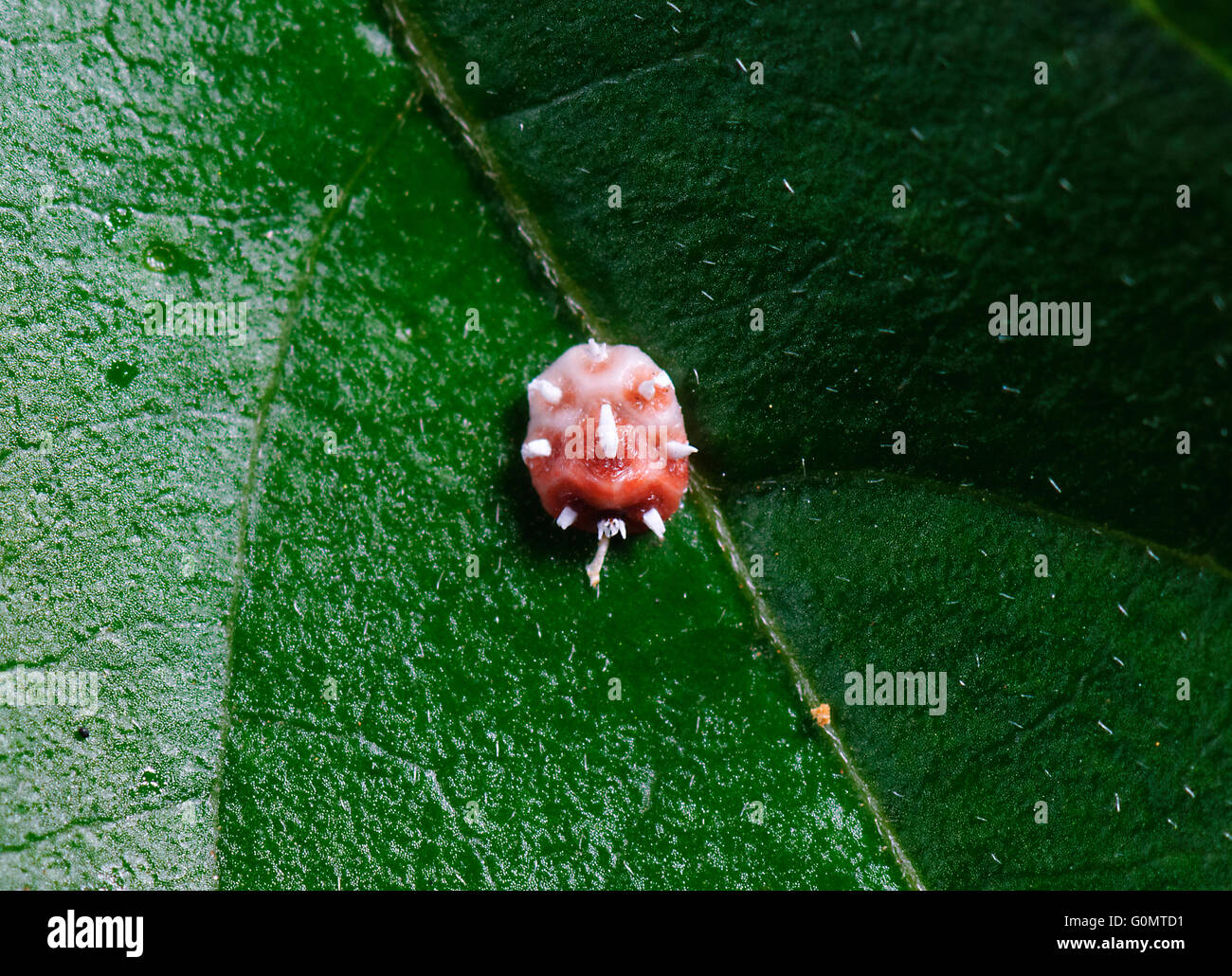 Pink Wax Scale Insect, Ceroplastes rubens, New South Wales, Australia Stock Photohttps://www.alamy.com/image-license-details/?v=1https://www.alamy.com/stock-photo-pink-wax-scale-insect-ceroplastes-rubens-new-south-wales-australia-103720429.html
Pink Wax Scale Insect, Ceroplastes rubens, New South Wales, Australia Stock Photohttps://www.alamy.com/image-license-details/?v=1https://www.alamy.com/stock-photo-pink-wax-scale-insect-ceroplastes-rubens-new-south-wales-australia-103720429.htmlRMG0MTD1–Pink Wax Scale Insect, Ceroplastes rubens, New South Wales, Australia
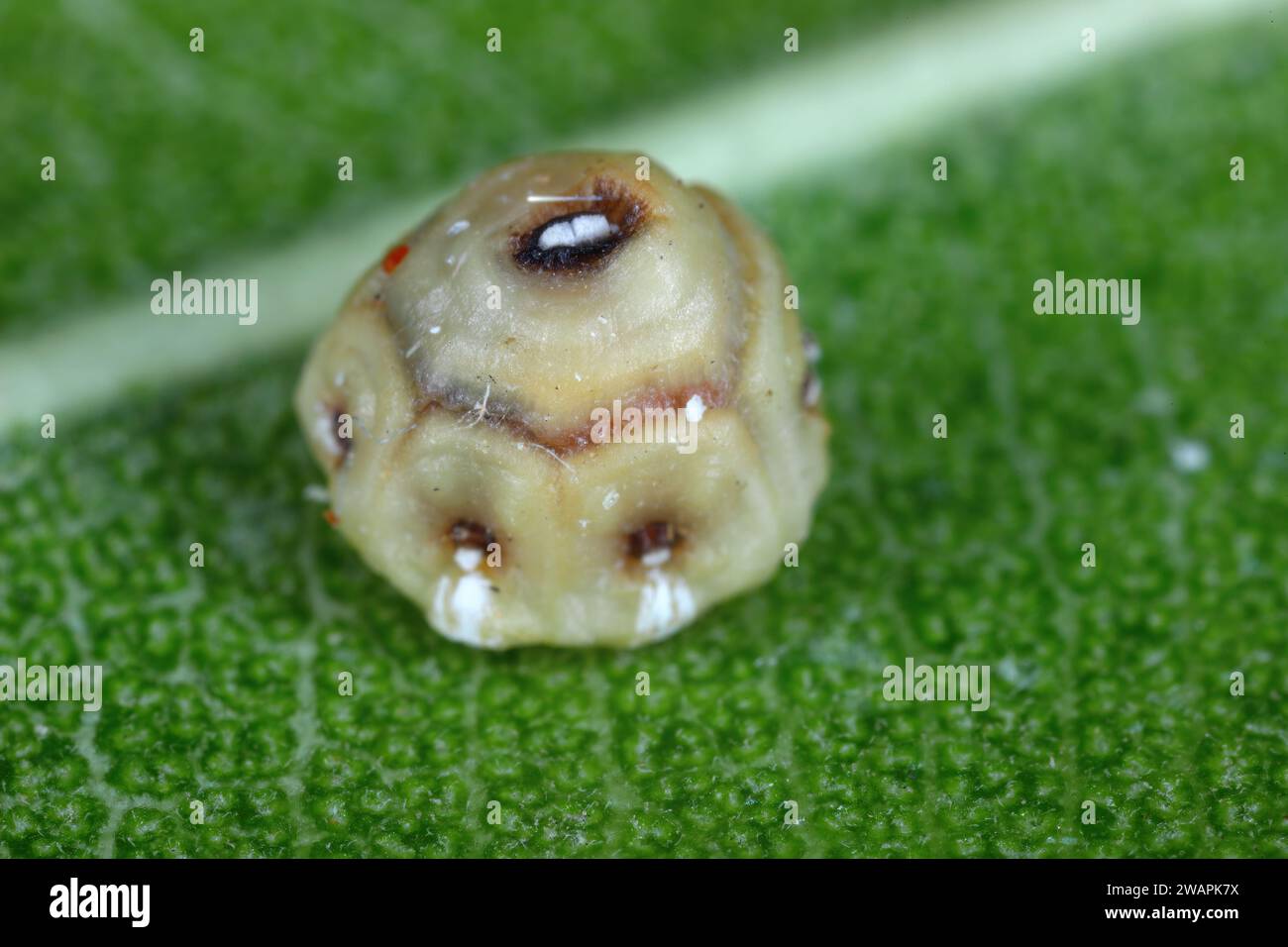 Fig wax scale (scientific name: Ceroplastes rusci, Coccidae). Insect reported as a significant pest of citrus and many other crops and ornamental Stock Photohttps://www.alamy.com/image-license-details/?v=1https://www.alamy.com/fig-wax-scale-scientific-name-ceroplastes-rusci-coccidae-insect-reported-as-a-significant-pest-of-citrus-and-many-other-crops-and-ornamental-image591797134.html
Fig wax scale (scientific name: Ceroplastes rusci, Coccidae). Insect reported as a significant pest of citrus and many other crops and ornamental Stock Photohttps://www.alamy.com/image-license-details/?v=1https://www.alamy.com/fig-wax-scale-scientific-name-ceroplastes-rusci-coccidae-insect-reported-as-a-significant-pest-of-citrus-and-many-other-crops-and-ornamental-image591797134.htmlRF2WAPK7X–Fig wax scale (scientific name: Ceroplastes rusci, Coccidae). Insect reported as a significant pest of citrus and many other crops and ornamental
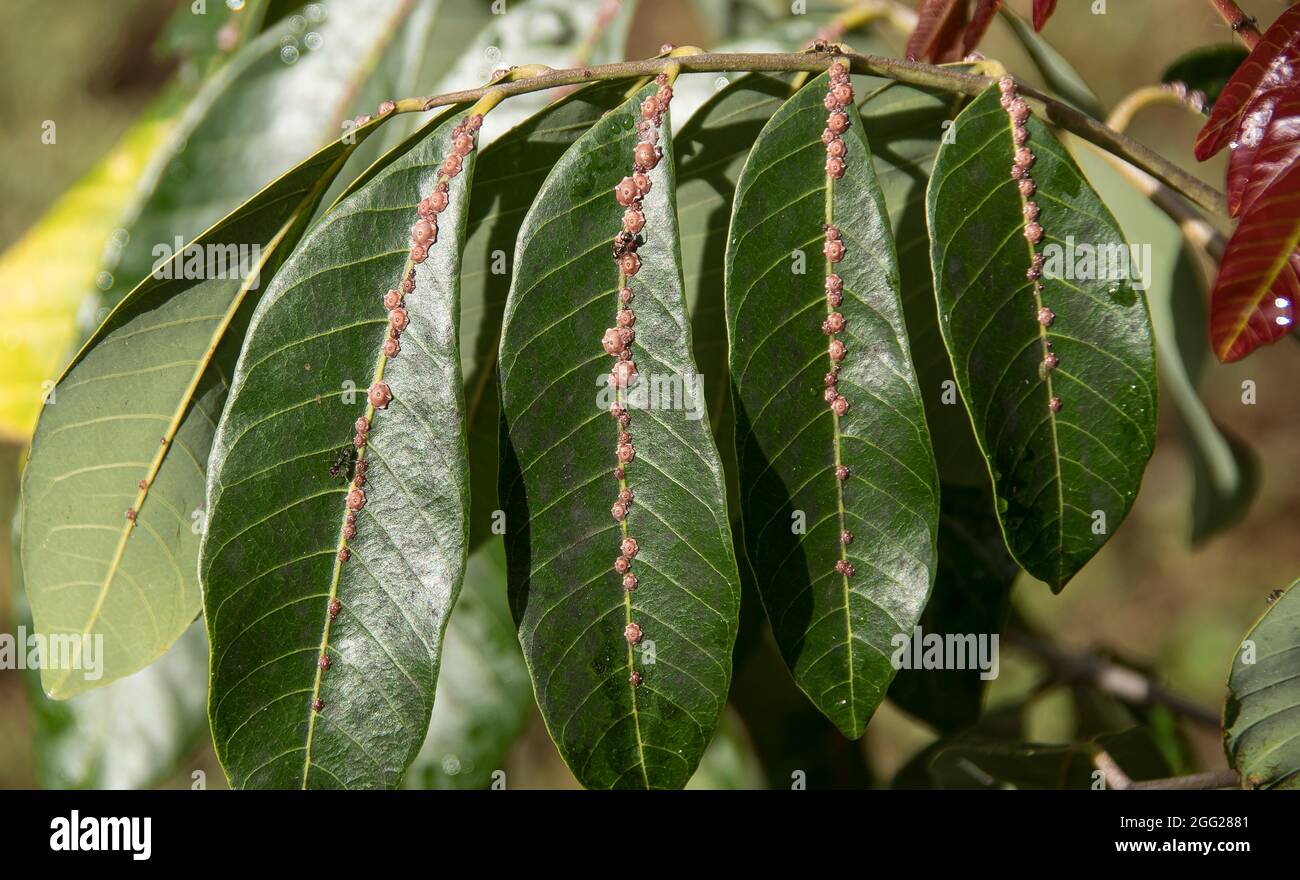 Pink wax scale, ceroplastes rubens, parasite infecting leaves of pecan nut tree (Carya illinoinensis) growing in garden in Queensland, Australia. Stock Photohttps://www.alamy.com/image-license-details/?v=1https://www.alamy.com/pink-wax-scale-ceroplastes-rubens-parasite-infecting-leaves-of-pecan-nut-tree-carya-illinoinensis-growing-in-garden-in-queensland-australia-image440144097.html
Pink wax scale, ceroplastes rubens, parasite infecting leaves of pecan nut tree (Carya illinoinensis) growing in garden in Queensland, Australia. Stock Photohttps://www.alamy.com/image-license-details/?v=1https://www.alamy.com/pink-wax-scale-ceroplastes-rubens-parasite-infecting-leaves-of-pecan-nut-tree-carya-illinoinensis-growing-in-garden-in-queensland-australia-image440144097.htmlRF2GG2881–Pink wax scale, ceroplastes rubens, parasite infecting leaves of pecan nut tree (Carya illinoinensis) growing in garden in Queensland, Australia.
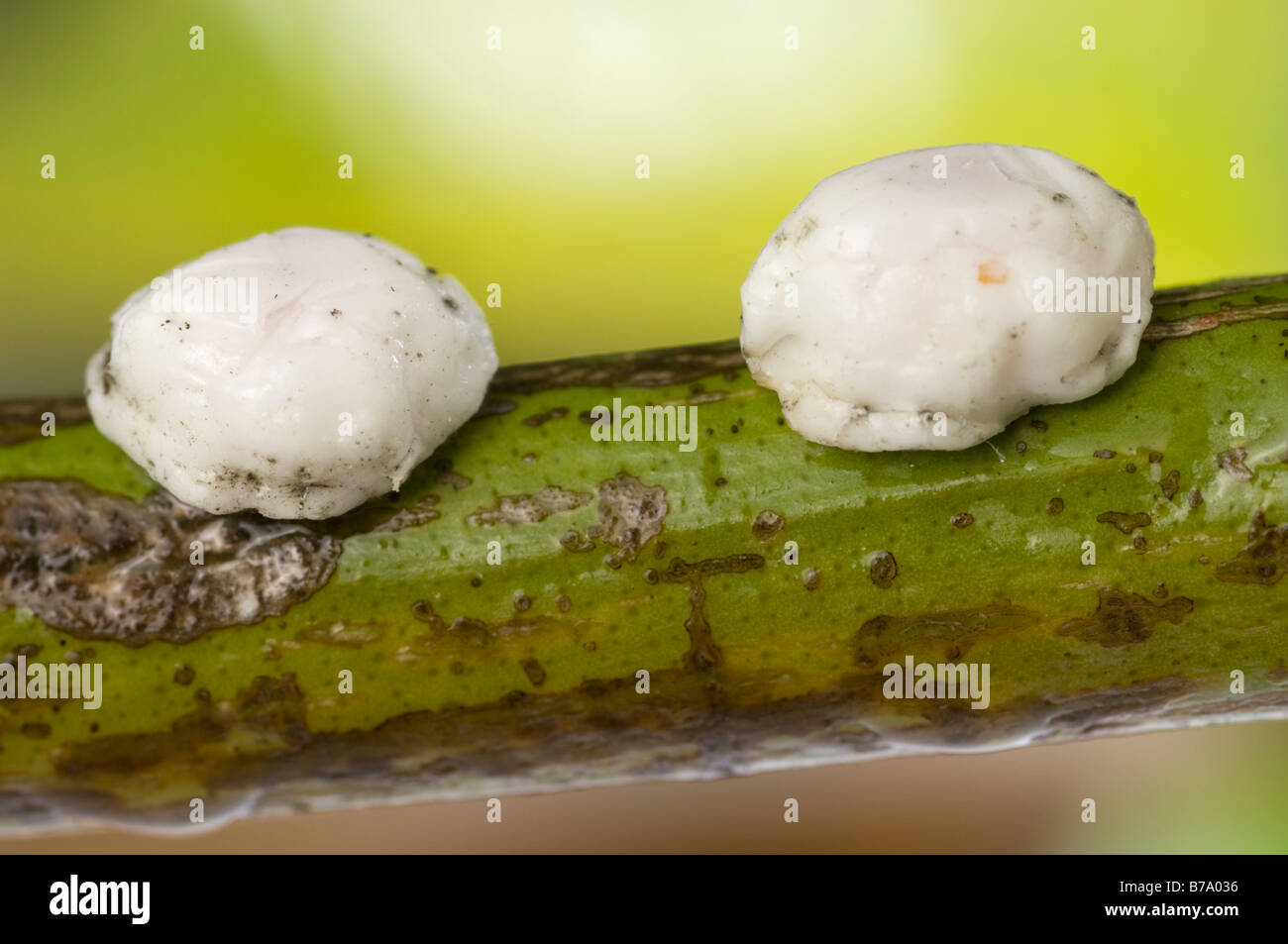 White wax scale on citrus Stock Photohttps://www.alamy.com/image-license-details/?v=1https://www.alamy.com/stock-photo-white-wax-scale-on-citrus-21732570.html
White wax scale on citrus Stock Photohttps://www.alamy.com/image-license-details/?v=1https://www.alamy.com/stock-photo-white-wax-scale-on-citrus-21732570.htmlRMB7A036–White wax scale on citrus
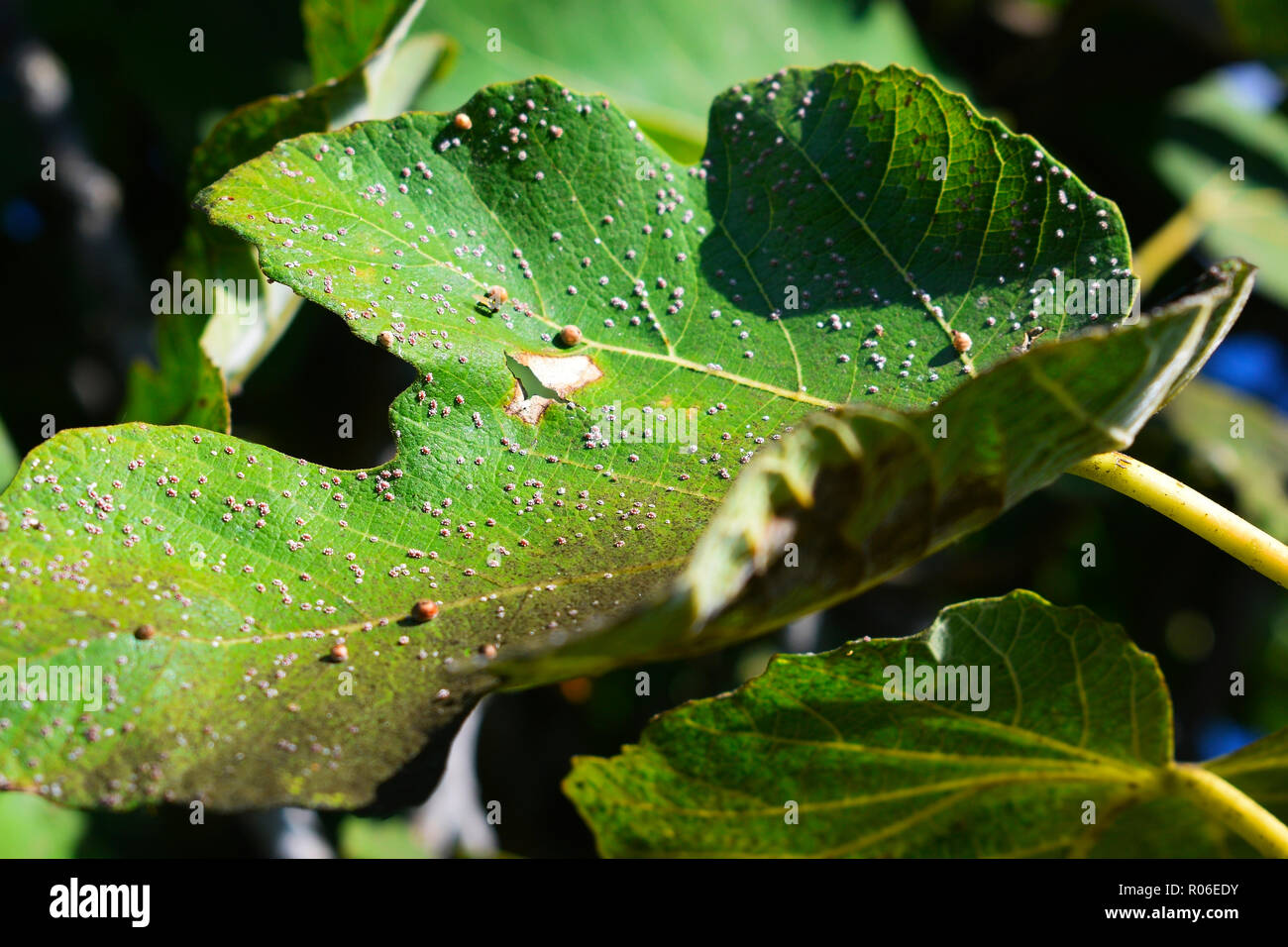 Infected fig leaf of Ceroplastes rusci. Disease of the Mediterranean fig tree. Fig wax scale of the fig tree. Stock Photohttps://www.alamy.com/image-license-details/?v=1https://www.alamy.com/infected-fig-leaf-of-ceroplastes-rusci-disease-of-the-mediterranean-fig-tree-fig-wax-scale-of-the-fig-tree-image223877863.html
Infected fig leaf of Ceroplastes rusci. Disease of the Mediterranean fig tree. Fig wax scale of the fig tree. Stock Photohttps://www.alamy.com/image-license-details/?v=1https://www.alamy.com/infected-fig-leaf-of-ceroplastes-rusci-disease-of-the-mediterranean-fig-tree-fig-wax-scale-of-the-fig-tree-image223877863.htmlRFR06EDY–Infected fig leaf of Ceroplastes rusci. Disease of the Mediterranean fig tree. Fig wax scale of the fig tree.
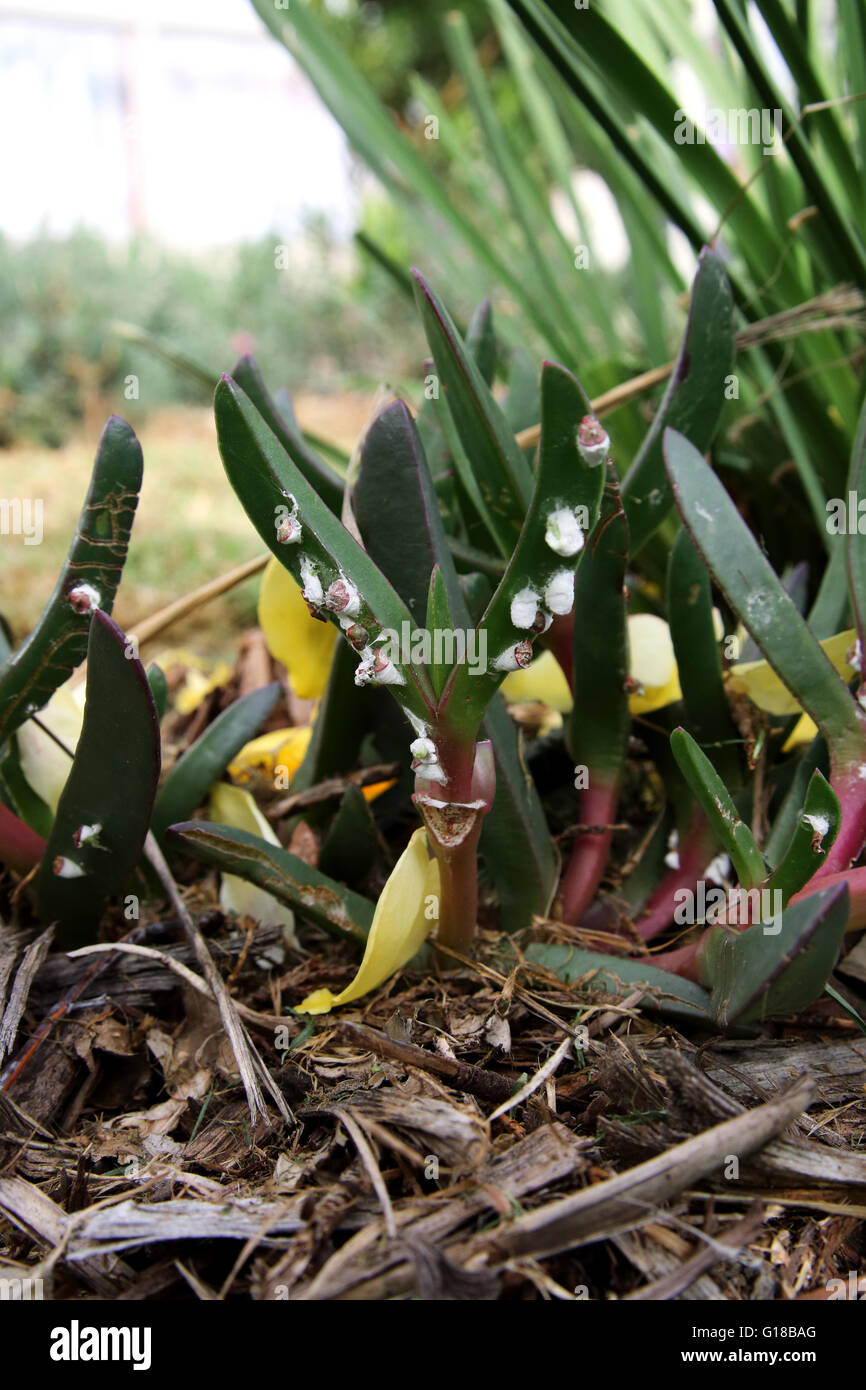 Pulvinaria innumerabilis or known as Cottony Maple Scale on succulent Stock Photohttps://www.alamy.com/image-license-details/?v=1https://www.alamy.com/stock-photo-pulvinaria-innumerabilis-or-known-as-cottony-maple-scale-on-succulent-104061400.html
Pulvinaria innumerabilis or known as Cottony Maple Scale on succulent Stock Photohttps://www.alamy.com/image-license-details/?v=1https://www.alamy.com/stock-photo-pulvinaria-innumerabilis-or-known-as-cottony-maple-scale-on-succulent-104061400.htmlRMG18BAG–Pulvinaria innumerabilis or known as Cottony Maple Scale on succulent
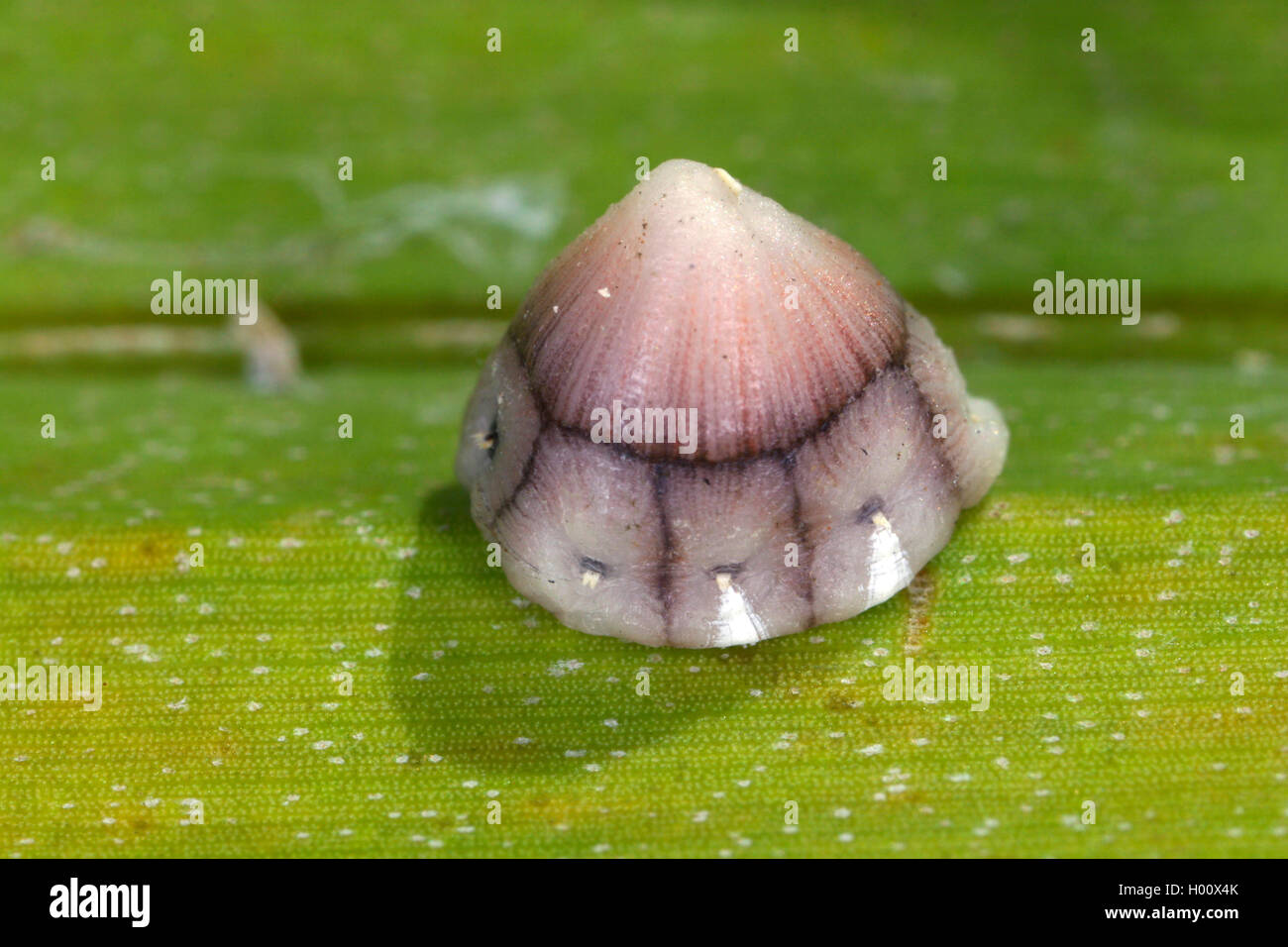 soft scales, wax scales (Ceroplastes cf rusci), on a leaf, S Aigua Blanca Stock Photohttps://www.alamy.com/image-license-details/?v=1https://www.alamy.com/stock-photo-soft-scales-wax-scales-ceroplastes-cf-rusci-on-a-leaf-s-aigua-blanca-120493091.html
soft scales, wax scales (Ceroplastes cf rusci), on a leaf, S Aigua Blanca Stock Photohttps://www.alamy.com/image-license-details/?v=1https://www.alamy.com/stock-photo-soft-scales-wax-scales-ceroplastes-cf-rusci-on-a-leaf-s-aigua-blanca-120493091.htmlRMH00X4K–soft scales, wax scales (Ceroplastes cf rusci), on a leaf, S Aigua Blanca
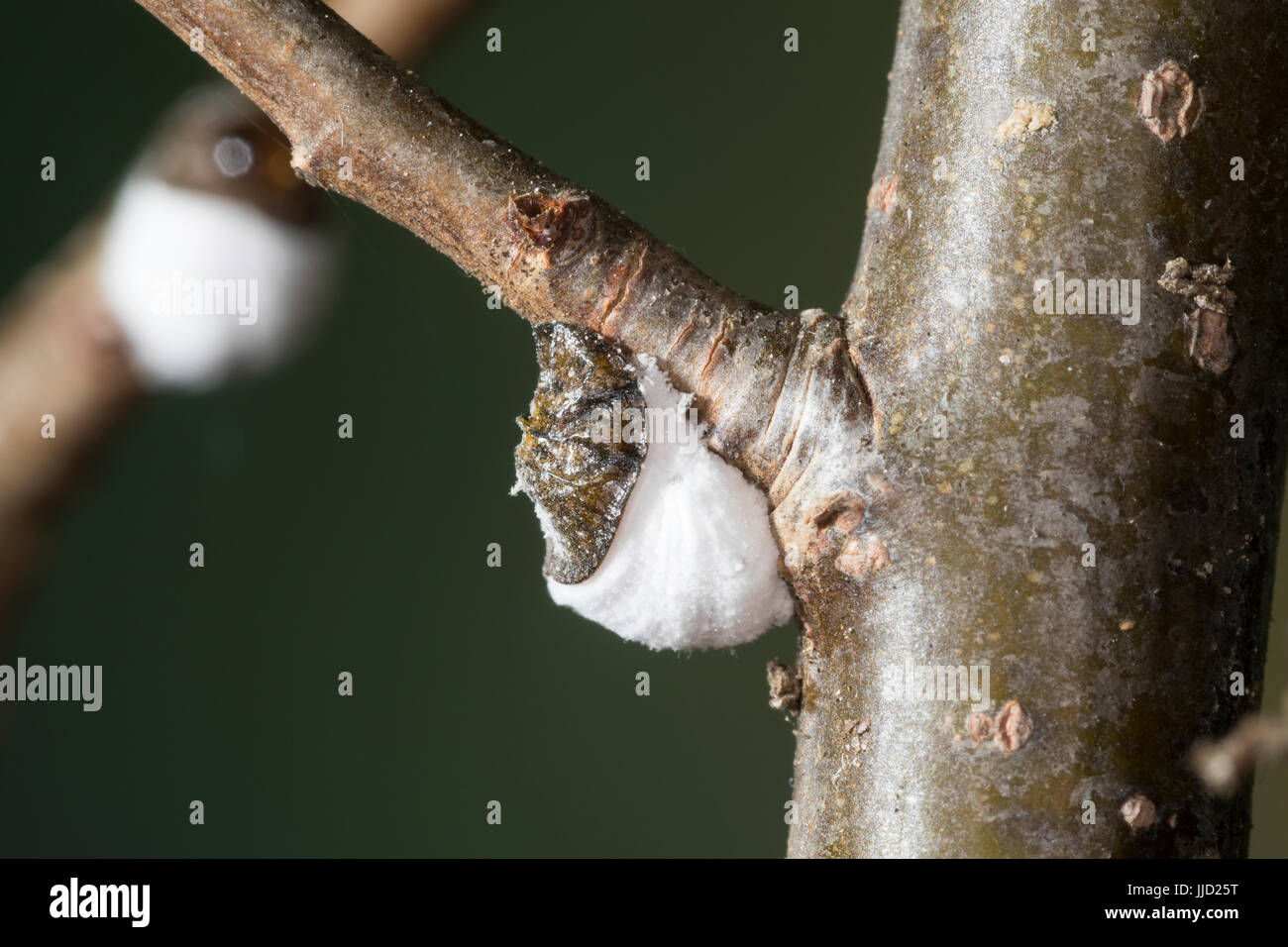 Napfschildlaus, Napf-Schildlaus, Schildlaus, Wollige Rebenschildlaus, Pulvinaria vitis, cottony grape scale, Napfschildläuse, Schildläuse, Coccidae, s Stock Photohttps://www.alamy.com/image-license-details/?v=1https://www.alamy.com/stock-photo-napfschildlaus-napf-schildlaus-schildlaus-wollige-rebenschildlaus-149033860.html
Napfschildlaus, Napf-Schildlaus, Schildlaus, Wollige Rebenschildlaus, Pulvinaria vitis, cottony grape scale, Napfschildläuse, Schildläuse, Coccidae, s Stock Photohttps://www.alamy.com/image-license-details/?v=1https://www.alamy.com/stock-photo-napfschildlaus-napf-schildlaus-schildlaus-wollige-rebenschildlaus-149033860.htmlRMJJD25T–Napfschildlaus, Napf-Schildlaus, Schildlaus, Wollige Rebenschildlaus, Pulvinaria vitis, cottony grape scale, Napfschildläuse, Schildläuse, Coccidae, s
 Scale insect. Coloured scanning electron micrograph (SEM) of a scale insect (superfamily Coccoidea) on a leaf. This pest feeds on the plant's sap. It secretes a powdery wax coating that protects it against pesticides and predators. Many scale species are serious crop pests and are particularly problematic for their ability to evade quarantine measures. Magnification: x150 when printed at 10 centimetres wide. Stock Photohttps://www.alamy.com/image-license-details/?v=1https://www.alamy.com/scale-insect-coloured-scanning-electron-micrograph-sem-of-a-scale-insect-superfamily-coccoidea-on-a-leaf-this-pest-feeds-on-the-plants-sap-it-secretes-a-powdery-wax-coating-that-protects-it-against-pesticides-and-predators-many-scale-species-are-serious-crop-pests-and-are-particularly-problematic-for-their-ability-to-evade-quarantine-measures-magnification-x150-when-printed-at-10-centimetres-wide-image623982806.html
Scale insect. Coloured scanning electron micrograph (SEM) of a scale insect (superfamily Coccoidea) on a leaf. This pest feeds on the plant's sap. It secretes a powdery wax coating that protects it against pesticides and predators. Many scale species are serious crop pests and are particularly problematic for their ability to evade quarantine measures. Magnification: x150 when printed at 10 centimetres wide. Stock Photohttps://www.alamy.com/image-license-details/?v=1https://www.alamy.com/scale-insect-coloured-scanning-electron-micrograph-sem-of-a-scale-insect-superfamily-coccoidea-on-a-leaf-this-pest-feeds-on-the-plants-sap-it-secretes-a-powdery-wax-coating-that-protects-it-against-pesticides-and-predators-many-scale-species-are-serious-crop-pests-and-are-particularly-problematic-for-their-ability-to-evade-quarantine-measures-magnification-x150-when-printed-at-10-centimetres-wide-image623982806.htmlRF2Y74TC6–Scale insect. Coloured scanning electron micrograph (SEM) of a scale insect (superfamily Coccoidea) on a leaf. This pest feeds on the plant's sap. It secretes a powdery wax coating that protects it against pesticides and predators. Many scale species are serious crop pests and are particularly problematic for their ability to evade quarantine measures. Magnification: x150 when printed at 10 centimetres wide.
 Indian Wax Scale Waxey Tortoise Scaled. This object is part of the Education and Outreach collection, some of which are in the Q?rius science education center and available to see.414 Jan 2020 Stock Photohttps://www.alamy.com/image-license-details/?v=1https://www.alamy.com/indian-wax-scale-waxey-tortoise-scaled-this-object-is-part-of-the-education-and-outreach-collection-some-of-which-are-in-the-qrius-science-education-center-and-available-to-see414-jan-2020-image353473504.html
Indian Wax Scale Waxey Tortoise Scaled. This object is part of the Education and Outreach collection, some of which are in the Q?rius science education center and available to see.414 Jan 2020 Stock Photohttps://www.alamy.com/image-license-details/?v=1https://www.alamy.com/indian-wax-scale-waxey-tortoise-scaled-this-object-is-part-of-the-education-and-outreach-collection-some-of-which-are-in-the-qrius-science-education-center-and-available-to-see414-jan-2020-image353473504.htmlRM2BF231M–Indian Wax Scale Waxey Tortoise Scaled. This object is part of the Education and Outreach collection, some of which are in the Q?rius science education center and available to see.414 Jan 2020
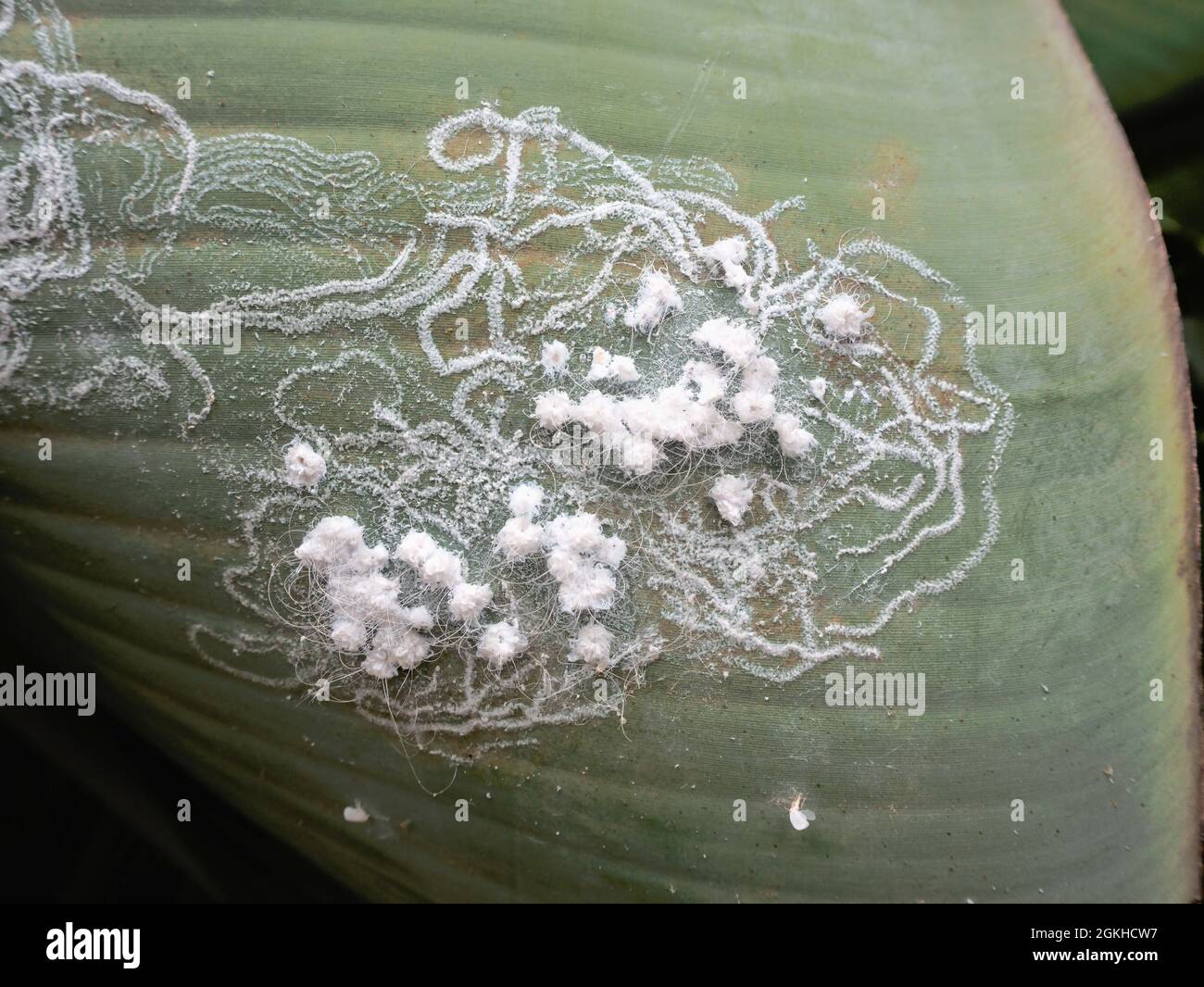 Pronounced network with wax ducts, wax threads and glandular deposits from whiteflies, from the Aleyrodidae family, here on the underside of a baban l Stock Photohttps://www.alamy.com/image-license-details/?v=1https://www.alamy.com/pronounced-network-with-wax-ducts-wax-threads-and-glandular-deposits-from-whiteflies-from-the-aleyrodidae-family-here-on-the-underside-of-a-baban-l-image442320963.html
Pronounced network with wax ducts, wax threads and glandular deposits from whiteflies, from the Aleyrodidae family, here on the underside of a baban l Stock Photohttps://www.alamy.com/image-license-details/?v=1https://www.alamy.com/pronounced-network-with-wax-ducts-wax-threads-and-glandular-deposits-from-whiteflies-from-the-aleyrodidae-family-here-on-the-underside-of-a-baban-l-image442320963.htmlRF2GKHCW7–Pronounced network with wax ducts, wax threads and glandular deposits from whiteflies, from the Aleyrodidae family, here on the underside of a baban l
 Biological control of invasive Opuntia cacti in South Africa by introduction of cochineal insect Dactylopius opuntia, colony consisting of wax-covered Stock Photohttps://www.alamy.com/image-license-details/?v=1https://www.alamy.com/biological-control-of-invasive-opuntia-cacti-in-south-africa-by-introduction-of-cochineal-insect-dactylopius-opuntia-colony-consisting-of-wax-covered-image243069246.html
Biological control of invasive Opuntia cacti in South Africa by introduction of cochineal insect Dactylopius opuntia, colony consisting of wax-covered Stock Photohttps://www.alamy.com/image-license-details/?v=1https://www.alamy.com/biological-control-of-invasive-opuntia-cacti-in-south-africa-by-introduction-of-cochineal-insect-dactylopius-opuntia-colony-consisting-of-wax-covered-image243069246.htmlRMT3CN8E–Biological control of invasive Opuntia cacti in South Africa by introduction of cochineal insect Dactylopius opuntia, colony consisting of wax-covered
 large scale production of edible insects (crickets) in Holland Stock Photohttps://www.alamy.com/image-license-details/?v=1https://www.alamy.com/stock-photo-large-scale-production-of-edible-insects-crickets-in-holland-102225622.html
large scale production of edible insects (crickets) in Holland Stock Photohttps://www.alamy.com/image-license-details/?v=1https://www.alamy.com/stock-photo-large-scale-production-of-edible-insects-crickets-in-holland-102225622.htmlRMFX8NR2–large scale production of edible insects (crickets) in Holland
 Viburnum cushion scale insect, on underside of Viburnum tinus leaves, start of infestation, white wax-wol are formed into an ovisac Stock Photohttps://www.alamy.com/image-license-details/?v=1https://www.alamy.com/viburnum-cushion-scale-insect-on-underside-of-viburnum-tinus-leaves-start-of-infestation-white-wax-wol-are-formed-into-an-ovisac-image257384592.html
Viburnum cushion scale insect, on underside of Viburnum tinus leaves, start of infestation, white wax-wol are formed into an ovisac Stock Photohttps://www.alamy.com/image-license-details/?v=1https://www.alamy.com/viburnum-cushion-scale-insect-on-underside-of-viburnum-tinus-leaves-start-of-infestation-white-wax-wol-are-formed-into-an-ovisac-image257384592.htmlRMTXMTJT–Viburnum cushion scale insect, on underside of Viburnum tinus leaves, start of infestation, white wax-wol are formed into an ovisac
 Wax-like deposits results from the infestation. Stock Photohttps://www.alamy.com/image-license-details/?v=1https://www.alamy.com/stock-photo-wax-like-deposits-results-from-the-infestation-174423916.html
Wax-like deposits results from the infestation. Stock Photohttps://www.alamy.com/image-license-details/?v=1https://www.alamy.com/stock-photo-wax-like-deposits-results-from-the-infestation-174423916.htmlRFM3NKDG–Wax-like deposits results from the infestation.
 coccids scale insects mealybugs Stock Photohttps://www.alamy.com/image-license-details/?v=1https://www.alamy.com/stock-photo-coccids-scale-insects-mealybugs-133109334.html
coccids scale insects mealybugs Stock Photohttps://www.alamy.com/image-license-details/?v=1https://www.alamy.com/stock-photo-coccids-scale-insects-mealybugs-133109334.htmlRMHMFJ8P–coccids scale insects mealybugs
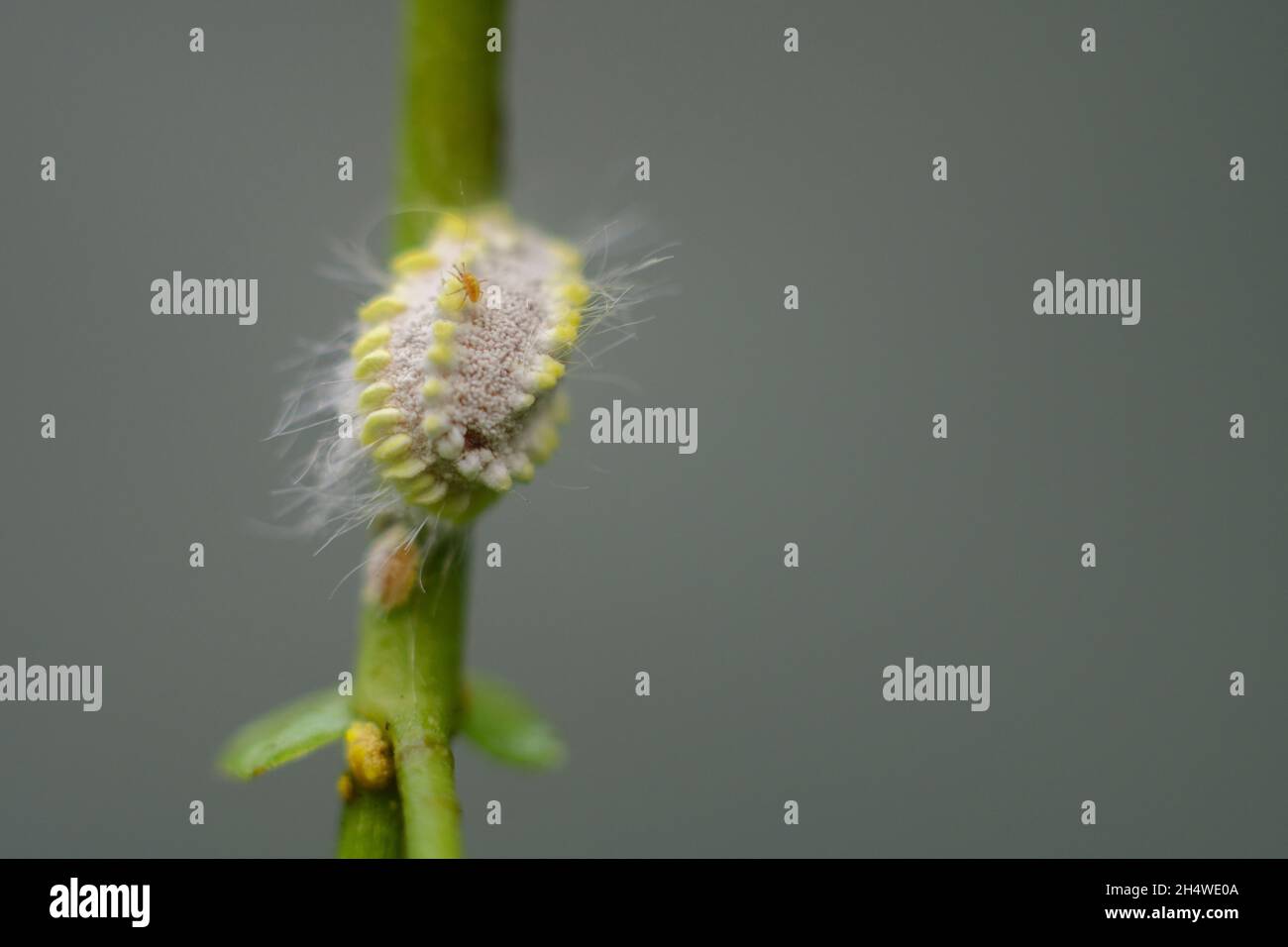 mealybug, a small sap-sucking scaly insect close-up macro photograph. Stock Photohttps://www.alamy.com/image-license-details/?v=1https://www.alamy.com/mealybug-a-small-sap-sucking-scaly-insect-close-up-macro-photograph-image450487978.html
mealybug, a small sap-sucking scaly insect close-up macro photograph. Stock Photohttps://www.alamy.com/image-license-details/?v=1https://www.alamy.com/mealybug-a-small-sap-sucking-scaly-insect-close-up-macro-photograph-image450487978.htmlRF2H4WE0A–mealybug, a small sap-sucking scaly insect close-up macro photograph.
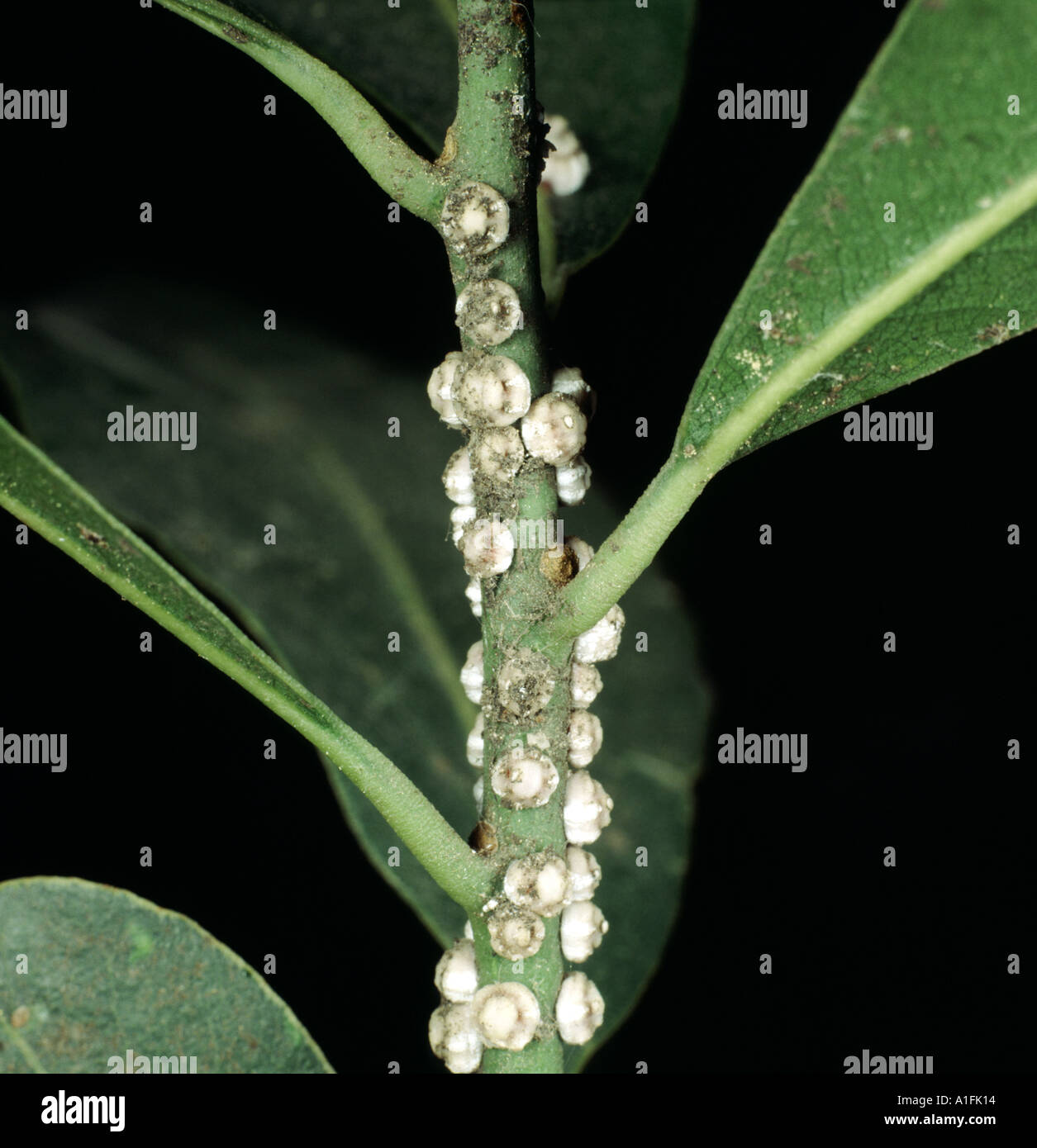 White wax scale insects Ceroplastes spp on new wood of laurel plant Stock Photohttps://www.alamy.com/image-license-details/?v=1https://www.alamy.com/white-wax-scale-insects-ceroplastes-spp-on-new-wood-of-laurel-plant-image3344147.html
White wax scale insects Ceroplastes spp on new wood of laurel plant Stock Photohttps://www.alamy.com/image-license-details/?v=1https://www.alamy.com/white-wax-scale-insects-ceroplastes-spp-on-new-wood-of-laurel-plant-image3344147.htmlRMA1FK14–White wax scale insects Ceroplastes spp on new wood of laurel plant
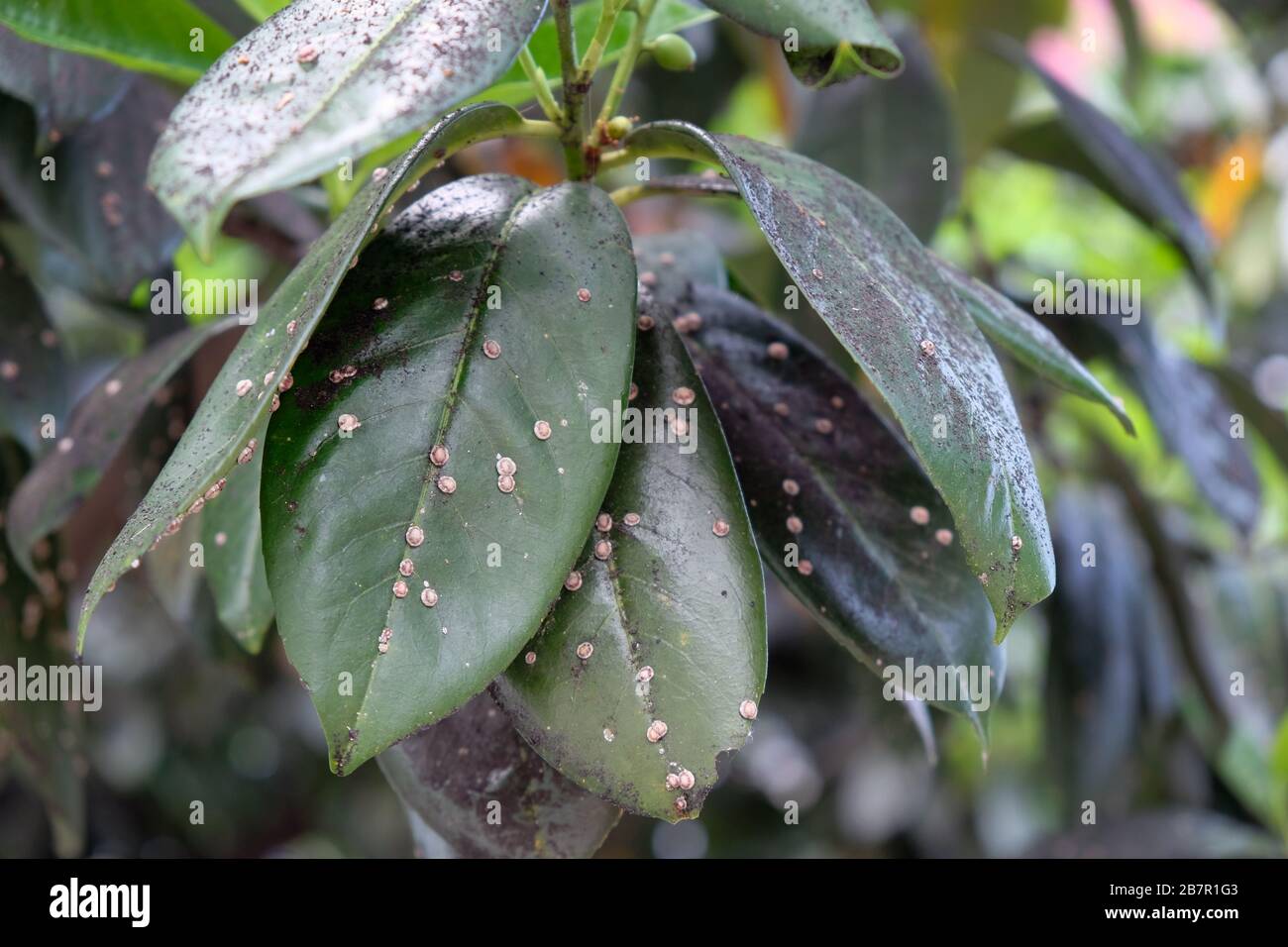 Green leaf of medlar covered with pests. Japanese Wax Shrimp - Ceroplastes japonicus Green. Insect of the family Pseudoscutum, quarantine pest. Leaves Stock Photohttps://www.alamy.com/image-license-details/?v=1https://www.alamy.com/green-leaf-of-medlar-covered-with-pests-japanese-wax-shrimp-ceroplastes-japonicus-green-insect-of-the-family-pseudoscutum-quarantine-pest-leaves-image349016083.html
Green leaf of medlar covered with pests. Japanese Wax Shrimp - Ceroplastes japonicus Green. Insect of the family Pseudoscutum, quarantine pest. Leaves Stock Photohttps://www.alamy.com/image-license-details/?v=1https://www.alamy.com/green-leaf-of-medlar-covered-with-pests-japanese-wax-shrimp-ceroplastes-japonicus-green-insect-of-the-family-pseudoscutum-quarantine-pest-leaves-image349016083.htmlRF2B7R1G3–Green leaf of medlar covered with pests. Japanese Wax Shrimp - Ceroplastes japonicus Green. Insect of the family Pseudoscutum, quarantine pest. Leaves
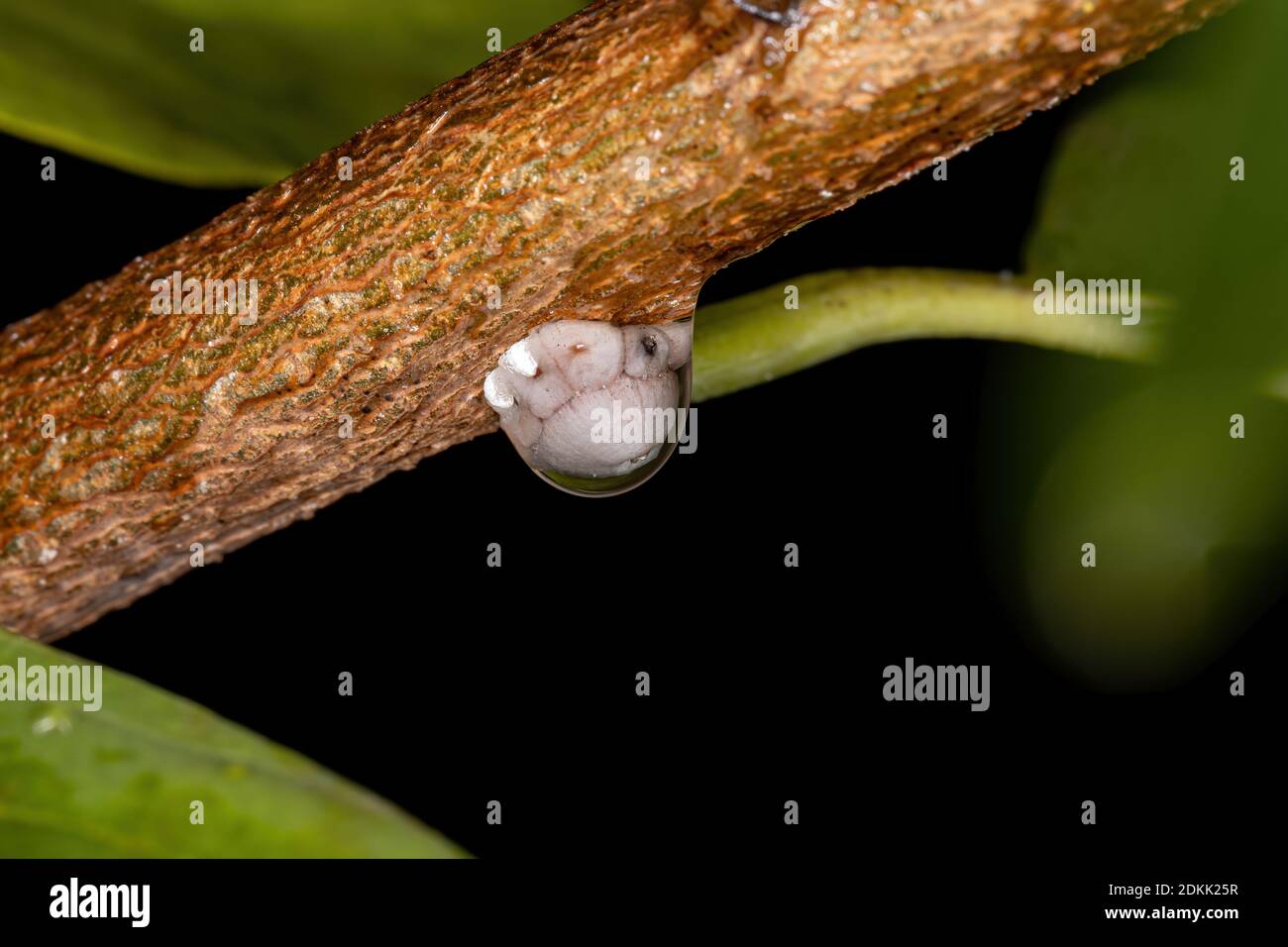 Wax Scale of the Genus Ceroplastes Stock Photohttps://www.alamy.com/image-license-details/?v=1https://www.alamy.com/wax-scale-of-the-genus-ceroplastes-image390725379.html
Wax Scale of the Genus Ceroplastes Stock Photohttps://www.alamy.com/image-license-details/?v=1https://www.alamy.com/wax-scale-of-the-genus-ceroplastes-image390725379.htmlRF2DKK25R–Wax Scale of the Genus Ceroplastes
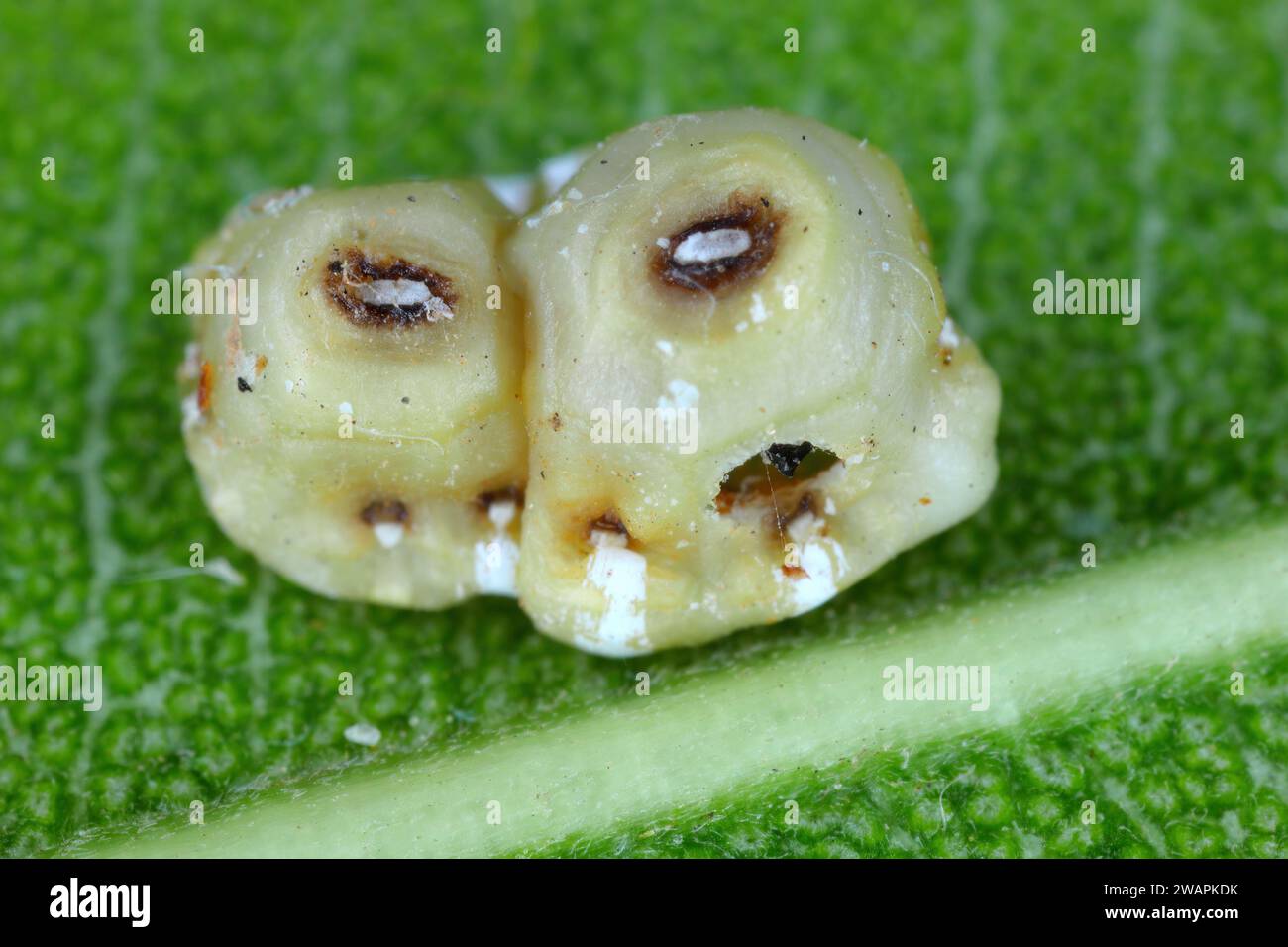 Fig wax scale (scientific name: Ceroplastes rusci, Coccidae). Insect reported as a significant pest of citrus and many other crops and ornamental Stock Photohttps://www.alamy.com/image-license-details/?v=1https://www.alamy.com/fig-wax-scale-scientific-name-ceroplastes-rusci-coccidae-insect-reported-as-a-significant-pest-of-citrus-and-many-other-crops-and-ornamental-image591797295.html
Fig wax scale (scientific name: Ceroplastes rusci, Coccidae). Insect reported as a significant pest of citrus and many other crops and ornamental Stock Photohttps://www.alamy.com/image-license-details/?v=1https://www.alamy.com/fig-wax-scale-scientific-name-ceroplastes-rusci-coccidae-insect-reported-as-a-significant-pest-of-citrus-and-many-other-crops-and-ornamental-image591797295.htmlRF2WAPKDK–Fig wax scale (scientific name: Ceroplastes rusci, Coccidae). Insect reported as a significant pest of citrus and many other crops and ornamental
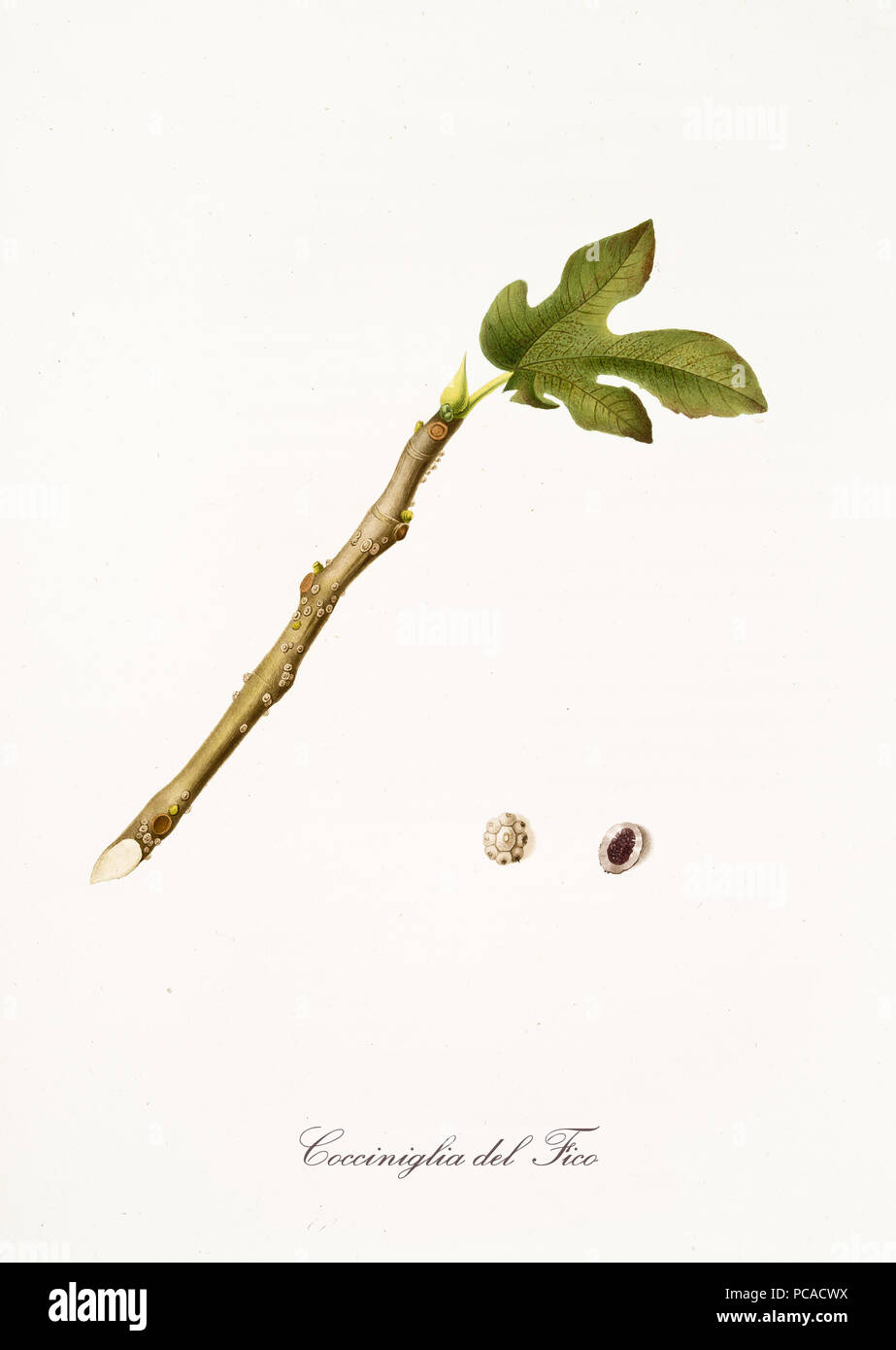 Fig wax scales on fig branch and detail of one of them with section isolated on white background. Old botanical illustration realized with a detailed watercolor by Giorgio Gallesio on 1817, 1839 Stock Photohttps://www.alamy.com/image-license-details/?v=1https://www.alamy.com/fig-wax-scales-on-fig-branch-and-detail-of-one-of-them-with-section-isolated-on-white-background-old-botanical-illustration-realized-with-a-detailed-watercolor-by-giorgio-gallesio-on-1817-1839-image214129942.html
Fig wax scales on fig branch and detail of one of them with section isolated on white background. Old botanical illustration realized with a detailed watercolor by Giorgio Gallesio on 1817, 1839 Stock Photohttps://www.alamy.com/image-license-details/?v=1https://www.alamy.com/fig-wax-scales-on-fig-branch-and-detail-of-one-of-them-with-section-isolated-on-white-background-old-botanical-illustration-realized-with-a-detailed-watercolor-by-giorgio-gallesio-on-1817-1839-image214129942.htmlRFPCACWX–Fig wax scales on fig branch and detail of one of them with section isolated on white background. Old botanical illustration realized with a detailed watercolor by Giorgio Gallesio on 1817, 1839
 Giant pine scale (Marchalina hellenica) on pine tree branch Stock Photohttps://www.alamy.com/image-license-details/?v=1https://www.alamy.com/giant-pine-scale-marchalina-hellenica-on-pine-tree-branch-image343748188.html
Giant pine scale (Marchalina hellenica) on pine tree branch Stock Photohttps://www.alamy.com/image-license-details/?v=1https://www.alamy.com/giant-pine-scale-marchalina-hellenica-on-pine-tree-branch-image343748188.htmlRF2AY7290–Giant pine scale (Marchalina hellenica) on pine tree branch
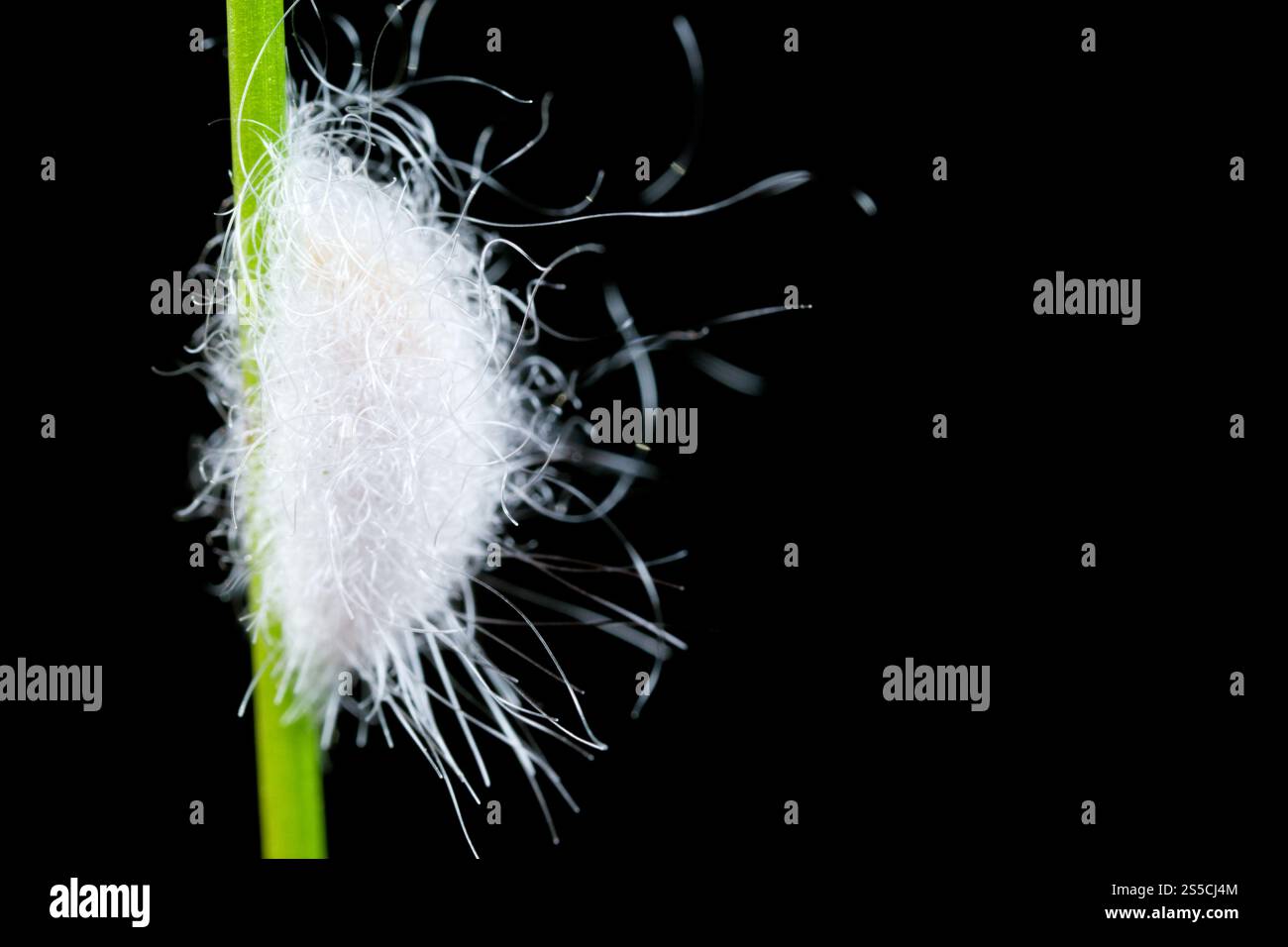 Ovisac of a cottony scale insect (Eriopeltis) Stock Photohttps://www.alamy.com/image-license-details/?v=1https://www.alamy.com/ovisac-of-a-cottony-scale-insect-eriopeltis-image640134564.html
Ovisac of a cottony scale insect (Eriopeltis) Stock Photohttps://www.alamy.com/image-license-details/?v=1https://www.alamy.com/ovisac-of-a-cottony-scale-insect-eriopeltis-image640134564.htmlRF2S5CJ4M–Ovisac of a cottony scale insect (Eriopeltis)
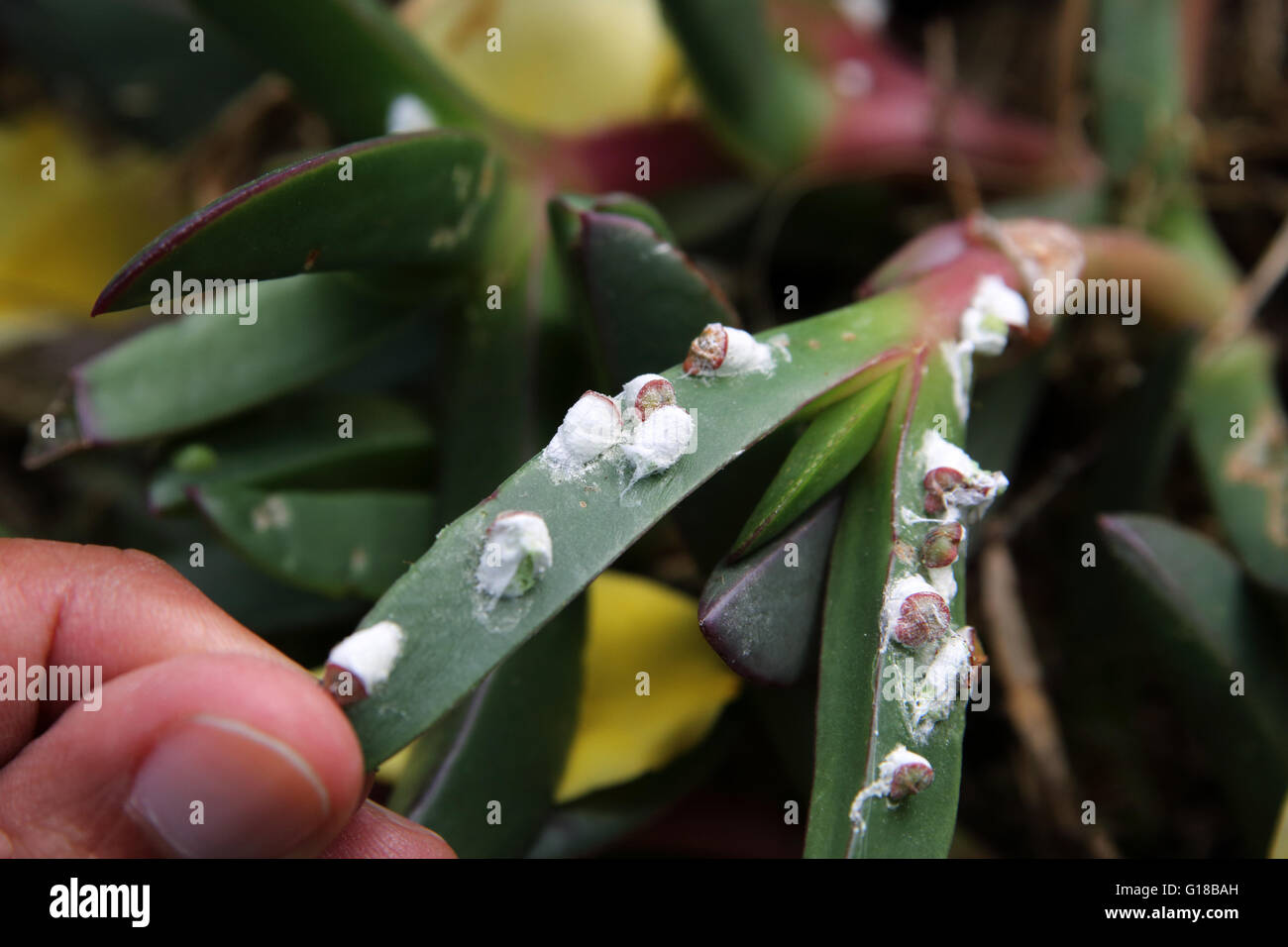 Close up of Pulvinaria innumerabilis or known as Cottony Maple Scale on succulent Stock Photohttps://www.alamy.com/image-license-details/?v=1https://www.alamy.com/stock-photo-close-up-of-pulvinaria-innumerabilis-or-known-as-cottony-maple-scale-104061401.html
Close up of Pulvinaria innumerabilis or known as Cottony Maple Scale on succulent Stock Photohttps://www.alamy.com/image-license-details/?v=1https://www.alamy.com/stock-photo-close-up-of-pulvinaria-innumerabilis-or-known-as-cottony-maple-scale-104061401.htmlRMG18BAH–Close up of Pulvinaria innumerabilis or known as Cottony Maple Scale on succulent
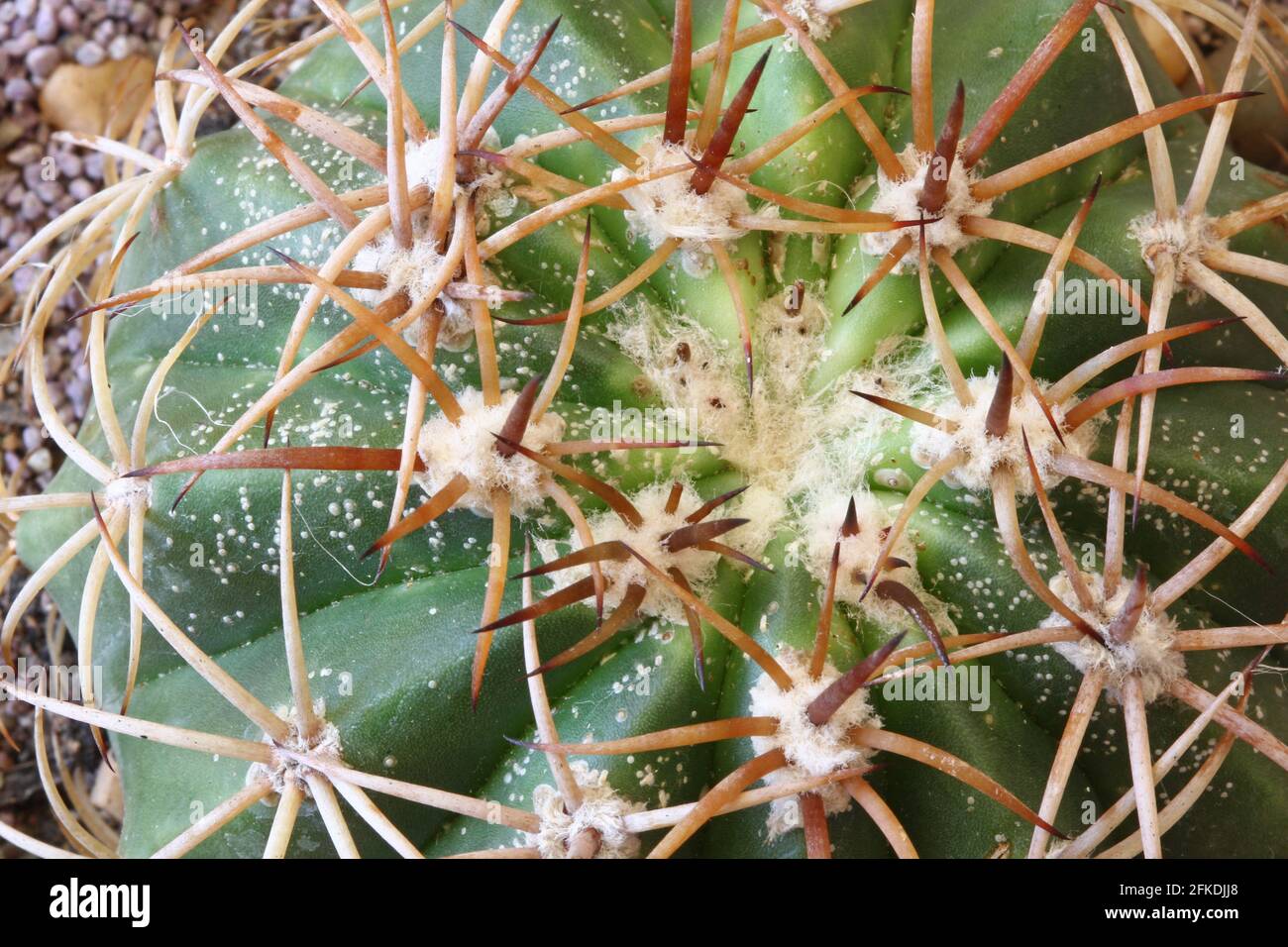 Close up of Scale Insects all over Cactus Stock Photohttps://www.alamy.com/image-license-details/?v=1https://www.alamy.com/close-up-of-scale-insects-all-over-cactus-image425027296.html
Close up of Scale Insects all over Cactus Stock Photohttps://www.alamy.com/image-license-details/?v=1https://www.alamy.com/close-up-of-scale-insects-all-over-cactus-image425027296.htmlRF2FKDJJ8–Close up of Scale Insects all over Cactus
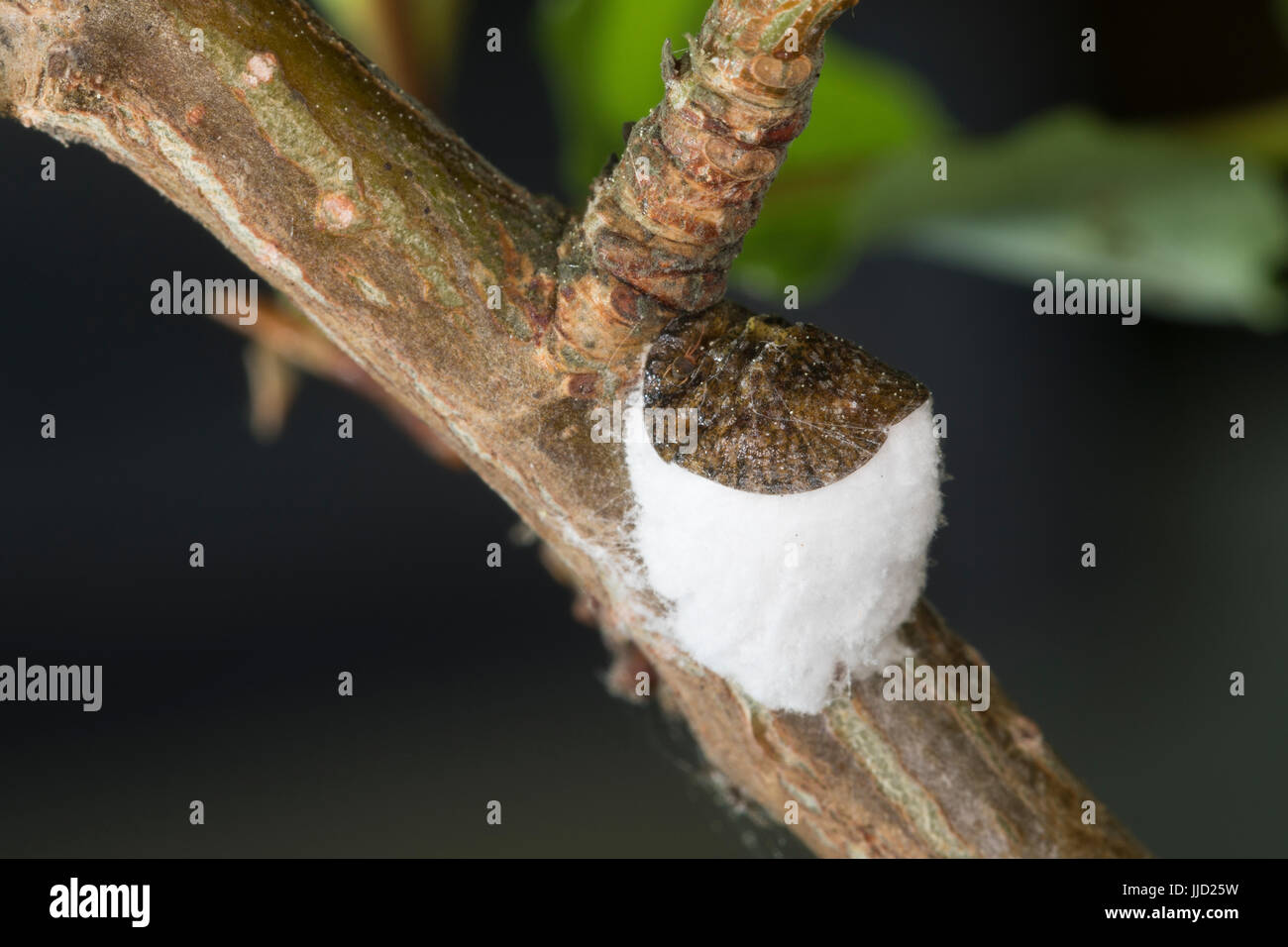 Napfschildlaus, Napf-Schildlaus, Schildlaus, Wollige Rebenschildlaus, Pulvinaria vitis, cottony grape scale, Napfschildläuse, Schildläuse, Coccidae, s Stock Photohttps://www.alamy.com/image-license-details/?v=1https://www.alamy.com/stock-photo-napfschildlaus-napf-schildlaus-schildlaus-wollige-rebenschildlaus-149033861.html
Napfschildlaus, Napf-Schildlaus, Schildlaus, Wollige Rebenschildlaus, Pulvinaria vitis, cottony grape scale, Napfschildläuse, Schildläuse, Coccidae, s Stock Photohttps://www.alamy.com/image-license-details/?v=1https://www.alamy.com/stock-photo-napfschildlaus-napf-schildlaus-schildlaus-wollige-rebenschildlaus-149033861.htmlRMJJD25W–Napfschildlaus, Napf-Schildlaus, Schildlaus, Wollige Rebenschildlaus, Pulvinaria vitis, cottony grape scale, Napfschildläuse, Schildläuse, Coccidae, s
 Scale insect. Coloured scanning electron micrograph (SEM) of a scale insect (superfamily Coccoidea) on a leaf. This pest feeds on the plant's sap. It secretes a powdery wax coating that protects it against pesticides and predators. Many scale species are serious crop pests and are particularly problematic for their ability to evade quarantine measures. Magnification: x150 when printed at 10 centimetres wide. Stock Photohttps://www.alamy.com/image-license-details/?v=1https://www.alamy.com/scale-insect-coloured-scanning-electron-micrograph-sem-of-a-scale-insect-superfamily-coccoidea-on-a-leaf-this-pest-feeds-on-the-plants-sap-it-secretes-a-powdery-wax-coating-that-protects-it-against-pesticides-and-predators-many-scale-species-are-serious-crop-pests-and-are-particularly-problematic-for-their-ability-to-evade-quarantine-measures-magnification-x150-when-printed-at-10-centimetres-wide-image623982838.html
Scale insect. Coloured scanning electron micrograph (SEM) of a scale insect (superfamily Coccoidea) on a leaf. This pest feeds on the plant's sap. It secretes a powdery wax coating that protects it against pesticides and predators. Many scale species are serious crop pests and are particularly problematic for their ability to evade quarantine measures. Magnification: x150 when printed at 10 centimetres wide. Stock Photohttps://www.alamy.com/image-license-details/?v=1https://www.alamy.com/scale-insect-coloured-scanning-electron-micrograph-sem-of-a-scale-insect-superfamily-coccoidea-on-a-leaf-this-pest-feeds-on-the-plants-sap-it-secretes-a-powdery-wax-coating-that-protects-it-against-pesticides-and-predators-many-scale-species-are-serious-crop-pests-and-are-particularly-problematic-for-their-ability-to-evade-quarantine-measures-magnification-x150-when-printed-at-10-centimetres-wide-image623982838.htmlRF2Y74TDA–Scale insect. Coloured scanning electron micrograph (SEM) of a scale insect (superfamily Coccoidea) on a leaf. This pest feeds on the plant's sap. It secretes a powdery wax coating that protects it against pesticides and predators. Many scale species are serious crop pests and are particularly problematic for their ability to evade quarantine measures. Magnification: x150 when printed at 10 centimetres wide.
 Macro image of Scale insects on Syzgium samarangense leaf, other names include soft scales, wax scales or tortoise scales. Stock Photohttps://www.alamy.com/image-license-details/?v=1https://www.alamy.com/stock-photo-macro-image-of-scale-insects-on-syzgium-samarangense-leaf-other-names-102235328.html
Macro image of Scale insects on Syzgium samarangense leaf, other names include soft scales, wax scales or tortoise scales. Stock Photohttps://www.alamy.com/image-license-details/?v=1https://www.alamy.com/stock-photo-macro-image-of-scale-insects-on-syzgium-samarangense-leaf-other-names-102235328.htmlRMFX965M–Macro image of Scale insects on Syzgium samarangense leaf, other names include soft scales, wax scales or tortoise scales.
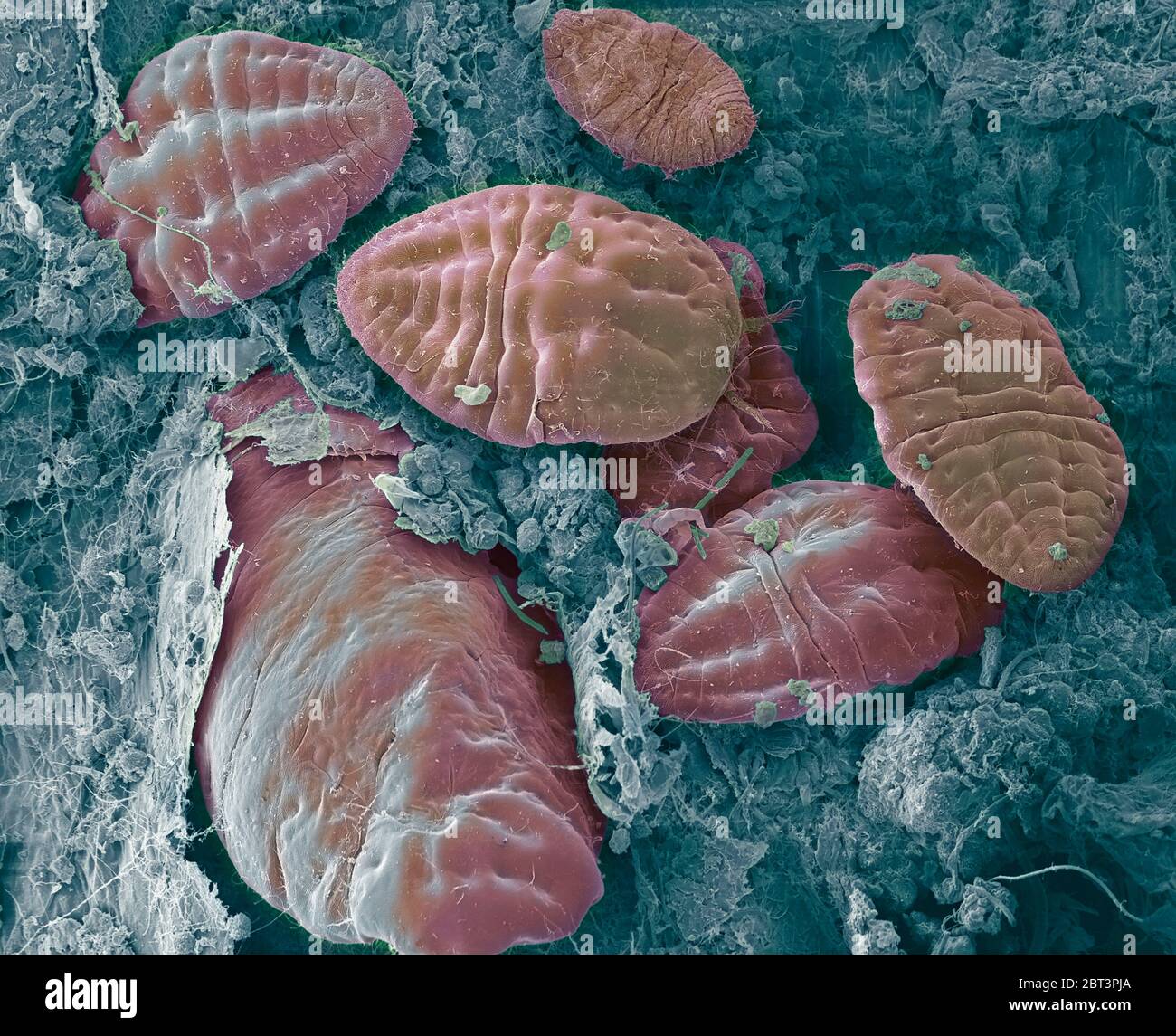 Scale insects. Coloured scanning electron micrograph (SEM) of scale insects (superfamily Coccoidea) on a leaf. This pest feeds on the plant's sap. It secretes a powdery wax coating that protects it against pesticides and predators. Magnification: x50 when printed at 10 centimetres wide. Stock Photohttps://www.alamy.com/image-license-details/?v=1https://www.alamy.com/scale-insects-coloured-scanning-electron-micrograph-sem-of-scale-insects-superfamily-coccoidea-on-a-leaf-this-pest-feeds-on-the-plants-sap-it-secretes-a-powdery-wax-coating-that-protects-it-against-pesticides-and-predators-magnification-x50-when-printed-at-10-centimetres-wide-image359042722.html
Scale insects. Coloured scanning electron micrograph (SEM) of scale insects (superfamily Coccoidea) on a leaf. This pest feeds on the plant's sap. It secretes a powdery wax coating that protects it against pesticides and predators. Magnification: x50 when printed at 10 centimetres wide. Stock Photohttps://www.alamy.com/image-license-details/?v=1https://www.alamy.com/scale-insects-coloured-scanning-electron-micrograph-sem-of-scale-insects-superfamily-coccoidea-on-a-leaf-this-pest-feeds-on-the-plants-sap-it-secretes-a-powdery-wax-coating-that-protects-it-against-pesticides-and-predators-magnification-x50-when-printed-at-10-centimetres-wide-image359042722.htmlRF2BT3PJA–Scale insects. Coloured scanning electron micrograph (SEM) of scale insects (superfamily Coccoidea) on a leaf. This pest feeds on the plant's sap. It secretes a powdery wax coating that protects it against pesticides and predators. Magnification: x50 when printed at 10 centimetres wide.
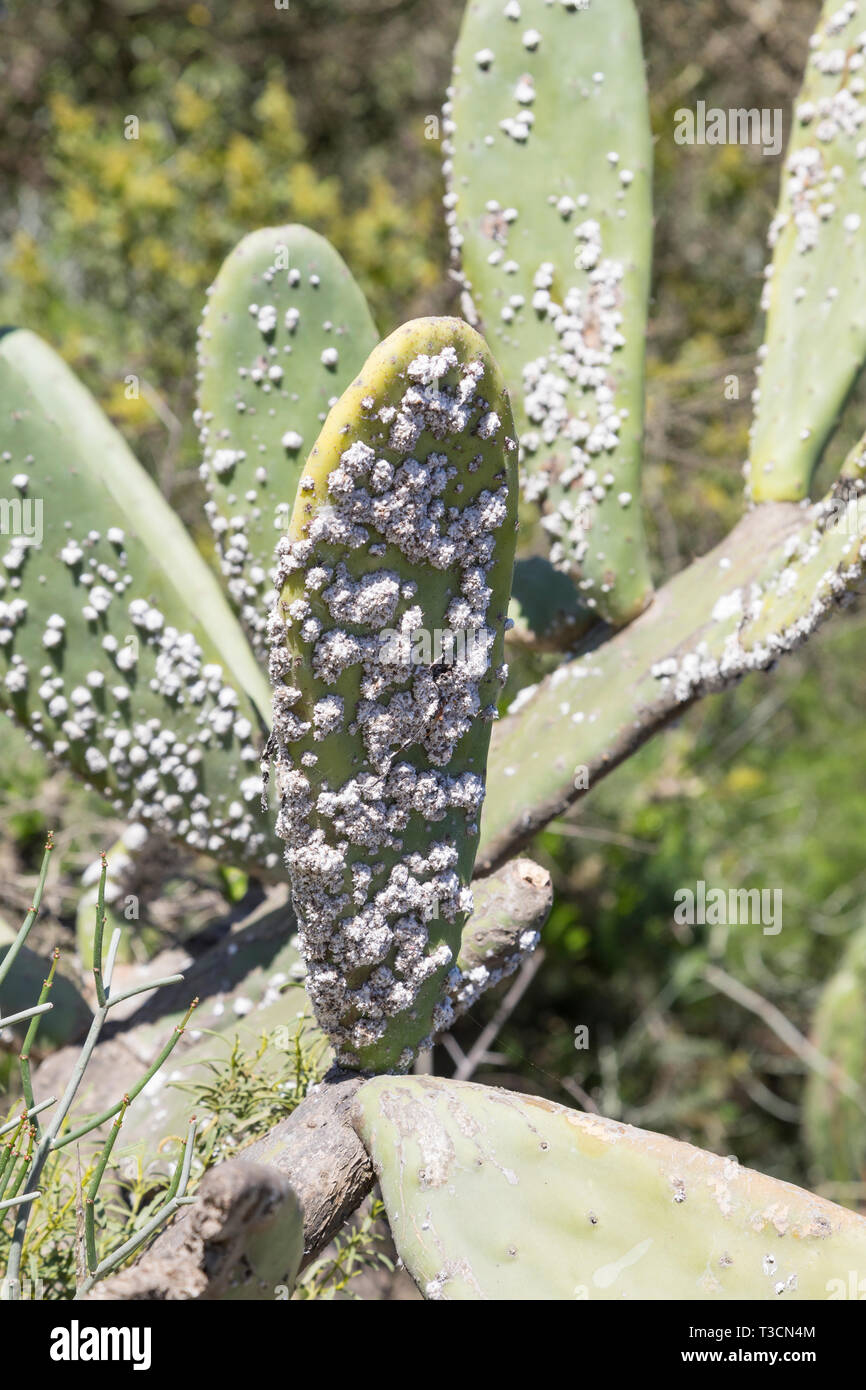 Biological control of invasive Opuntia cacti in South Africa by introduction of cochineal insect Dactylopius opuntia, colony consisting of wax-covered Stock Photohttps://www.alamy.com/image-license-details/?v=1https://www.alamy.com/biological-control-of-invasive-opuntia-cacti-in-south-africa-by-introduction-of-cochineal-insect-dactylopius-opuntia-colony-consisting-of-wax-covered-image243069140.html
Biological control of invasive Opuntia cacti in South Africa by introduction of cochineal insect Dactylopius opuntia, colony consisting of wax-covered Stock Photohttps://www.alamy.com/image-license-details/?v=1https://www.alamy.com/biological-control-of-invasive-opuntia-cacti-in-south-africa-by-introduction-of-cochineal-insect-dactylopius-opuntia-colony-consisting-of-wax-covered-image243069140.htmlRMT3CN4M–Biological control of invasive Opuntia cacti in South Africa by introduction of cochineal insect Dactylopius opuntia, colony consisting of wax-covered
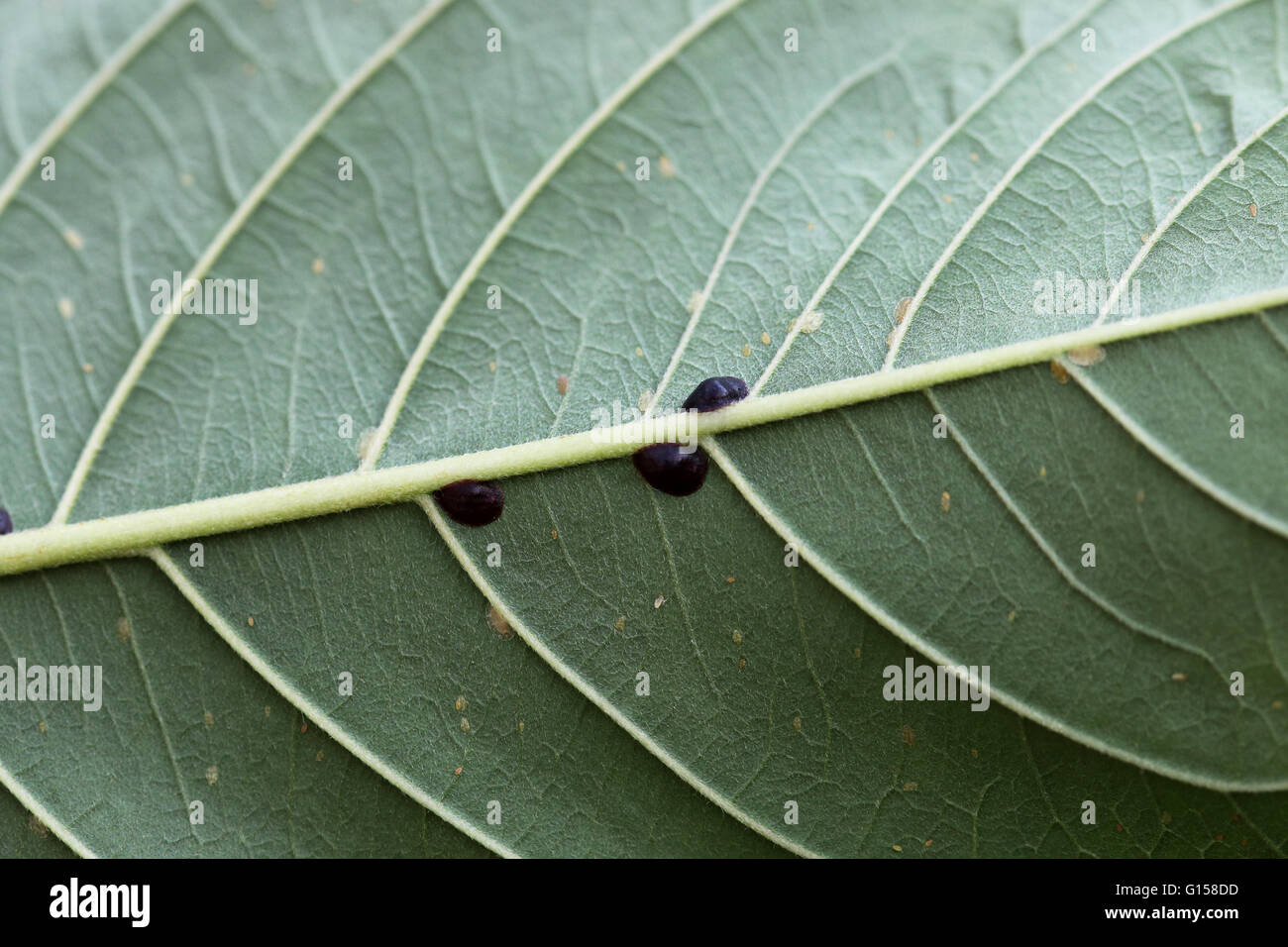 Macro image of Scale insects on guava leaf, other names include soft scales, wax scales or tortoise scales. Stock Photohttps://www.alamy.com/image-license-details/?v=1https://www.alamy.com/stock-photo-macro-image-of-scale-insects-on-guava-leaf-other-names-include-soft-103993273.html
Macro image of Scale insects on guava leaf, other names include soft scales, wax scales or tortoise scales. Stock Photohttps://www.alamy.com/image-license-details/?v=1https://www.alamy.com/stock-photo-macro-image-of-scale-insects-on-guava-leaf-other-names-include-soft-103993273.htmlRMG158DD–Macro image of Scale insects on guava leaf, other names include soft scales, wax scales or tortoise scales.
 Viburnum cushion scale insect, on underside of Viburnum tinus leaves, start of infestation, white wax-wol are formed into an ovisac Stock Photohttps://www.alamy.com/image-license-details/?v=1https://www.alamy.com/viburnum-cushion-scale-insect-on-underside-of-viburnum-tinus-leaves-start-of-infestation-white-wax-wol-are-formed-into-an-ovisac-image257384416.html
Viburnum cushion scale insect, on underside of Viburnum tinus leaves, start of infestation, white wax-wol are formed into an ovisac Stock Photohttps://www.alamy.com/image-license-details/?v=1https://www.alamy.com/viburnum-cushion-scale-insect-on-underside-of-viburnum-tinus-leaves-start-of-infestation-white-wax-wol-are-formed-into-an-ovisac-image257384416.htmlRMTXMTCG–Viburnum cushion scale insect, on underside of Viburnum tinus leaves, start of infestation, white wax-wol are formed into an ovisac
 Pronounced network with wax ducts, wax threads and glandular deposits from whiteflies, from the Aleyrodidae family, here on the underside of a baban l Stock Photohttps://www.alamy.com/image-license-details/?v=1https://www.alamy.com/pronounced-network-with-wax-ducts-wax-threads-and-glandular-deposits-from-whiteflies-from-the-aleyrodidae-family-here-on-the-underside-of-a-baban-l-image447087922.html
Pronounced network with wax ducts, wax threads and glandular deposits from whiteflies, from the Aleyrodidae family, here on the underside of a baban l Stock Photohttps://www.alamy.com/image-license-details/?v=1https://www.alamy.com/pronounced-network-with-wax-ducts-wax-threads-and-glandular-deposits-from-whiteflies-from-the-aleyrodidae-family-here-on-the-underside-of-a-baban-l-image447087922.htmlRF2GYAH5P–Pronounced network with wax ducts, wax threads and glandular deposits from whiteflies, from the Aleyrodidae family, here on the underside of a baban l
 coccids scale insects mealybugs Stock Photohttps://www.alamy.com/image-license-details/?v=1https://www.alamy.com/stock-photo-coccids-scale-insects-mealybugs-133109871.html
coccids scale insects mealybugs Stock Photohttps://www.alamy.com/image-license-details/?v=1https://www.alamy.com/stock-photo-coccids-scale-insects-mealybugs-133109871.htmlRMHMFJYY–coccids scale insects mealybugs
 Shell-like waxy covering of Scale insect., vintage line drawing or engraving illustration. Stock Vectorhttps://www.alamy.com/image-license-details/?v=1https://www.alamy.com/shell-like-waxy-covering-of-scale-insect-vintage-line-drawing-or-engraving-illustration-image367214601.html
Shell-like waxy covering of Scale insect., vintage line drawing or engraving illustration. Stock Vectorhttps://www.alamy.com/image-license-details/?v=1https://www.alamy.com/shell-like-waxy-covering-of-scale-insect-vintage-line-drawing-or-engraving-illustration-image367214601.htmlRF2C9C1Y5–Shell-like waxy covering of Scale insect., vintage line drawing or engraving illustration.
 large scale production of edible insects (crickets) in Holland Stock Photohttps://www.alamy.com/image-license-details/?v=1https://www.alamy.com/stock-photo-large-scale-production-of-edible-insects-crickets-in-holland-102767373.html
large scale production of edible insects (crickets) in Holland Stock Photohttps://www.alamy.com/image-license-details/?v=1https://www.alamy.com/stock-photo-large-scale-production-of-edible-insects-crickets-in-holland-102767373.htmlRMFY5CR9–large scale production of edible insects (crickets) in Holland
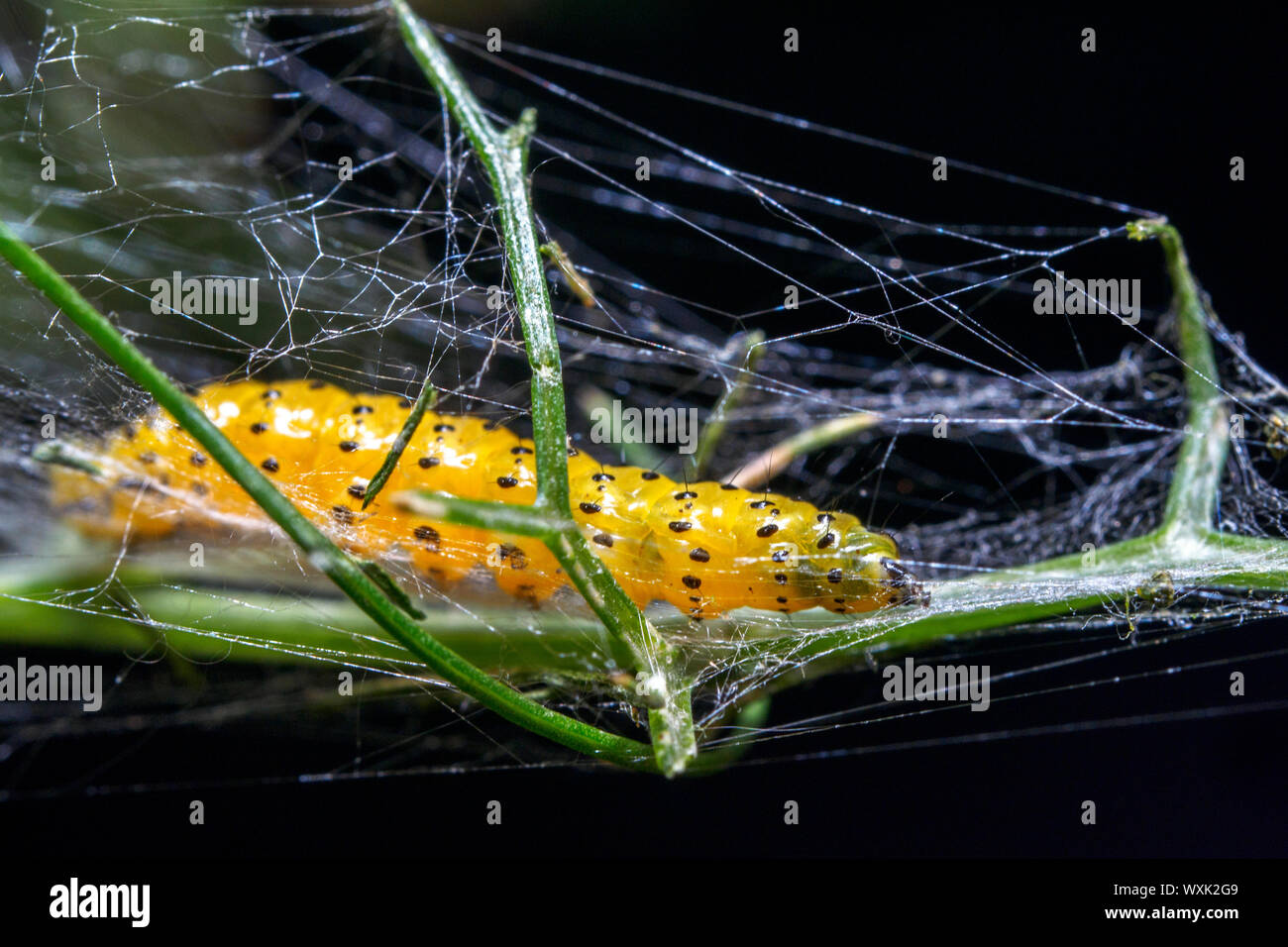 Waxworms are the caterpillar larvae of wax moths Stock Photohttps://www.alamy.com/image-license-details/?v=1https://www.alamy.com/waxworms-are-the-caterpillar-larvae-of-wax-moths-image274555689.html
Waxworms are the caterpillar larvae of wax moths Stock Photohttps://www.alamy.com/image-license-details/?v=1https://www.alamy.com/waxworms-are-the-caterpillar-larvae-of-wax-moths-image274555689.htmlRMWXK2G9–Waxworms are the caterpillar larvae of wax moths
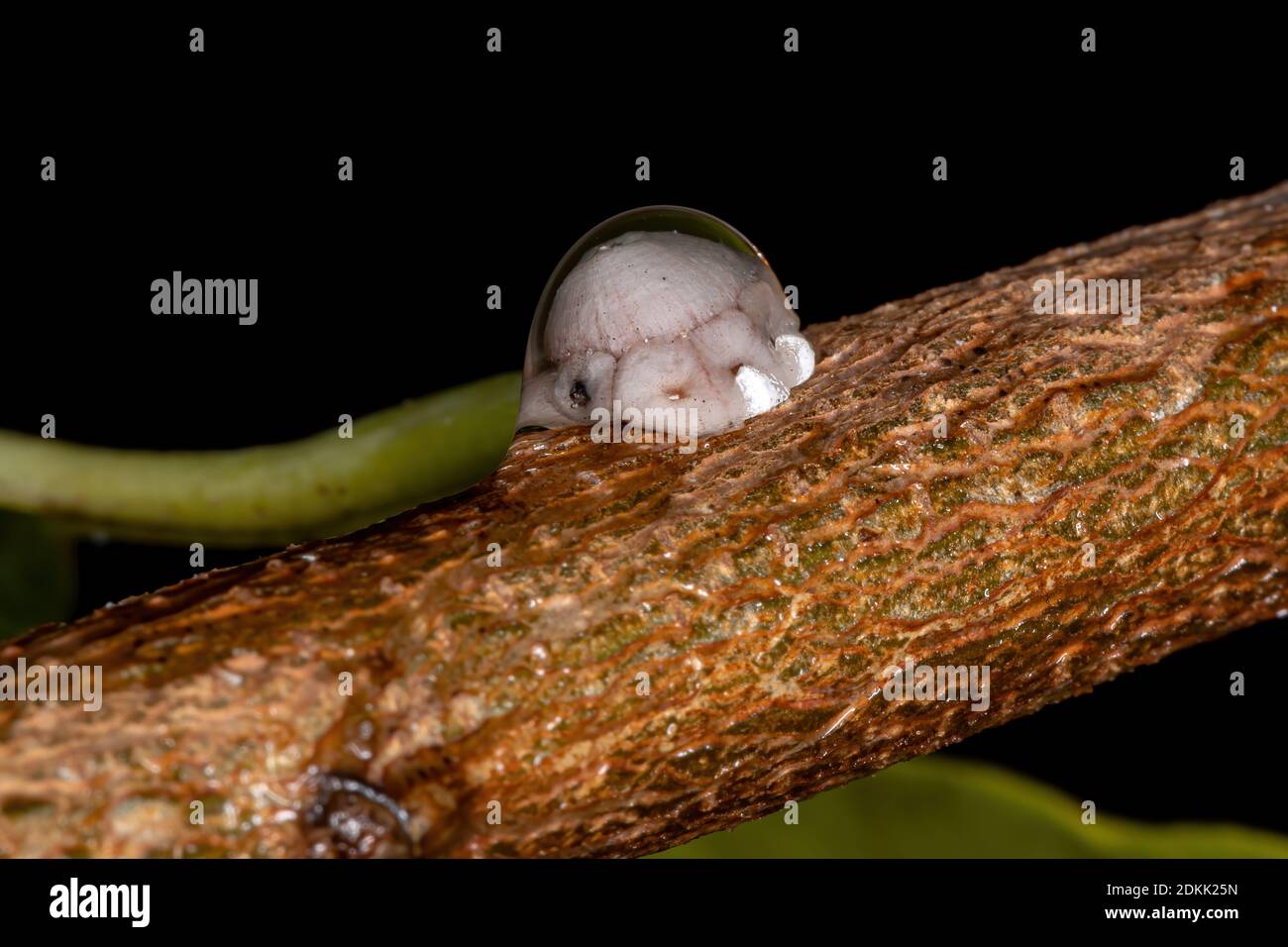 Wax Scale of the Genus Ceroplastes Stock Photohttps://www.alamy.com/image-license-details/?v=1https://www.alamy.com/wax-scale-of-the-genus-ceroplastes-image390725377.html
Wax Scale of the Genus Ceroplastes Stock Photohttps://www.alamy.com/image-license-details/?v=1https://www.alamy.com/wax-scale-of-the-genus-ceroplastes-image390725377.htmlRF2DKK25N–Wax Scale of the Genus Ceroplastes
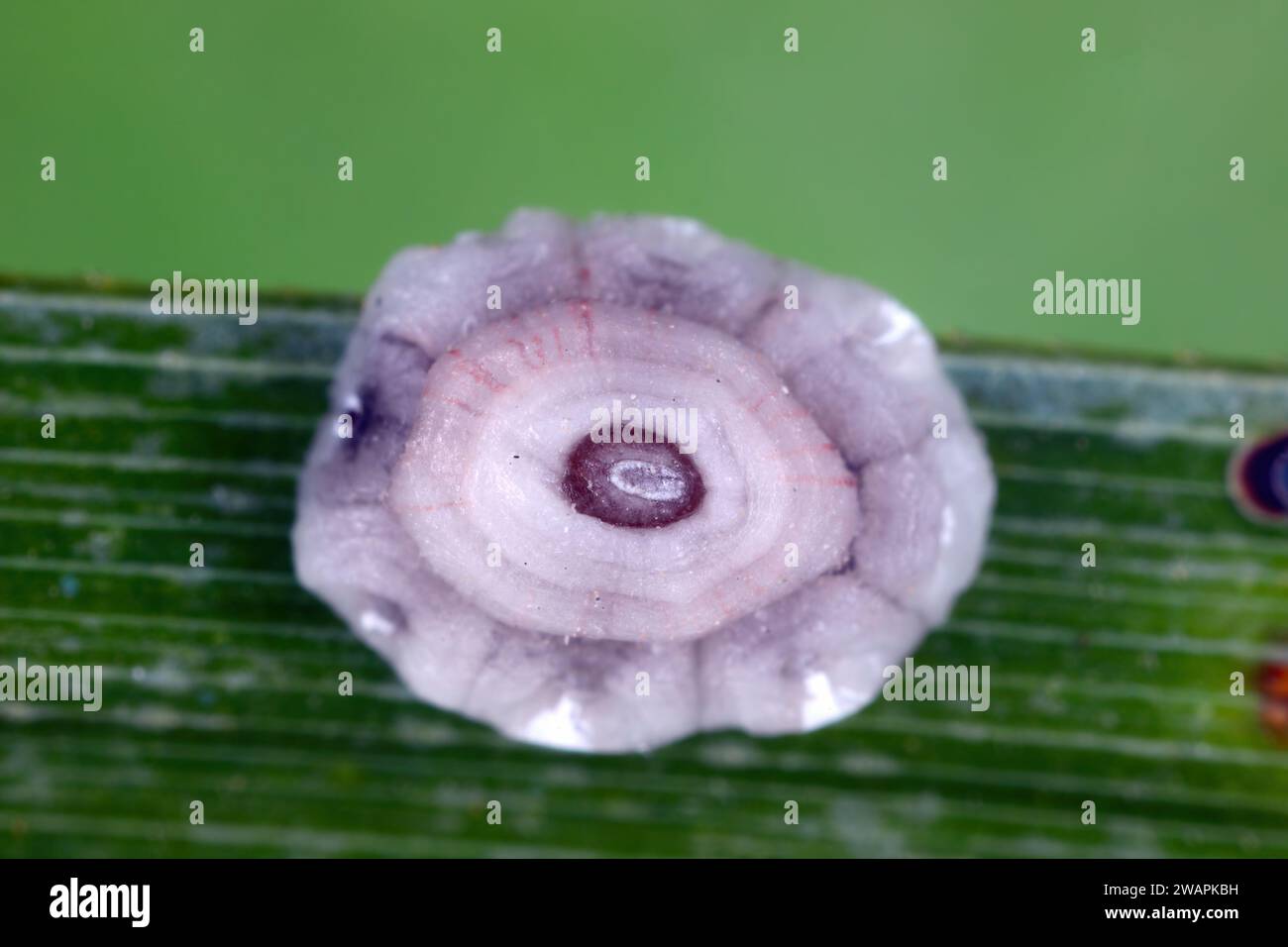 Fig wax scale (scientific name: Ceroplastes rusci, Coccidae). Insect reported as a significant pest of citrus and many other crops and ornamental Stock Photohttps://www.alamy.com/image-license-details/?v=1https://www.alamy.com/fig-wax-scale-scientific-name-ceroplastes-rusci-coccidae-insect-reported-as-a-significant-pest-of-citrus-and-many-other-crops-and-ornamental-image591797237.html
Fig wax scale (scientific name: Ceroplastes rusci, Coccidae). Insect reported as a significant pest of citrus and many other crops and ornamental Stock Photohttps://www.alamy.com/image-license-details/?v=1https://www.alamy.com/fig-wax-scale-scientific-name-ceroplastes-rusci-coccidae-insect-reported-as-a-significant-pest-of-citrus-and-many-other-crops-and-ornamental-image591797237.htmlRF2WAPKBH–Fig wax scale (scientific name: Ceroplastes rusci, Coccidae). Insect reported as a significant pest of citrus and many other crops and ornamental
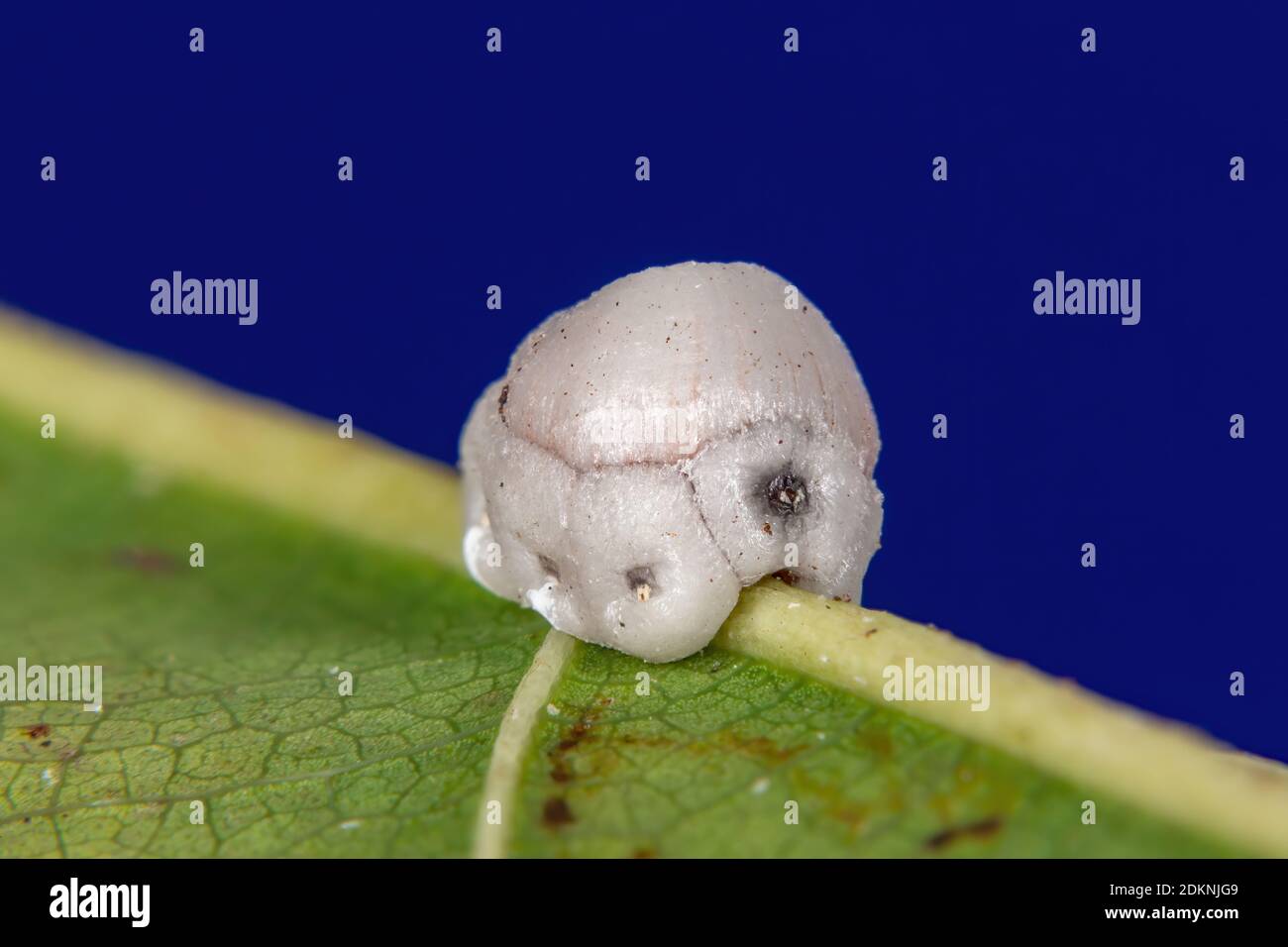 Wax Scale of the Genus Ceroplastes Stock Photohttps://www.alamy.com/image-license-details/?v=1https://www.alamy.com/wax-scale-of-the-genus-ceroplastes-image390782121.html
Wax Scale of the Genus Ceroplastes Stock Photohttps://www.alamy.com/image-license-details/?v=1https://www.alamy.com/wax-scale-of-the-genus-ceroplastes-image390782121.htmlRF2DKNJG9–Wax Scale of the Genus Ceroplastes
 Giant pine scale (Marchalina hellenica) on pine tree branch Stock Photohttps://www.alamy.com/image-license-details/?v=1https://www.alamy.com/giant-pine-scale-marchalina-hellenica-on-pine-tree-branch-image343748924.html
Giant pine scale (Marchalina hellenica) on pine tree branch Stock Photohttps://www.alamy.com/image-license-details/?v=1https://www.alamy.com/giant-pine-scale-marchalina-hellenica-on-pine-tree-branch-image343748924.htmlRF2AY7378–Giant pine scale (Marchalina hellenica) on pine tree branch
 Ovisac of a cottony scale insect (Eriopeltis) Stock Photohttps://www.alamy.com/image-license-details/?v=1https://www.alamy.com/ovisac-of-a-cottony-scale-insect-eriopeltis-image640134576.html
Ovisac of a cottony scale insect (Eriopeltis) Stock Photohttps://www.alamy.com/image-license-details/?v=1https://www.alamy.com/ovisac-of-a-cottony-scale-insect-eriopeltis-image640134576.htmlRF2S5CJ54–Ovisac of a cottony scale insect (Eriopeltis)
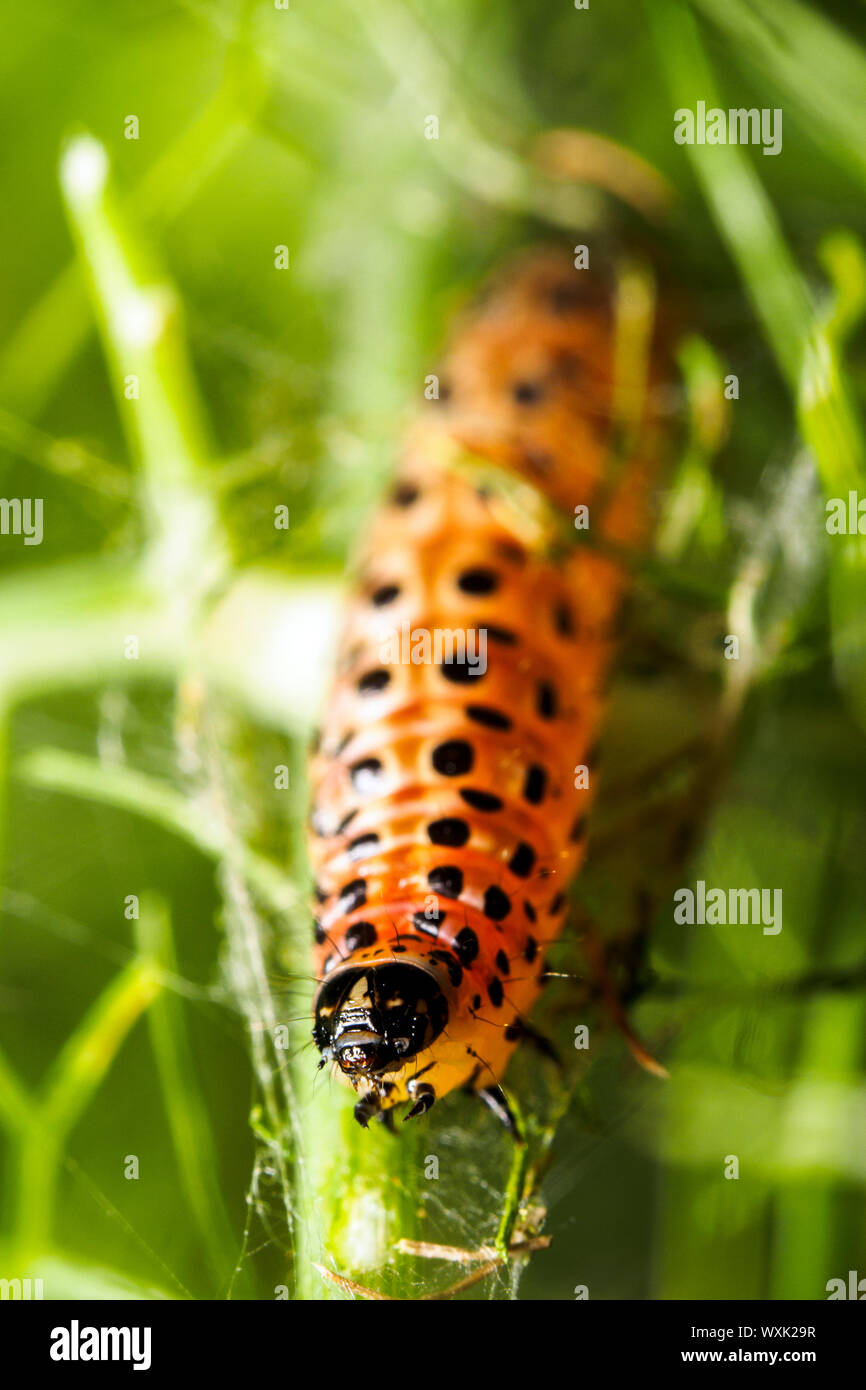 Waxworms are the caterpillar larvae of wax moths Stock Photohttps://www.alamy.com/image-license-details/?v=1https://www.alamy.com/waxworms-are-the-caterpillar-larvae-of-wax-moths-image274555507.html
Waxworms are the caterpillar larvae of wax moths Stock Photohttps://www.alamy.com/image-license-details/?v=1https://www.alamy.com/waxworms-are-the-caterpillar-larvae-of-wax-moths-image274555507.htmlRMWXK29R–Waxworms are the caterpillar larvae of wax moths
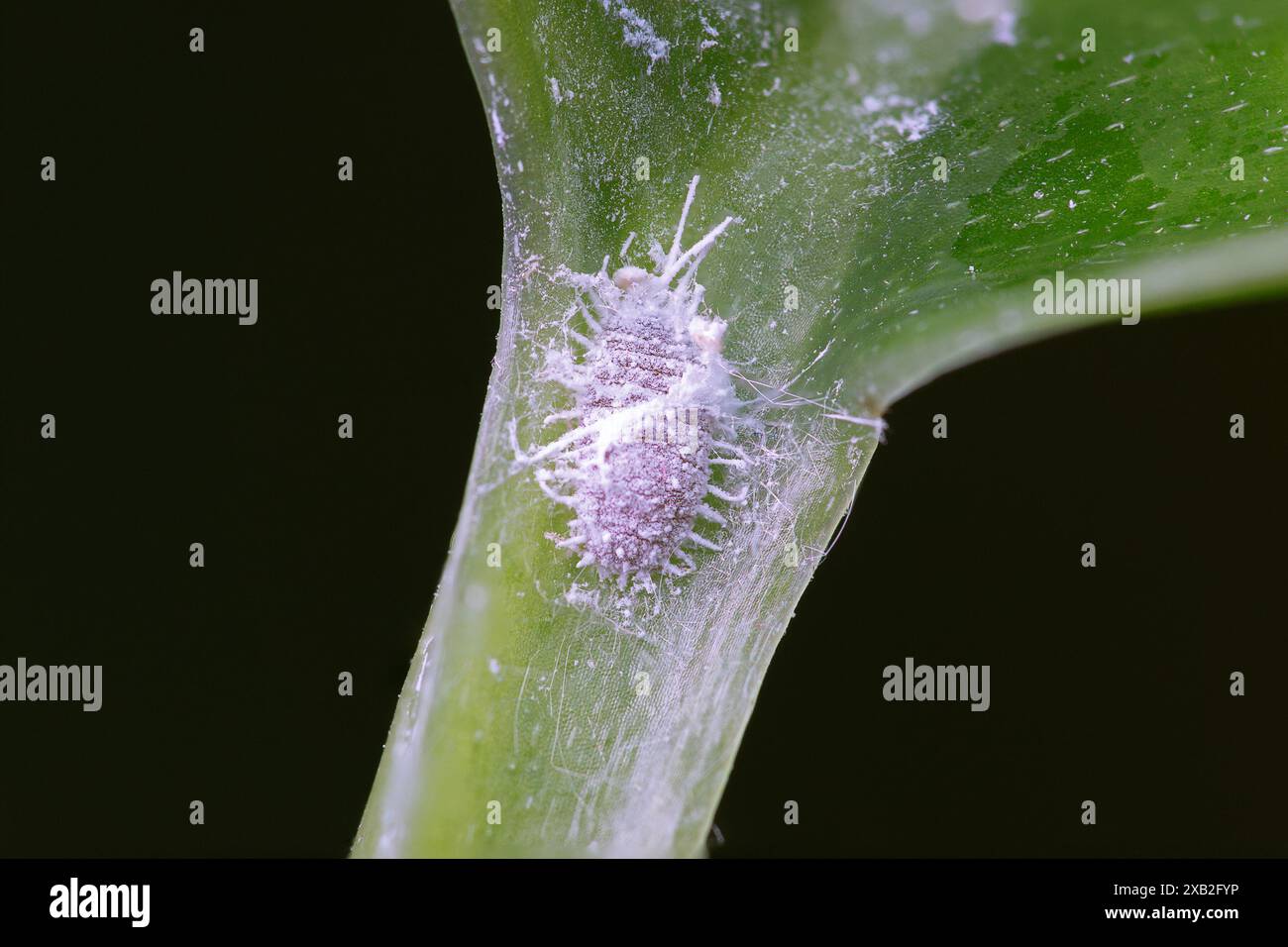 woolly aphid on infested house plant; these creatures are serious pests for houseplants Stock Photohttps://www.alamy.com/image-license-details/?v=1https://www.alamy.com/woolly-aphid-on-infested-house-plant-these-creatures-are-serious-pests-for-houseplants-image609180538.html
woolly aphid on infested house plant; these creatures are serious pests for houseplants Stock Photohttps://www.alamy.com/image-license-details/?v=1https://www.alamy.com/woolly-aphid-on-infested-house-plant-these-creatures-are-serious-pests-for-houseplants-image609180538.htmlRF2XB2FYP–woolly aphid on infested house plant; these creatures are serious pests for houseplants
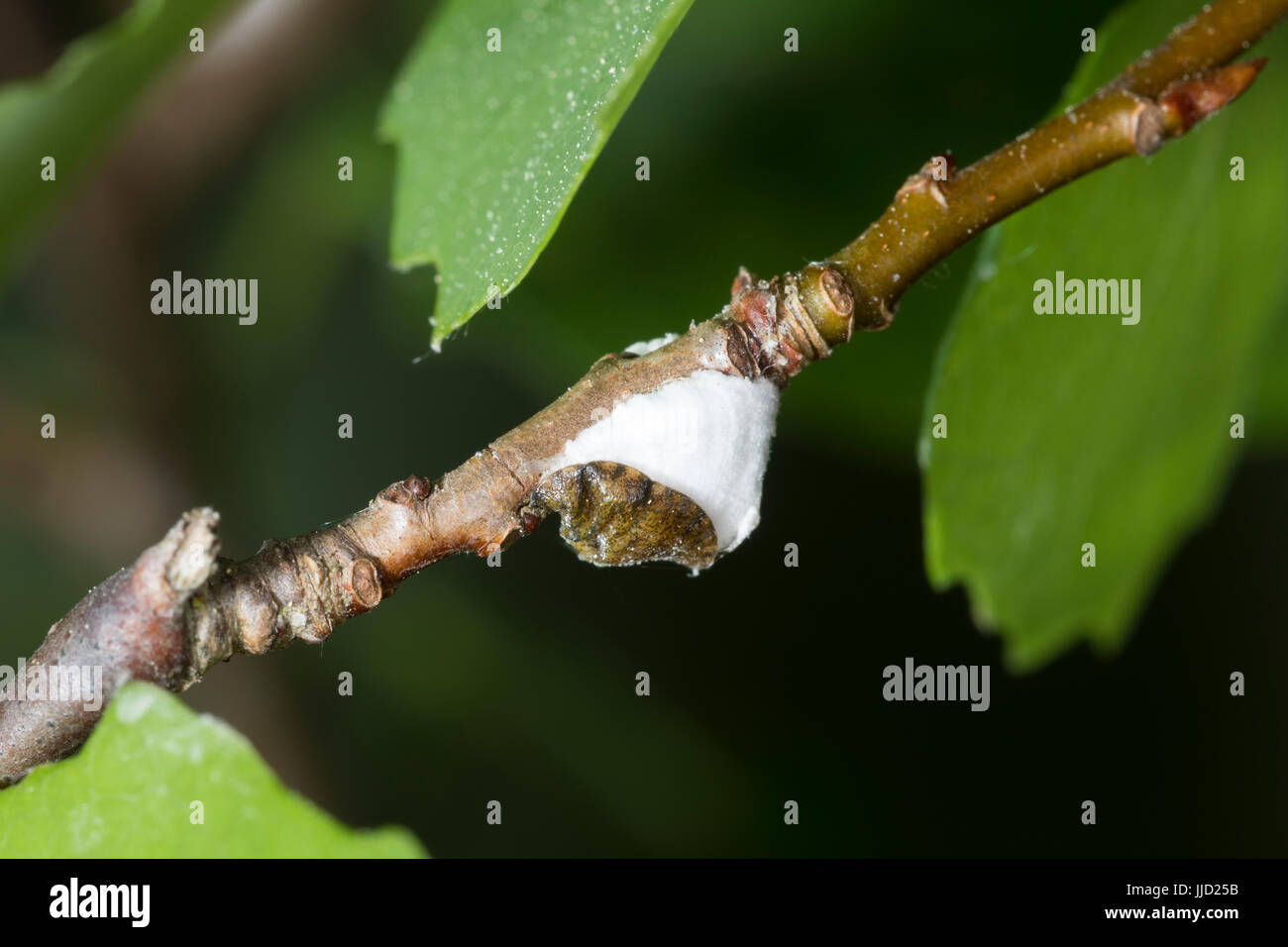 Napfschildlaus, Napf-Schildlaus, Schildlaus, Wollige Rebenschildlaus, Pulvinaria vitis, cottony grape scale, Napfschildläuse, Schildläuse, Coccidae, s Stock Photohttps://www.alamy.com/image-license-details/?v=1https://www.alamy.com/stock-photo-napfschildlaus-napf-schildlaus-schildlaus-wollige-rebenschildlaus-149033847.html
Napfschildlaus, Napf-Schildlaus, Schildlaus, Wollige Rebenschildlaus, Pulvinaria vitis, cottony grape scale, Napfschildläuse, Schildläuse, Coccidae, s Stock Photohttps://www.alamy.com/image-license-details/?v=1https://www.alamy.com/stock-photo-napfschildlaus-napf-schildlaus-schildlaus-wollige-rebenschildlaus-149033847.htmlRMJJD25B–Napfschildlaus, Napf-Schildlaus, Schildlaus, Wollige Rebenschildlaus, Pulvinaria vitis, cottony grape scale, Napfschildläuse, Schildläuse, Coccidae, s
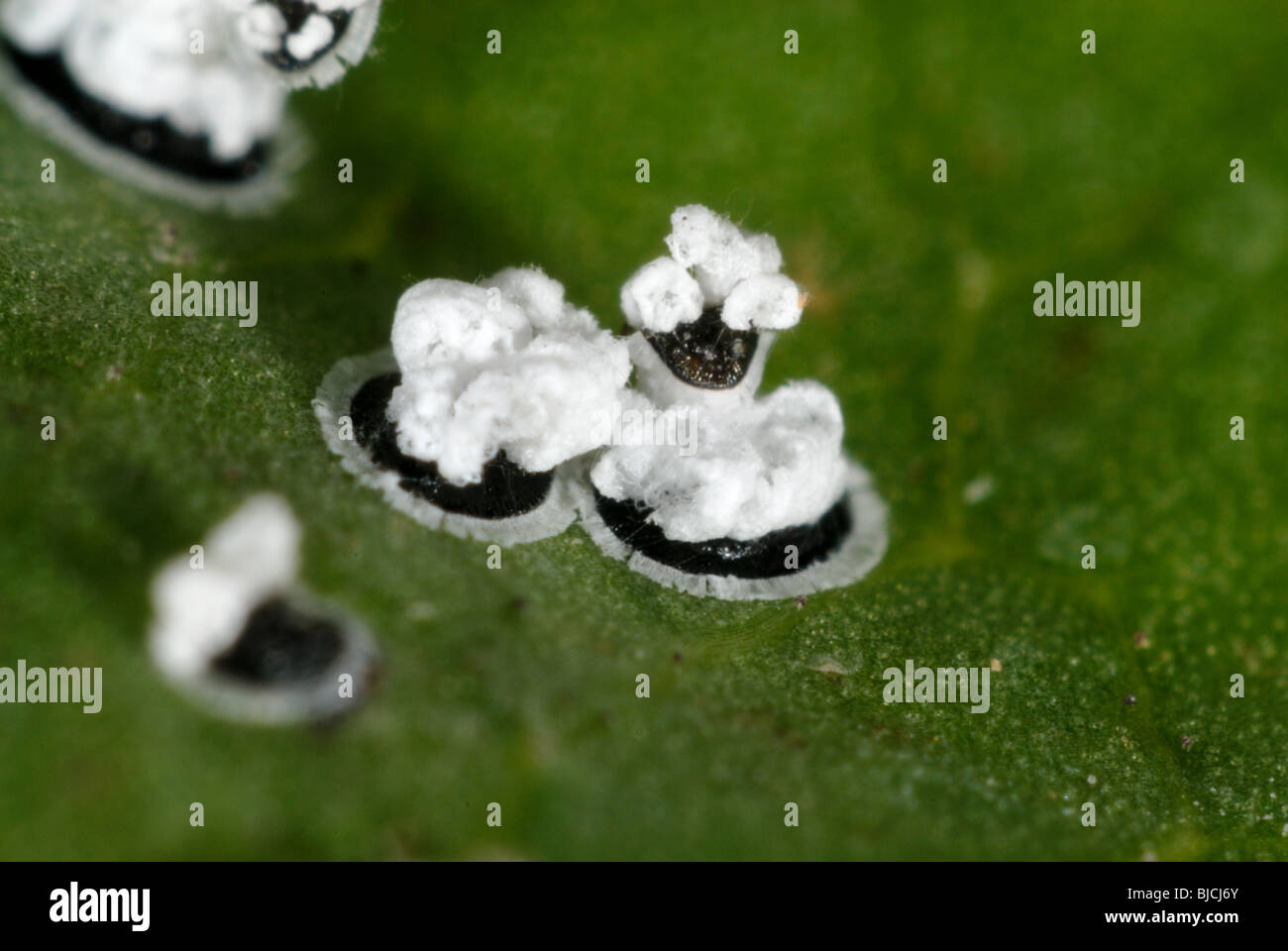 Viburnum whitefly (Aleurotrachelus jelinekii) larvae with waxy protruberances on a viburnum leaf Stock Photohttps://www.alamy.com/image-license-details/?v=1https://www.alamy.com/stock-photo-viburnum-whitefly-aleurotrachelus-jelinekii-larvae-with-waxy-protruberances-28551907.html
Viburnum whitefly (Aleurotrachelus jelinekii) larvae with waxy protruberances on a viburnum leaf Stock Photohttps://www.alamy.com/image-license-details/?v=1https://www.alamy.com/stock-photo-viburnum-whitefly-aleurotrachelus-jelinekii-larvae-with-waxy-protruberances-28551907.htmlRMBJCJ6Y–Viburnum whitefly (Aleurotrachelus jelinekii) larvae with waxy protruberances on a viburnum leaf
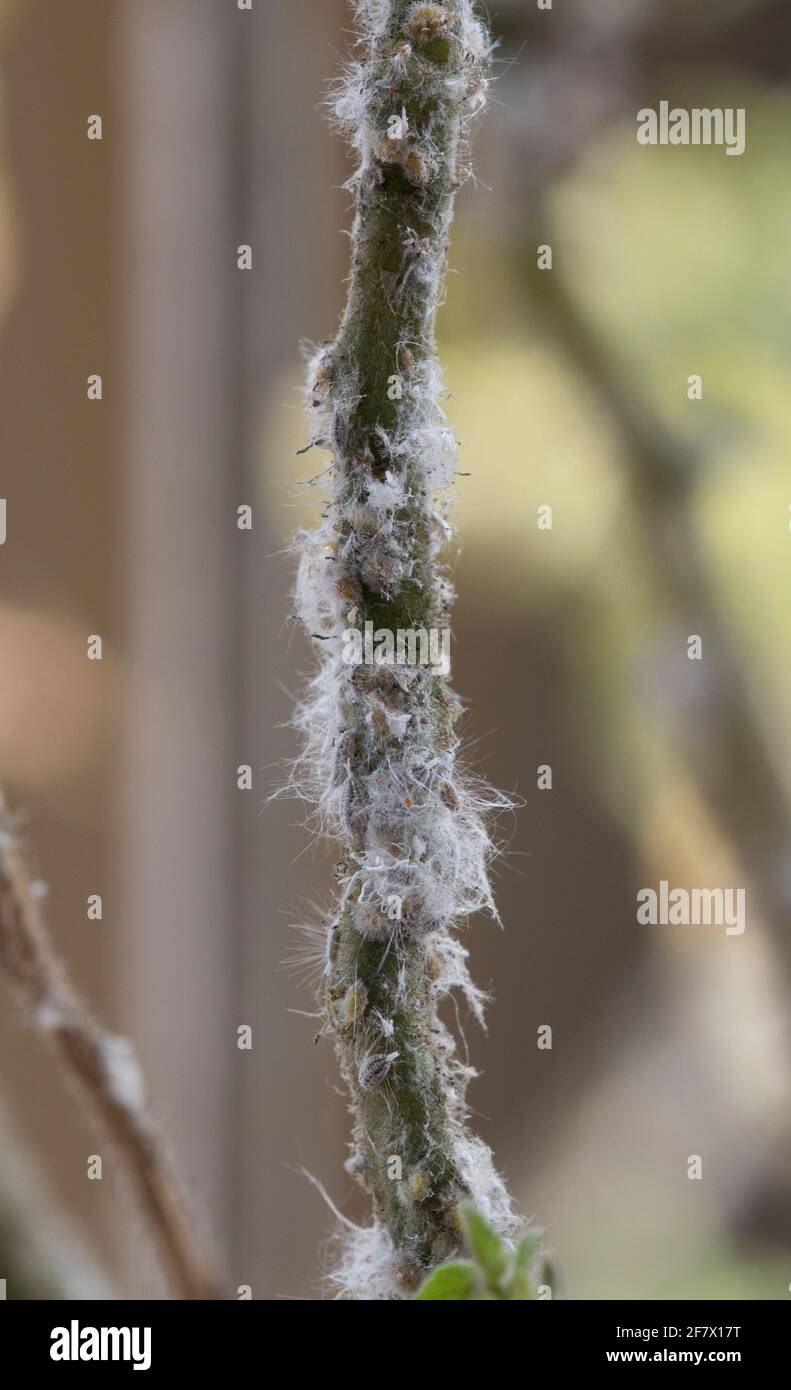 Close up of a section of a tomato plant stem showing heavy mealy bug infestation Stock Photohttps://www.alamy.com/image-license-details/?v=1https://www.alamy.com/close-up-of-a-section-of-a-tomato-plant-stem-showing-heavy-mealy-bug-infestation-image417923180.html
Close up of a section of a tomato plant stem showing heavy mealy bug infestation Stock Photohttps://www.alamy.com/image-license-details/?v=1https://www.alamy.com/close-up-of-a-section-of-a-tomato-plant-stem-showing-heavy-mealy-bug-infestation-image417923180.htmlRF2F7X17T–Close up of a section of a tomato plant stem showing heavy mealy bug infestation
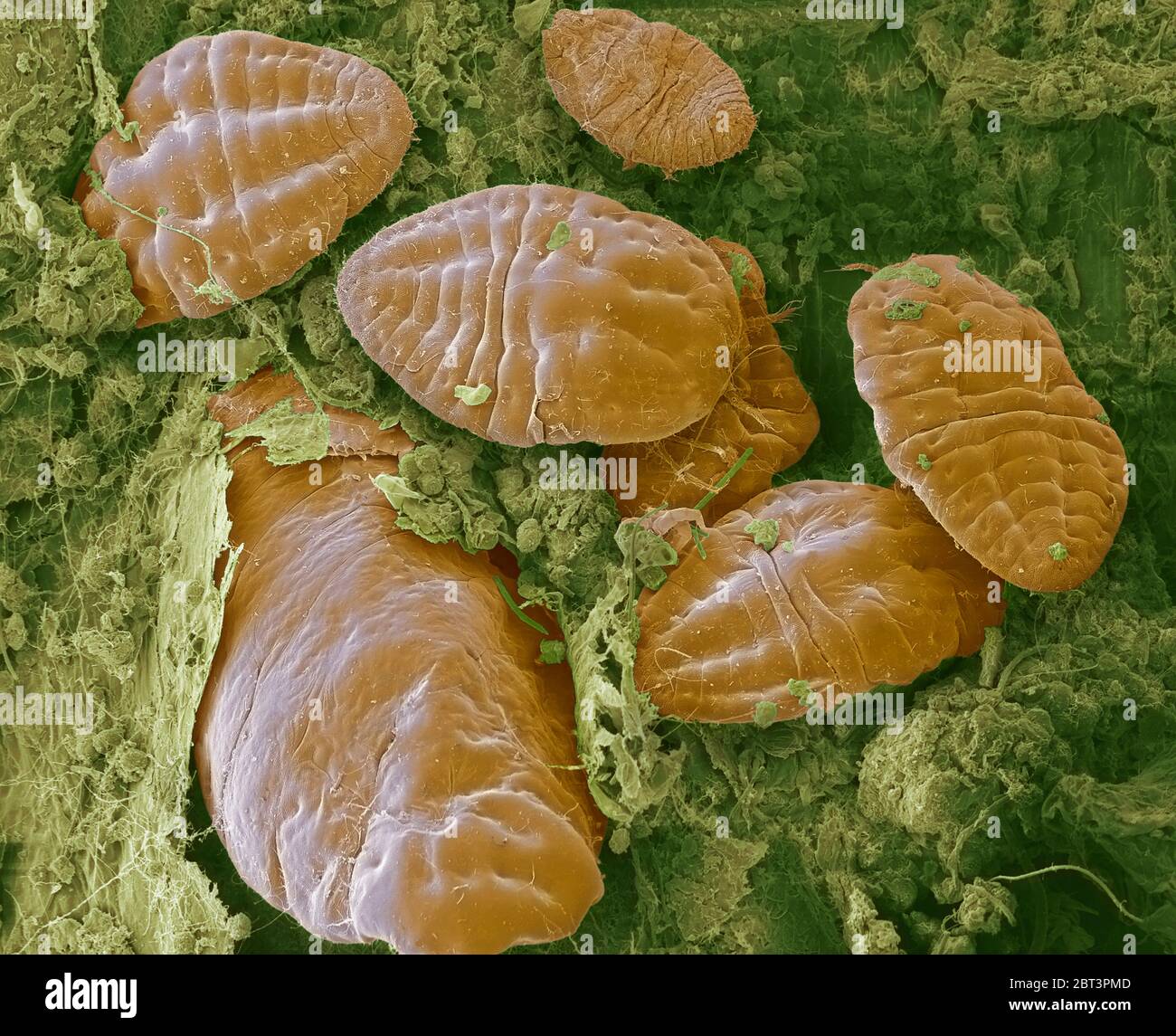 Scale insects. Coloured scanning electron micrograph (SEM) of scale insects (superfamily Coccoidea) on a leaf. This pest feeds on the plant's sap. It secretes a powdery wax coating that protects it against pesticides and predators. Magnification: x50 when printed at 10 centimetres wide. Stock Photohttps://www.alamy.com/image-license-details/?v=1https://www.alamy.com/scale-insects-coloured-scanning-electron-micrograph-sem-of-scale-insects-superfamily-coccoidea-on-a-leaf-this-pest-feeds-on-the-plants-sap-it-secretes-a-powdery-wax-coating-that-protects-it-against-pesticides-and-predators-magnification-x50-when-printed-at-10-centimetres-wide-image359042781.html
Scale insects. Coloured scanning electron micrograph (SEM) of scale insects (superfamily Coccoidea) on a leaf. This pest feeds on the plant's sap. It secretes a powdery wax coating that protects it against pesticides and predators. Magnification: x50 when printed at 10 centimetres wide. Stock Photohttps://www.alamy.com/image-license-details/?v=1https://www.alamy.com/scale-insects-coloured-scanning-electron-micrograph-sem-of-scale-insects-superfamily-coccoidea-on-a-leaf-this-pest-feeds-on-the-plants-sap-it-secretes-a-powdery-wax-coating-that-protects-it-against-pesticides-and-predators-magnification-x50-when-printed-at-10-centimetres-wide-image359042781.htmlRF2BT3PMD–Scale insects. Coloured scanning electron micrograph (SEM) of scale insects (superfamily Coccoidea) on a leaf. This pest feeds on the plant's sap. It secretes a powdery wax coating that protects it against pesticides and predators. Magnification: x50 when printed at 10 centimetres wide.
 A macro of a Galleria mellonella wax moth perched on a honeycomb Stock Photohttps://www.alamy.com/image-license-details/?v=1https://www.alamy.com/a-macro-of-a-galleria-mellonella-wax-moth-perched-on-a-honeycomb-image568962227.html
A macro of a Galleria mellonella wax moth perched on a honeycomb Stock Photohttps://www.alamy.com/image-license-details/?v=1https://www.alamy.com/a-macro-of-a-galleria-mellonella-wax-moth-perched-on-a-honeycomb-image568962227.htmlRF2T1JD3F–A macro of a Galleria mellonella wax moth perched on a honeycomb
![Insects affecting the orange . ult females oil Oiim<;o.ji:itMnil size; a, adult visit tO CalltomUl I fuund it Ul^Oll afemale,enlarged. (Alter Comslock.) , , , • , i « Single orange tree in the yard ofMr. Elwood Cooper, near Santa Barbiwa. Actual observation shows the suiaiise of Siguoret as to the locomo-tive powers of this insect to have been correct. We have seen theadult insects when removtl Ircin their positions crawl back with ap-parent ease. ?TUB WAX SCALE—WHITE SCALE. {Ccroplastes Jloridensis Comstock.)[Fig. 20.] Descriptive.—The adult insect with its covering is from 2™^ to 3°^(0.0 Stock Photo Insects affecting the orange . ult females oil Oiim<;o.ji:itMnil size; a, adult visit tO CalltomUl I fuund it Ul^Oll afemale,enlarged. (Alter Comslock.) , , , • , i « Single orange tree in the yard ofMr. Elwood Cooper, near Santa Barbiwa. Actual observation shows the suiaiise of Siguoret as to the locomo-tive powers of this insect to have been correct. We have seen theadult insects when removtl Ircin their positions crawl back with ap-parent ease. ?TUB WAX SCALE—WHITE SCALE. {Ccroplastes Jloridensis Comstock.)[Fig. 20.] Descriptive.—The adult insect with its covering is from 2™^ to 3°^(0.0 Stock Photo](https://c8.alamy.com/comp/2AX8YFT/insects-affecting-the-orange-ult-females-oil-oiimltojiitmnil-size-a-adult-visit-to-calltomul-i-fuund-it-uloll-afemaleenlarged-alter-comslock-i-single-orange-tree-in-the-yard-ofmr-elwood-cooper-near-santa-barbiwa-actual-observation-shows-the-suiaiise-of-siguoret-as-to-the-locomo-tive-powers-of-this-insect-to-have-been-correct-we-have-seen-theadult-insects-when-removtl-ircin-their-positions-crawl-back-with-ap-parent-ease-tub-wax-scalewhite-scale-ccroplastes-jloridensis-comstock-fig-20-descriptivethe-adult-insect-with-its-covering-is-from-2-to-300-2AX8YFT.jpg) Insects affecting the orange . ult females oil Oiim<;o.ji:itMnil size; a, adult visit tO CalltomUl I fuund it Ul^Oll afemale,enlarged. (Alter Comslock.) , , , • , i « Single orange tree in the yard ofMr. Elwood Cooper, near Santa Barbiwa. Actual observation shows the suiaiise of Siguoret as to the locomo-tive powers of this insect to have been correct. We have seen theadult insects when removtl Ircin their positions crawl back with ap-parent ease. ?TUB WAX SCALE—WHITE SCALE. {Ccroplastes Jloridensis Comstock.)[Fig. 20.] Descriptive.—The adult insect with its covering is from 2™^ to 3°^(0.0 Stock Photohttps://www.alamy.com/image-license-details/?v=1https://www.alamy.com/insects-affecting-the-orange-ult-females-oil-oiimltojiitmnil-size-a-adult-visit-to-calltomul-i-fuund-it-uloll-afemaleenlarged-alter-comslock-i-single-orange-tree-in-the-yard-ofmr-elwood-cooper-near-santa-barbiwa-actual-observation-shows-the-suiaiise-of-siguoret-as-to-the-locomo-tive-powers-of-this-insect-to-have-been-correct-we-have-seen-theadult-insects-when-removtl-ircin-their-positions-crawl-back-with-ap-parent-ease-tub-wax-scalewhite-scale-ccroplastes-jloridensis-comstock-fig-20-descriptivethe-adult-insect-with-its-covering-is-from-2-to-300-image343175276.html
Insects affecting the orange . ult females oil Oiim<;o.ji:itMnil size; a, adult visit tO CalltomUl I fuund it Ul^Oll afemale,enlarged. (Alter Comslock.) , , , • , i « Single orange tree in the yard ofMr. Elwood Cooper, near Santa Barbiwa. Actual observation shows the suiaiise of Siguoret as to the locomo-tive powers of this insect to have been correct. We have seen theadult insects when removtl Ircin their positions crawl back with ap-parent ease. ?TUB WAX SCALE—WHITE SCALE. {Ccroplastes Jloridensis Comstock.)[Fig. 20.] Descriptive.—The adult insect with its covering is from 2™^ to 3°^(0.0 Stock Photohttps://www.alamy.com/image-license-details/?v=1https://www.alamy.com/insects-affecting-the-orange-ult-females-oil-oiimltojiitmnil-size-a-adult-visit-to-calltomul-i-fuund-it-uloll-afemaleenlarged-alter-comslock-i-single-orange-tree-in-the-yard-ofmr-elwood-cooper-near-santa-barbiwa-actual-observation-shows-the-suiaiise-of-siguoret-as-to-the-locomo-tive-powers-of-this-insect-to-have-been-correct-we-have-seen-theadult-insects-when-removtl-ircin-their-positions-crawl-back-with-ap-parent-ease-tub-wax-scalewhite-scale-ccroplastes-jloridensis-comstock-fig-20-descriptivethe-adult-insect-with-its-covering-is-from-2-to-300-image343175276.htmlRM2AX8YFT–Insects affecting the orange . ult females oil Oiim<;o.ji:itMnil size; a, adult visit tO CalltomUl I fuund it Ul^Oll afemale,enlarged. (Alter Comslock.) , , , • , i « Single orange tree in the yard ofMr. Elwood Cooper, near Santa Barbiwa. Actual observation shows the suiaiise of Siguoret as to the locomo-tive powers of this insect to have been correct. We have seen theadult insects when removtl Ircin their positions crawl back with ap-parent ease. ?TUB WAX SCALE—WHITE SCALE. {Ccroplastes Jloridensis Comstock.)[Fig. 20.] Descriptive.—The adult insect with its covering is from 2™^ to 3°^(0.0
 Viburnum cushion scale insect, on underside of Viburnum tinus leaves, start of infestation, white wax-wol are formed into an ovisac Stock Photohttps://www.alamy.com/image-license-details/?v=1https://www.alamy.com/viburnum-cushion-scale-insect-on-underside-of-viburnum-tinus-leaves-start-of-infestation-white-wax-wol-are-formed-into-an-ovisac-image257384672.html
Viburnum cushion scale insect, on underside of Viburnum tinus leaves, start of infestation, white wax-wol are formed into an ovisac Stock Photohttps://www.alamy.com/image-license-details/?v=1https://www.alamy.com/viburnum-cushion-scale-insect-on-underside-of-viburnum-tinus-leaves-start-of-infestation-white-wax-wol-are-formed-into-an-ovisac-image257384672.htmlRMTXMTNM–Viburnum cushion scale insect, on underside of Viburnum tinus leaves, start of infestation, white wax-wol are formed into an ovisac
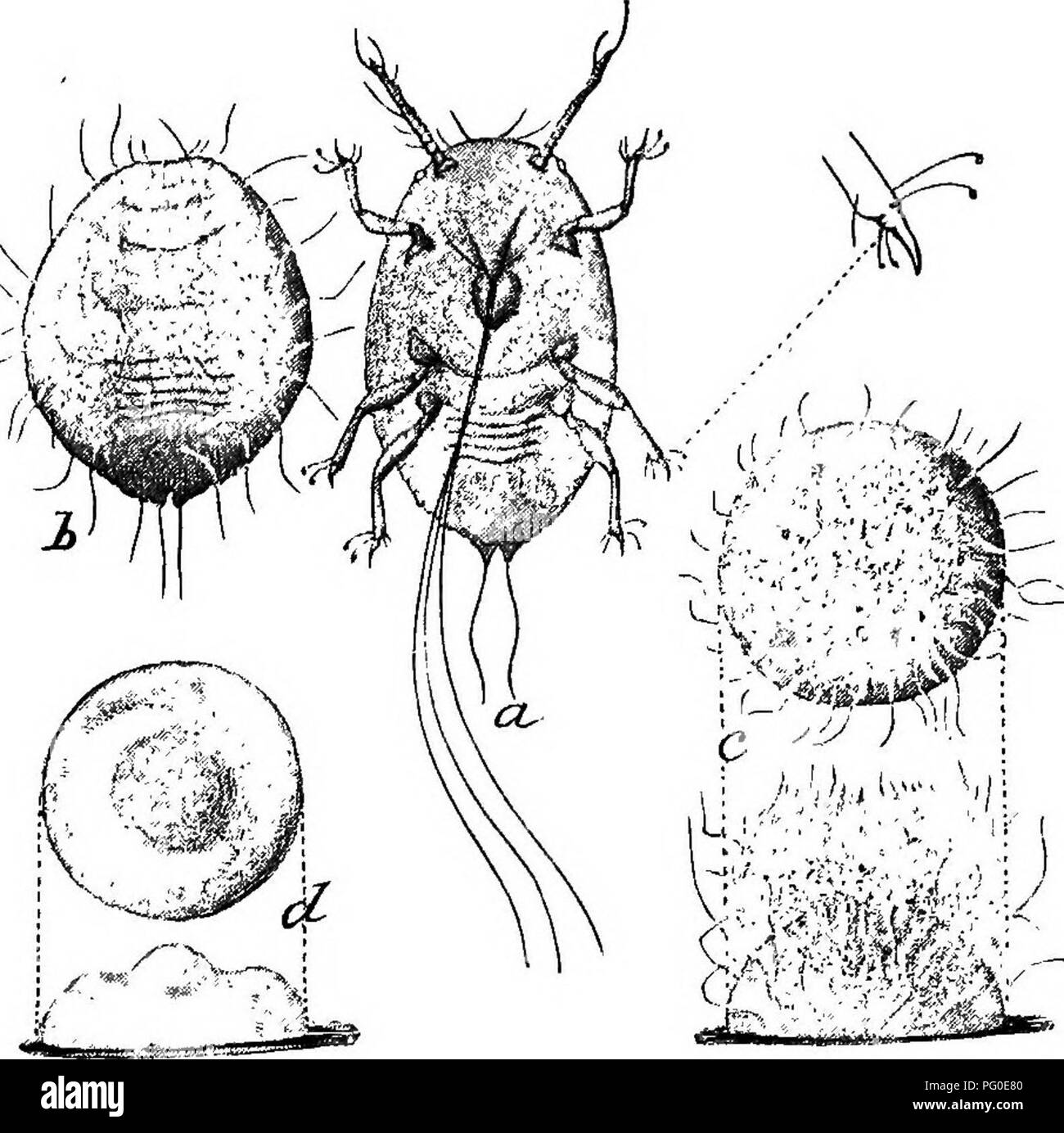 . Insect pests and plant diseases : containing remedies and suggestions recommended for adoption by farmers, fruit-growers, and gardeners of the province . Pests; Fungal diseases of plants; Insect pests. 18 Provincial Board of Horticqlture. 1897. a ^^f'^ (Fig. 3.) Young larvae and developing scale ; (a), ventral view of larva showing sucking beak with setse separated with enlarged tarsal claw at right; (6), dorsal view of same somewhat contracted, with the first waxy filaments appearing; (c), dorsal and lateral view of same still more contracted, illustrating further development of wax secre Stock Photohttps://www.alamy.com/image-license-details/?v=1https://www.alamy.com/insect-pests-and-plant-diseases-containing-remedies-and-suggestions-recommended-for-adoption-by-farmers-fruit-growers-and-gardeners-of-the-province-pests-fungal-diseases-of-plants-insect-pests-18-provincial-board-of-horticqlture-1897-a-f-fig-3-young-larvae-and-developing-scale-a-ventral-view-of-larva-showing-sucking-beak-with-setse-separated-with-enlarged-tarsal-claw-at-right-6-dorsal-view-of-same-somewhat-contracted-with-the-first-waxy-filaments-appearing-c-dorsal-and-lateral-view-of-same-still-more-contracted-illustrating-further-development-of-wax-secre-image216370112.html
. Insect pests and plant diseases : containing remedies and suggestions recommended for adoption by farmers, fruit-growers, and gardeners of the province . Pests; Fungal diseases of plants; Insect pests. 18 Provincial Board of Horticqlture. 1897. a ^^f'^ (Fig. 3.) Young larvae and developing scale ; (a), ventral view of larva showing sucking beak with setse separated with enlarged tarsal claw at right; (6), dorsal view of same somewhat contracted, with the first waxy filaments appearing; (c), dorsal and lateral view of same still more contracted, illustrating further development of wax secre Stock Photohttps://www.alamy.com/image-license-details/?v=1https://www.alamy.com/insect-pests-and-plant-diseases-containing-remedies-and-suggestions-recommended-for-adoption-by-farmers-fruit-growers-and-gardeners-of-the-province-pests-fungal-diseases-of-plants-insect-pests-18-provincial-board-of-horticqlture-1897-a-f-fig-3-young-larvae-and-developing-scale-a-ventral-view-of-larva-showing-sucking-beak-with-setse-separated-with-enlarged-tarsal-claw-at-right-6-dorsal-view-of-same-somewhat-contracted-with-the-first-waxy-filaments-appearing-c-dorsal-and-lateral-view-of-same-still-more-contracted-illustrating-further-development-of-wax-secre-image216370112.htmlRMPG0E80–. Insect pests and plant diseases : containing remedies and suggestions recommended for adoption by farmers, fruit-growers, and gardeners of the province . Pests; Fungal diseases of plants; Insect pests. 18 Provincial Board of Horticqlture. 1897. a ^^f'^ (Fig. 3.) Young larvae and developing scale ; (a), ventral view of larva showing sucking beak with setse separated with enlarged tarsal claw at right; (6), dorsal view of same somewhat contracted, with the first waxy filaments appearing; (c), dorsal and lateral view of same still more contracted, illustrating further development of wax secre
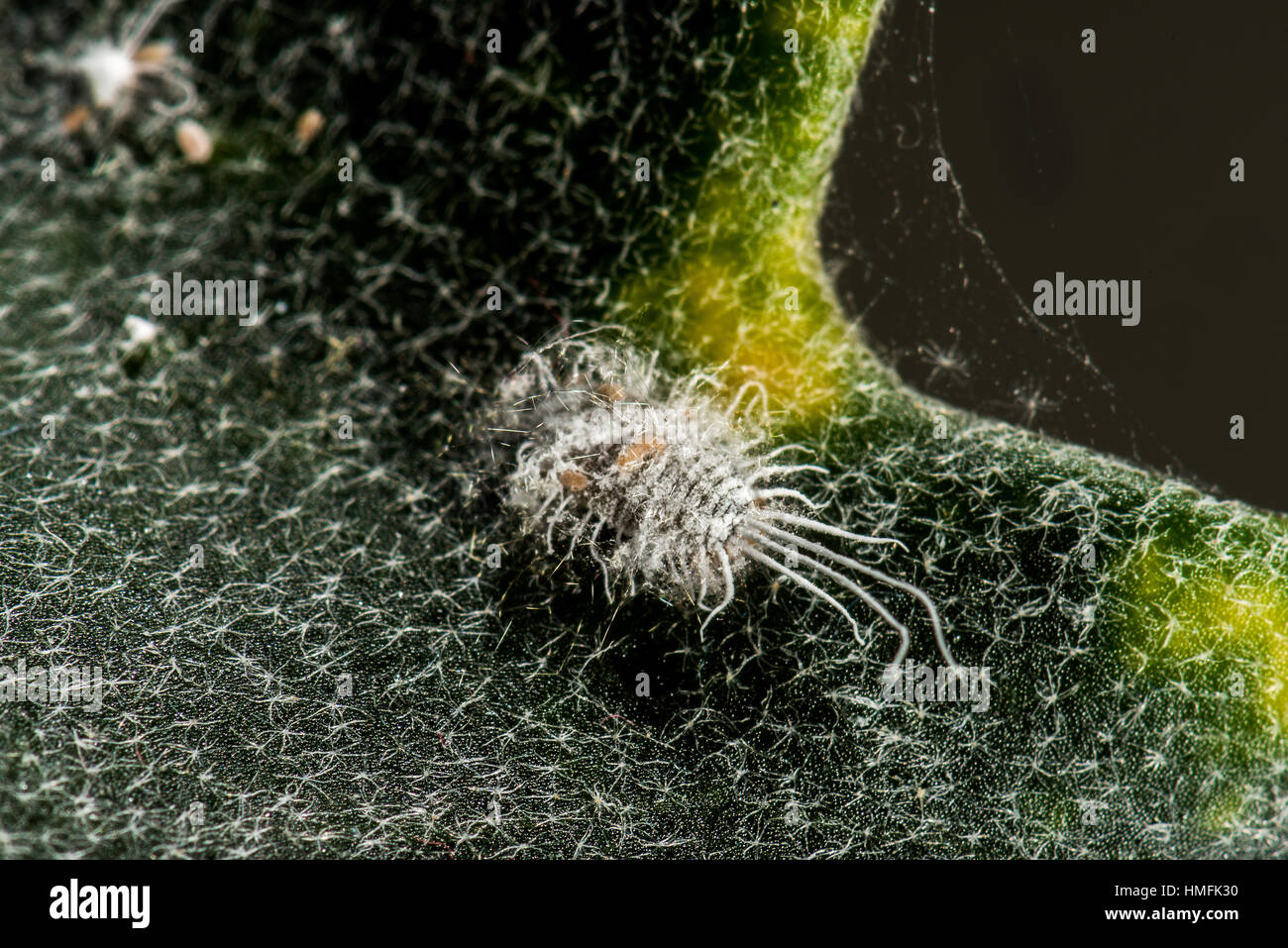 coccids scale insects mealybugs Stock Photohttps://www.alamy.com/image-license-details/?v=1https://www.alamy.com/stock-photo-coccids-scale-insects-mealybugs-133109956.html
coccids scale insects mealybugs Stock Photohttps://www.alamy.com/image-license-details/?v=1https://www.alamy.com/stock-photo-coccids-scale-insects-mealybugs-133109956.htmlRMHMFK30–coccids scale insects mealybugs
 Larva stage of Scale insect, they feed on a wide range of host plants., vintage line drawing or engraving illustration. Stock Vectorhttps://www.alamy.com/image-license-details/?v=1https://www.alamy.com/larva-stage-of-scale-insect-they-feed-on-a-wide-range-of-host-plants-vintage-line-drawing-or-engraving-illustration-image367208890.html
Larva stage of Scale insect, they feed on a wide range of host plants., vintage line drawing or engraving illustration. Stock Vectorhttps://www.alamy.com/image-license-details/?v=1https://www.alamy.com/larva-stage-of-scale-insect-they-feed-on-a-wide-range-of-host-plants-vintage-line-drawing-or-engraving-illustration-image367208890.htmlRF2C9BPK6–Larva stage of Scale insect, they feed on a wide range of host plants., vintage line drawing or engraving illustration.
![Elementary entomology ([c1912]) Elementary entomology . elementaryentomo00sand Year: [c1912] FIG. 181. The cochineal insect a, on cactus; b, male; c, female (enlarged). (From Riverside Natural History) groups may be readily distinguished. The mealy-bugs are fre- quently found on greenhouse plants, and are so named from their mealy covering of wax and the numerous white, waxy filaments FIG. 182. The peach lecanium, or terrapin scale Adults at left (much enlarged and natural size); young at center and unfertilized female at right (much enlarged). (After Howard, United States Department of Ag Stock Photo Elementary entomology ([c1912]) Elementary entomology . elementaryentomo00sand Year: [c1912] FIG. 181. The cochineal insect a, on cactus; b, male; c, female (enlarged). (From Riverside Natural History) groups may be readily distinguished. The mealy-bugs are fre- quently found on greenhouse plants, and are so named from their mealy covering of wax and the numerous white, waxy filaments FIG. 182. The peach lecanium, or terrapin scale Adults at left (much enlarged and natural size); young at center and unfertilized female at right (much enlarged). (After Howard, United States Department of Ag Stock Photo](https://c8.alamy.com/comp/RYR33E/elementary-entomology-c1912-elementary-entomology-elementaryentomo00sand-year-c1912-fig-181-the-cochineal-insect-a-on-cactus-b-male-c-female-enlarged-from-riverside-natural-history-groups-may-be-readily-distinguished-the-mealy-bugs-are-fre-quently-found-on-greenhouse-plants-and-are-so-named-from-their-mealy-covering-of-wax-and-the-numerous-white-waxy-filaments-fig-182-the-peach-lecanium-or-terrapin-scale-adults-at-left-much-enlarged-and-natural-size-young-at-center-and-unfertilized-female-at-right-much-enlarged-after-howard-united-states-department-of-ag-RYR33E.jpg) Elementary entomology ([c1912]) Elementary entomology . elementaryentomo00sand Year: [c1912] FIG. 181. The cochineal insect a, on cactus; b, male; c, female (enlarged). (From Riverside Natural History) groups may be readily distinguished. The mealy-bugs are fre- quently found on greenhouse plants, and are so named from their mealy covering of wax and the numerous white, waxy filaments FIG. 182. The peach lecanium, or terrapin scale Adults at left (much enlarged and natural size); young at center and unfertilized female at right (much enlarged). (After Howard, United States Department of Ag Stock Photohttps://www.alamy.com/image-license-details/?v=1https://www.alamy.com/elementary-entomology-c1912-elementary-entomology-elementaryentomo00sand-year-c1912-fig-181-the-cochineal-insect-a-on-cactus-b-male-c-female-enlarged-from-riverside-natural-history-groups-may-be-readily-distinguished-the-mealy-bugs-are-fre-quently-found-on-greenhouse-plants-and-are-so-named-from-their-mealy-covering-of-wax-and-the-numerous-white-waxy-filaments-fig-182-the-peach-lecanium-or-terrapin-scale-adults-at-left-much-enlarged-and-natural-size-young-at-center-and-unfertilized-female-at-right-much-enlarged-after-howard-united-states-department-of-ag-image240837842.html
Elementary entomology ([c1912]) Elementary entomology . elementaryentomo00sand Year: [c1912] FIG. 181. The cochineal insect a, on cactus; b, male; c, female (enlarged). (From Riverside Natural History) groups may be readily distinguished. The mealy-bugs are fre- quently found on greenhouse plants, and are so named from their mealy covering of wax and the numerous white, waxy filaments FIG. 182. The peach lecanium, or terrapin scale Adults at left (much enlarged and natural size); young at center and unfertilized female at right (much enlarged). (After Howard, United States Department of Ag Stock Photohttps://www.alamy.com/image-license-details/?v=1https://www.alamy.com/elementary-entomology-c1912-elementary-entomology-elementaryentomo00sand-year-c1912-fig-181-the-cochineal-insect-a-on-cactus-b-male-c-female-enlarged-from-riverside-natural-history-groups-may-be-readily-distinguished-the-mealy-bugs-are-fre-quently-found-on-greenhouse-plants-and-are-so-named-from-their-mealy-covering-of-wax-and-the-numerous-white-waxy-filaments-fig-182-the-peach-lecanium-or-terrapin-scale-adults-at-left-much-enlarged-and-natural-size-young-at-center-and-unfertilized-female-at-right-much-enlarged-after-howard-united-states-department-of-ag-image240837842.htmlRMRYR33E–Elementary entomology ([c1912]) Elementary entomology . elementaryentomo00sand Year: [c1912] FIG. 181. The cochineal insect a, on cactus; b, male; c, female (enlarged). (From Riverside Natural History) groups may be readily distinguished. The mealy-bugs are fre- quently found on greenhouse plants, and are so named from their mealy covering of wax and the numerous white, waxy filaments FIG. 182. The peach lecanium, or terrapin scale Adults at left (much enlarged and natural size); young at center and unfertilized female at right (much enlarged). (After Howard, United States Department of Ag
 Adult Scale insect, it is a sap-feeding insects named for the scale or shell-like waxy covering., vintage line drawing or engraving illustration. Stock Vectorhttps://www.alamy.com/image-license-details/?v=1https://www.alamy.com/adult-scale-insect-it-is-a-sap-feeding-insects-named-for-the-scale-or-shell-like-waxy-covering-vintage-line-drawing-or-engraving-illustration-image367220966.html
Adult Scale insect, it is a sap-feeding insects named for the scale or shell-like waxy covering., vintage line drawing or engraving illustration. Stock Vectorhttps://www.alamy.com/image-license-details/?v=1https://www.alamy.com/adult-scale-insect-it-is-a-sap-feeding-insects-named-for-the-scale-or-shell-like-waxy-covering-vintage-line-drawing-or-engraving-illustration-image367220966.htmlRF2C9CA2E–Adult Scale insect, it is a sap-feeding insects named for the scale or shell-like waxy covering., vintage line drawing or engraving illustration.
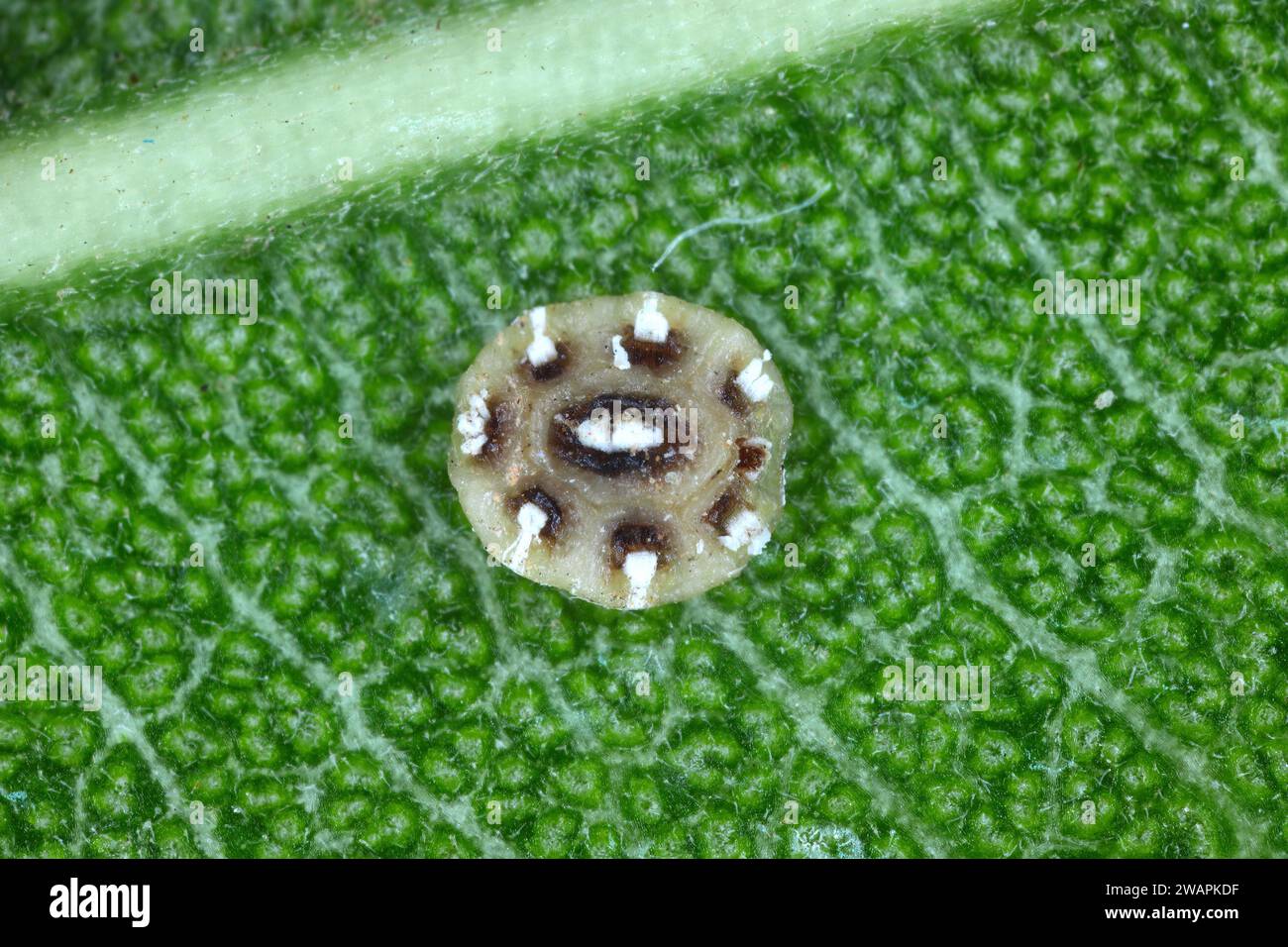 Fig wax scale (scientific name: Ceroplastes rusci, Coccidae). Insect reported as a significant pest of citrus and many other crops and ornamental Stock Photohttps://www.alamy.com/image-license-details/?v=1https://www.alamy.com/fig-wax-scale-scientific-name-ceroplastes-rusci-coccidae-insect-reported-as-a-significant-pest-of-citrus-and-many-other-crops-and-ornamental-image591797291.html
Fig wax scale (scientific name: Ceroplastes rusci, Coccidae). Insect reported as a significant pest of citrus and many other crops and ornamental Stock Photohttps://www.alamy.com/image-license-details/?v=1https://www.alamy.com/fig-wax-scale-scientific-name-ceroplastes-rusci-coccidae-insect-reported-as-a-significant-pest-of-citrus-and-many-other-crops-and-ornamental-image591797291.htmlRF2WAPKDF–Fig wax scale (scientific name: Ceroplastes rusci, Coccidae). Insect reported as a significant pest of citrus and many other crops and ornamental
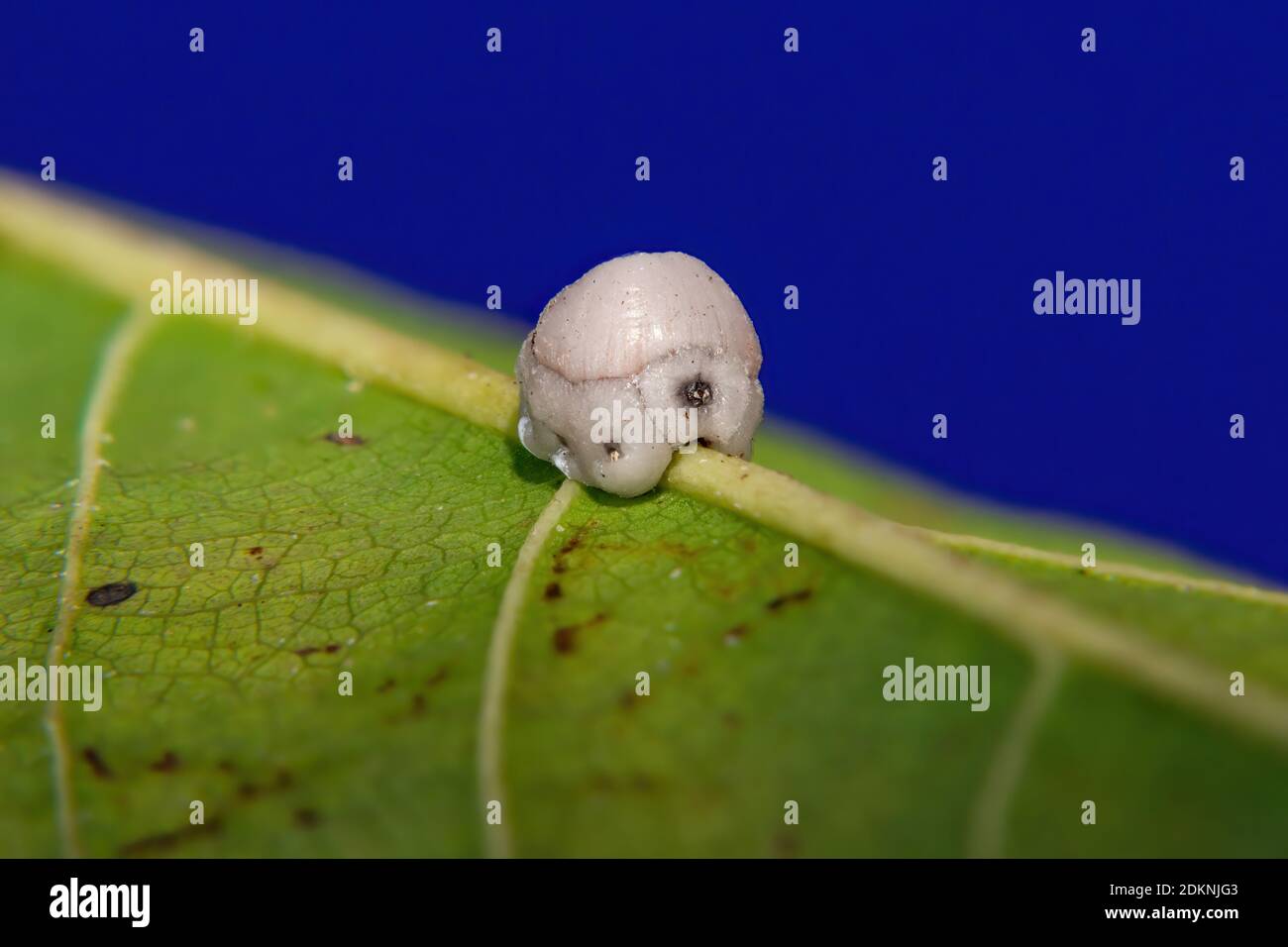 Wax Scale of the Genus Ceroplastes Stock Photohttps://www.alamy.com/image-license-details/?v=1https://www.alamy.com/wax-scale-of-the-genus-ceroplastes-image390782115.html
Wax Scale of the Genus Ceroplastes Stock Photohttps://www.alamy.com/image-license-details/?v=1https://www.alamy.com/wax-scale-of-the-genus-ceroplastes-image390782115.htmlRF2DKNJG3–Wax Scale of the Genus Ceroplastes
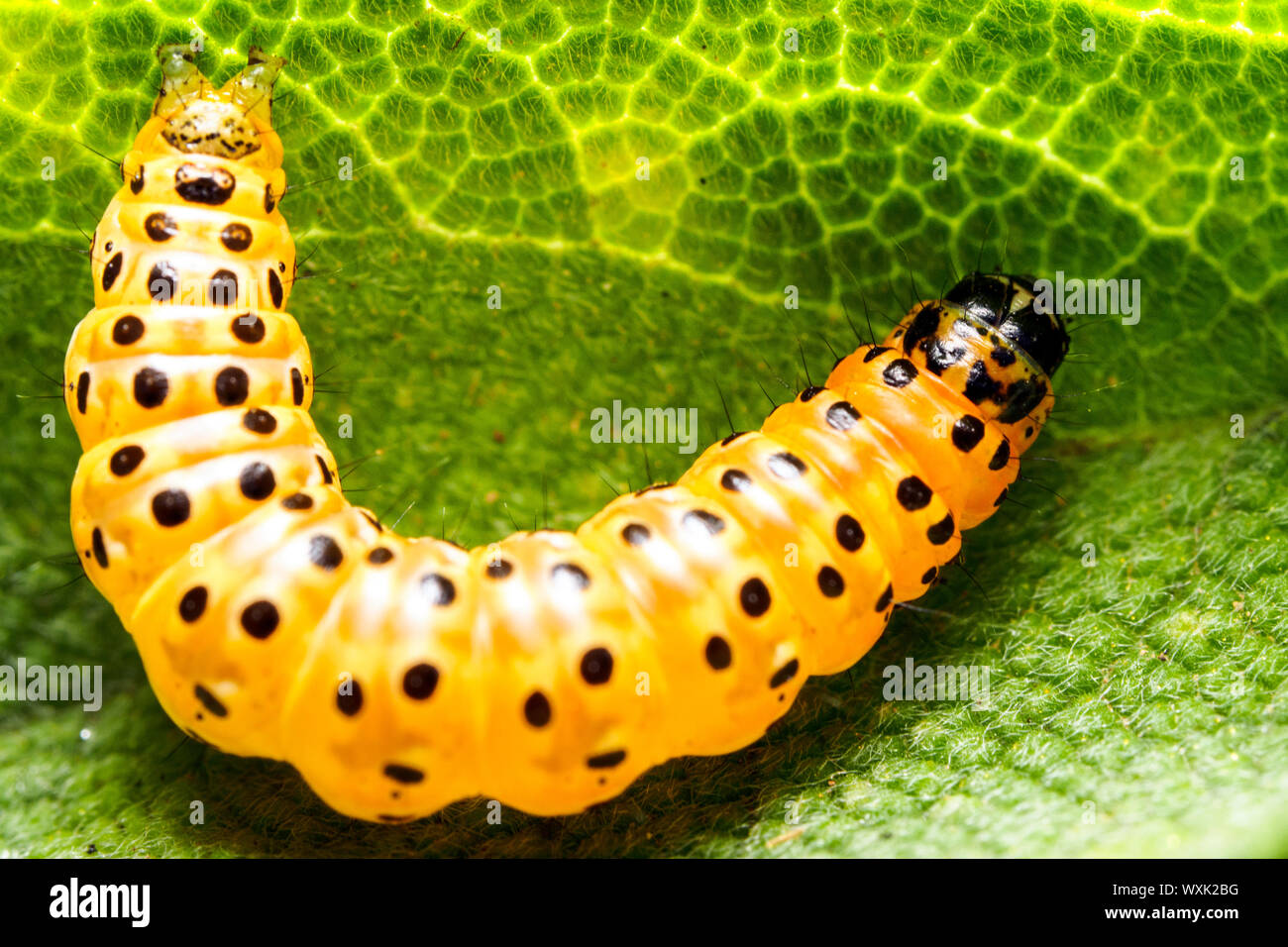 Waxworms are the caterpillar larvae of wax moths Stock Photohttps://www.alamy.com/image-license-details/?v=1https://www.alamy.com/waxworms-are-the-caterpillar-larvae-of-wax-moths-image274555556.html
Waxworms are the caterpillar larvae of wax moths Stock Photohttps://www.alamy.com/image-license-details/?v=1https://www.alamy.com/waxworms-are-the-caterpillar-larvae-of-wax-moths-image274555556.htmlRMWXK2BG–Waxworms are the caterpillar larvae of wax moths
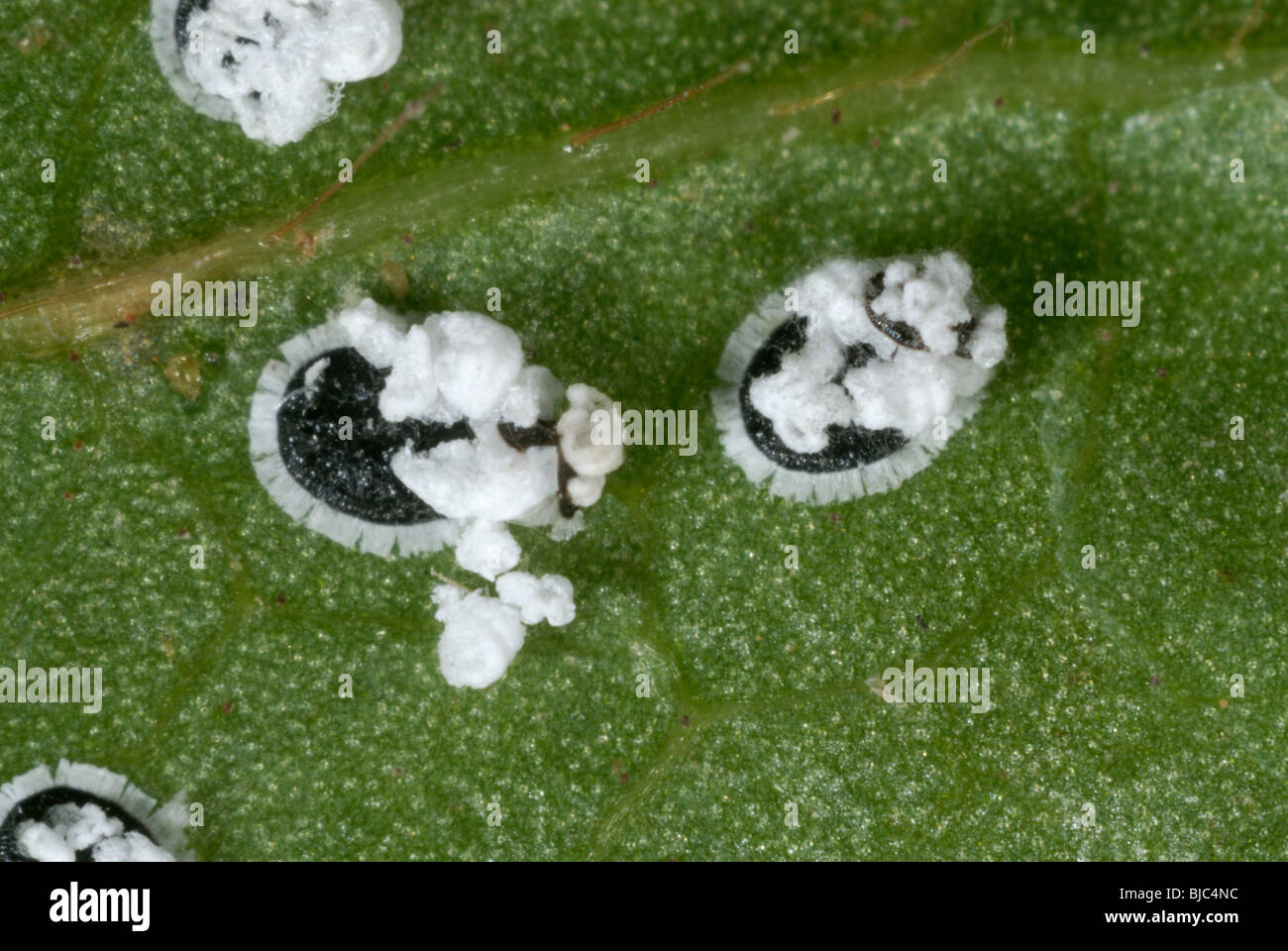 Viburnum whitefly (Aleurotrachelus jelinekii) larvae with waxy protruberances on a viburnum leaf Stock Photohttps://www.alamy.com/image-license-details/?v=1https://www.alamy.com/stock-photo-viburnum-whitefly-aleurotrachelus-jelinekii-larvae-with-waxy-protruberances-28541336.html
Viburnum whitefly (Aleurotrachelus jelinekii) larvae with waxy protruberances on a viburnum leaf Stock Photohttps://www.alamy.com/image-license-details/?v=1https://www.alamy.com/stock-photo-viburnum-whitefly-aleurotrachelus-jelinekii-larvae-with-waxy-protruberances-28541336.htmlRMBJC4NC–Viburnum whitefly (Aleurotrachelus jelinekii) larvae with waxy protruberances on a viburnum leaf
 A macro of a Galleria mellonella wax moth perched on a honeycomb Stock Photohttps://www.alamy.com/image-license-details/?v=1https://www.alamy.com/a-macro-of-a-galleria-mellonella-wax-moth-perched-on-a-honeycomb-image568959393.html
A macro of a Galleria mellonella wax moth perched on a honeycomb Stock Photohttps://www.alamy.com/image-license-details/?v=1https://www.alamy.com/a-macro-of-a-galleria-mellonella-wax-moth-perched-on-a-honeycomb-image568959393.htmlRF2T1J9E9–A macro of a Galleria mellonella wax moth perched on a honeycomb
 . Insect pests of farm, garden and orchard . d lateral views of same, somewhat contracted, illustrating furthcdevelopment of wax secretion; d, later stage of the same dorsal and lateralviews, showing matting of wax secretions and first form of young scale—all greatly enlarged. (After Howard and Marlatt, U. S. Dept. Agr.) wind, or tlu^y may be carried on the feet of birds or insects, orbrushed off and carried by persons or teams working in the orchard.^ The insect has been found on a long list of plants, but on manyof them it is largely accidental. Injury is practically confinedto plants of the Stock Photohttps://www.alamy.com/image-license-details/?v=1https://www.alamy.com/insect-pests-of-farm-garden-and-orchard-d-lateral-views-of-same-somewhat-contracted-illustrating-furthcdevelopment-of-wax-secretion-d-later-stage-of-the-same-dorsal-and-lateralviews-showing-matting-of-wax-secretions-and-first-form-of-young-scaleall-greatly-enlarged-after-howard-and-marlatt-u-s-dept-agr-wind-or-tluy-may-be-carried-on-the-feet-of-birds-or-insects-orbrushed-off-and-carried-by-persons-or-teams-working-in-the-orchard-the-insect-has-been-found-on-a-long-list-of-plants-but-on-manyof-them-it-is-largely-accidental-injury-is-practically-confinedto-plants-of-the-image369607692.html
. Insect pests of farm, garden and orchard . d lateral views of same, somewhat contracted, illustrating furthcdevelopment of wax secretion; d, later stage of the same dorsal and lateralviews, showing matting of wax secretions and first form of young scale—all greatly enlarged. (After Howard and Marlatt, U. S. Dept. Agr.) wind, or tlu^y may be carried on the feet of birds or insects, orbrushed off and carried by persons or teams working in the orchard.^ The insect has been found on a long list of plants, but on manyof them it is largely accidental. Injury is practically confinedto plants of the Stock Photohttps://www.alamy.com/image-license-details/?v=1https://www.alamy.com/insect-pests-of-farm-garden-and-orchard-d-lateral-views-of-same-somewhat-contracted-illustrating-furthcdevelopment-of-wax-secretion-d-later-stage-of-the-same-dorsal-and-lateralviews-showing-matting-of-wax-secretions-and-first-form-of-young-scaleall-greatly-enlarged-after-howard-and-marlatt-u-s-dept-agr-wind-or-tluy-may-be-carried-on-the-feet-of-birds-or-insects-orbrushed-off-and-carried-by-persons-or-teams-working-in-the-orchard-the-insect-has-been-found-on-a-long-list-of-plants-but-on-manyof-them-it-is-largely-accidental-injury-is-practically-confinedto-plants-of-the-image369607692.htmlRM2CD92AM–. Insect pests of farm, garden and orchard . d lateral views of same, somewhat contracted, illustrating furthcdevelopment of wax secretion; d, later stage of the same dorsal and lateralviews, showing matting of wax secretions and first form of young scale—all greatly enlarged. (After Howard and Marlatt, U. S. Dept. Agr.) wind, or tlu^y may be carried on the feet of birds or insects, orbrushed off and carried by persons or teams working in the orchard.^ The insect has been found on a long list of plants, but on manyof them it is largely accidental. Injury is practically confinedto plants of the
 Viburnum cushion scale insect, on underside of Viburnum tinus leaves, start of infestation, white wax-wol are formed into an ovisac Stock Photohttps://www.alamy.com/image-license-details/?v=1https://www.alamy.com/viburnum-cushion-scale-insect-on-underside-of-viburnum-tinus-leaves-start-of-infestation-white-wax-wol-are-formed-into-an-ovisac-image257384472.html
Viburnum cushion scale insect, on underside of Viburnum tinus leaves, start of infestation, white wax-wol are formed into an ovisac Stock Photohttps://www.alamy.com/image-license-details/?v=1https://www.alamy.com/viburnum-cushion-scale-insect-on-underside-of-viburnum-tinus-leaves-start-of-infestation-white-wax-wol-are-formed-into-an-ovisac-image257384472.htmlRMTXMTEG–Viburnum cushion scale insect, on underside of Viburnum tinus leaves, start of infestation, white wax-wol are formed into an ovisac
 . Insects injurious to fruits. Illustrated with four hundred and forty wood-cuts. Insect pests. 398 INSECTS INJURIOUS TO THE ORANGE. threads of wax, which are cottony in appearance. Soon a small, white, convex scale takes the place of this cottony coating, which is depressed in the centre. (See d, Fig. 407.) The scales gradually increase in size, and as they approach maturity there is secreted on the female scale a mass of cottony threads, which increases in quantity until it some- FiG. 408.. times extends in a curved form, as shown at/, to a length five times the diameter of the scale. In the Stock Photohttps://www.alamy.com/image-license-details/?v=1https://www.alamy.com/insects-injurious-to-fruits-illustrated-with-four-hundred-and-forty-wood-cuts-insect-pests-398-insects-injurious-to-the-orange-threads-of-wax-which-are-cottony-in-appearance-soon-a-small-white-convex-scale-takes-the-place-of-this-cottony-coating-which-is-depressed-in-the-centre-see-d-fig-407-the-scales-gradually-increase-in-size-and-as-they-approach-maturity-there-is-secreted-on-the-female-scale-a-mass-of-cottony-threads-which-increases-in-quantity-until-it-some-fig-408-times-extends-in-a-curved-form-as-shown-at-to-a-length-five-times-the-diameter-of-the-scale-in-the-image216313295.html
. Insects injurious to fruits. Illustrated with four hundred and forty wood-cuts. Insect pests. 398 INSECTS INJURIOUS TO THE ORANGE. threads of wax, which are cottony in appearance. Soon a small, white, convex scale takes the place of this cottony coating, which is depressed in the centre. (See d, Fig. 407.) The scales gradually increase in size, and as they approach maturity there is secreted on the female scale a mass of cottony threads, which increases in quantity until it some- FiG. 408.. times extends in a curved form, as shown at/, to a length five times the diameter of the scale. In the Stock Photohttps://www.alamy.com/image-license-details/?v=1https://www.alamy.com/insects-injurious-to-fruits-illustrated-with-four-hundred-and-forty-wood-cuts-insect-pests-398-insects-injurious-to-the-orange-threads-of-wax-which-are-cottony-in-appearance-soon-a-small-white-convex-scale-takes-the-place-of-this-cottony-coating-which-is-depressed-in-the-centre-see-d-fig-407-the-scales-gradually-increase-in-size-and-as-they-approach-maturity-there-is-secreted-on-the-female-scale-a-mass-of-cottony-threads-which-increases-in-quantity-until-it-some-fig-408-times-extends-in-a-curved-form-as-shown-at-to-a-length-five-times-the-diameter-of-the-scale-in-the-image216313295.htmlRMPFWWPR–. Insects injurious to fruits. Illustrated with four hundred and forty wood-cuts. Insect pests. 398 INSECTS INJURIOUS TO THE ORANGE. threads of wax, which are cottony in appearance. Soon a small, white, convex scale takes the place of this cottony coating, which is depressed in the centre. (See d, Fig. 407.) The scales gradually increase in size, and as they approach maturity there is secreted on the female scale a mass of cottony threads, which increases in quantity until it some- FiG. 408.. times extends in a curved form, as shown at/, to a length five times the diameter of the scale. In the
 coccids scale insects mealybugs Stock Photohttps://www.alamy.com/image-license-details/?v=1https://www.alamy.com/stock-photo-coccids-scale-insects-mealybugs-133110005.html
coccids scale insects mealybugs Stock Photohttps://www.alamy.com/image-license-details/?v=1https://www.alamy.com/stock-photo-coccids-scale-insects-mealybugs-133110005.htmlRMHMFK4N–coccids scale insects mealybugs
 Boxwood with white waxy coating or extrusion from box sucker or boxwood psyllid, Psylla buxi Stock Photohttps://www.alamy.com/image-license-details/?v=1https://www.alamy.com/boxwood-with-white-waxy-coating-or-extrusion-from-box-sucker-or-boxwood-psyllid-psylla-buxi-image259444916.html
Boxwood with white waxy coating or extrusion from box sucker or boxwood psyllid, Psylla buxi Stock Photohttps://www.alamy.com/image-license-details/?v=1https://www.alamy.com/boxwood-with-white-waxy-coating-or-extrusion-from-box-sucker-or-boxwood-psyllid-psylla-buxi-image259444916.htmlRMW22MHT–Boxwood with white waxy coating or extrusion from box sucker or boxwood psyllid, Psylla buxi
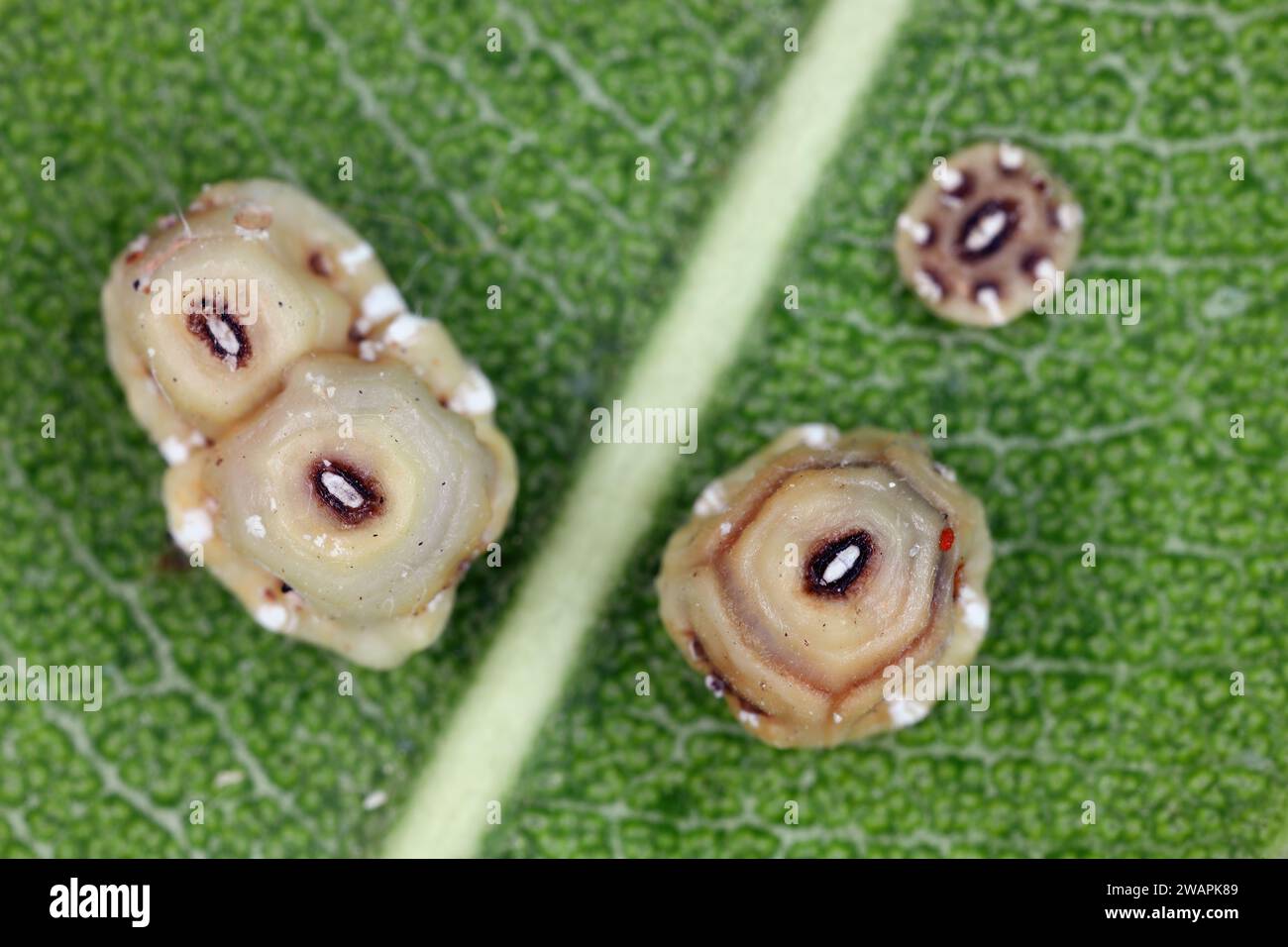 Fig wax scale (scientific name: Ceroplastes rusci, Coccidae). Insect reported as a significant pest of citrus and many other crops and ornamental Stock Photohttps://www.alamy.com/image-license-details/?v=1https://www.alamy.com/fig-wax-scale-scientific-name-ceroplastes-rusci-coccidae-insect-reported-as-a-significant-pest-of-citrus-and-many-other-crops-and-ornamental-image591797145.html
Fig wax scale (scientific name: Ceroplastes rusci, Coccidae). Insect reported as a significant pest of citrus and many other crops and ornamental Stock Photohttps://www.alamy.com/image-license-details/?v=1https://www.alamy.com/fig-wax-scale-scientific-name-ceroplastes-rusci-coccidae-insect-reported-as-a-significant-pest-of-citrus-and-many-other-crops-and-ornamental-image591797145.htmlRF2WAPK89–Fig wax scale (scientific name: Ceroplastes rusci, Coccidae). Insect reported as a significant pest of citrus and many other crops and ornamental
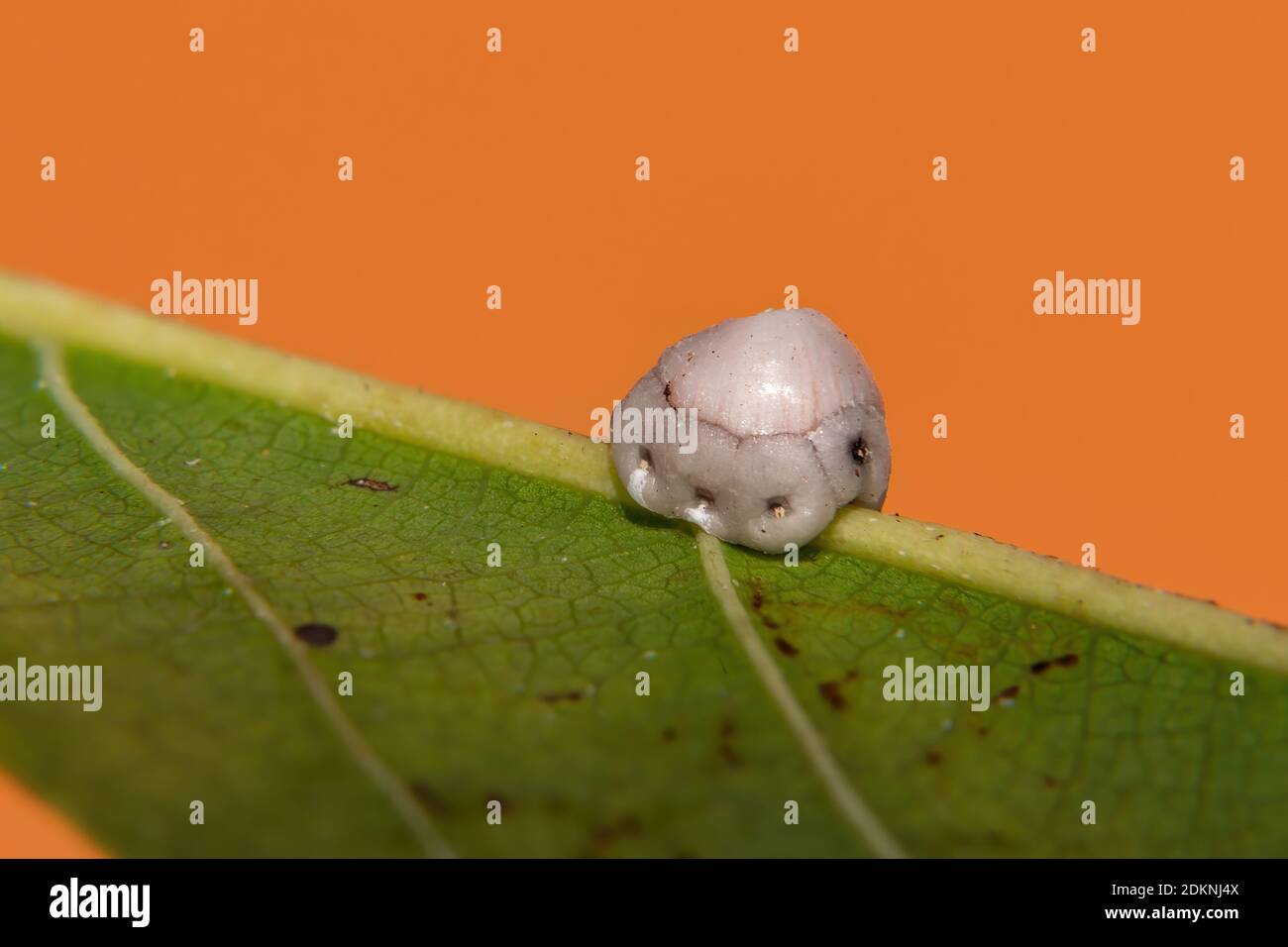 Wax Scale of the Genus Ceroplastes Stock Photohttps://www.alamy.com/image-license-details/?v=1https://www.alamy.com/wax-scale-of-the-genus-ceroplastes-image390781802.html
Wax Scale of the Genus Ceroplastes Stock Photohttps://www.alamy.com/image-license-details/?v=1https://www.alamy.com/wax-scale-of-the-genus-ceroplastes-image390781802.htmlRF2DKNJ4X–Wax Scale of the Genus Ceroplastes
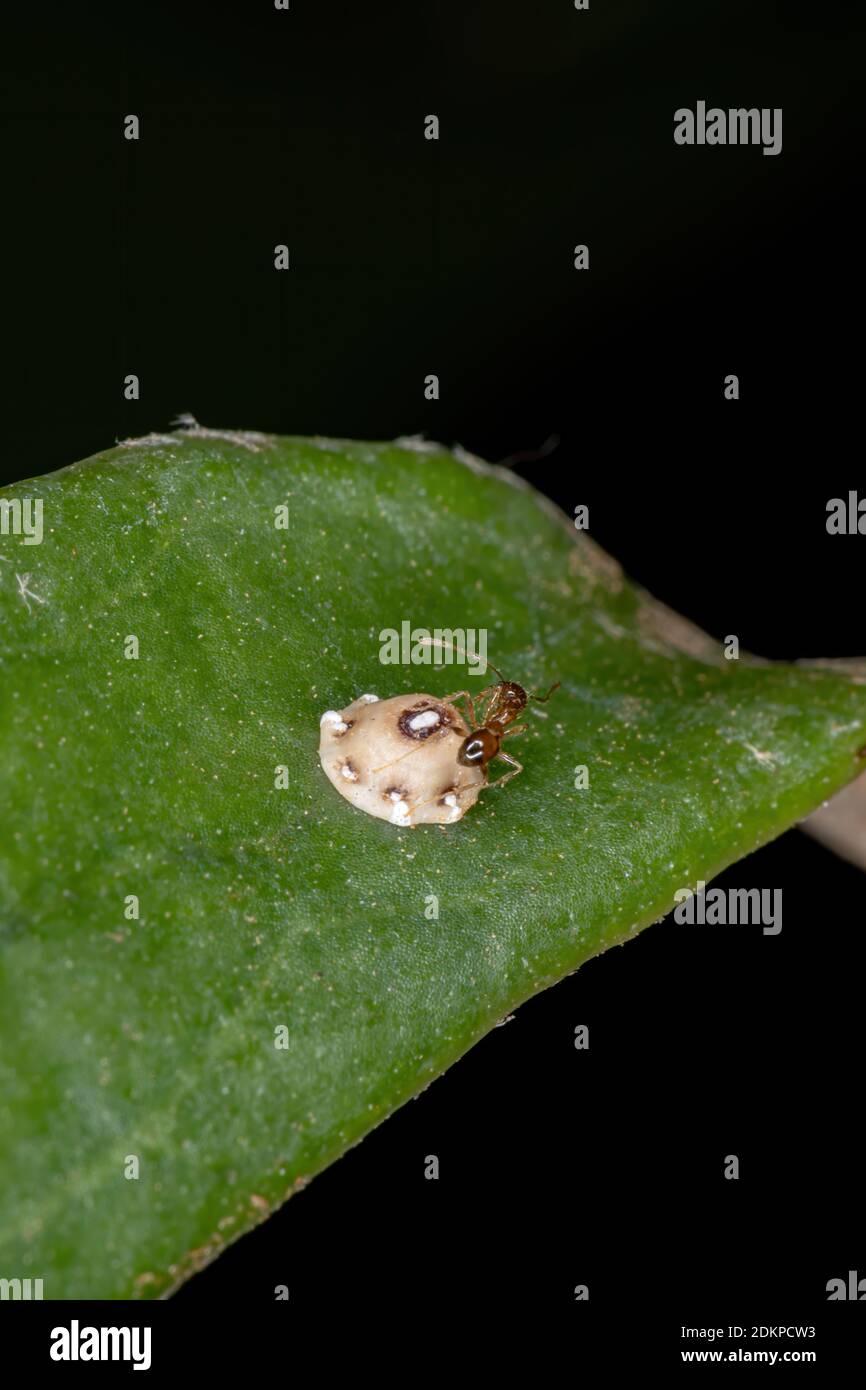 Wax Scale of the Genus Ceroplastes Stock Photohttps://www.alamy.com/image-license-details/?v=1https://www.alamy.com/wax-scale-of-the-genus-ceroplastes-image390799615.html
Wax Scale of the Genus Ceroplastes Stock Photohttps://www.alamy.com/image-license-details/?v=1https://www.alamy.com/wax-scale-of-the-genus-ceroplastes-image390799615.htmlRF2DKPCW3–Wax Scale of the Genus Ceroplastes
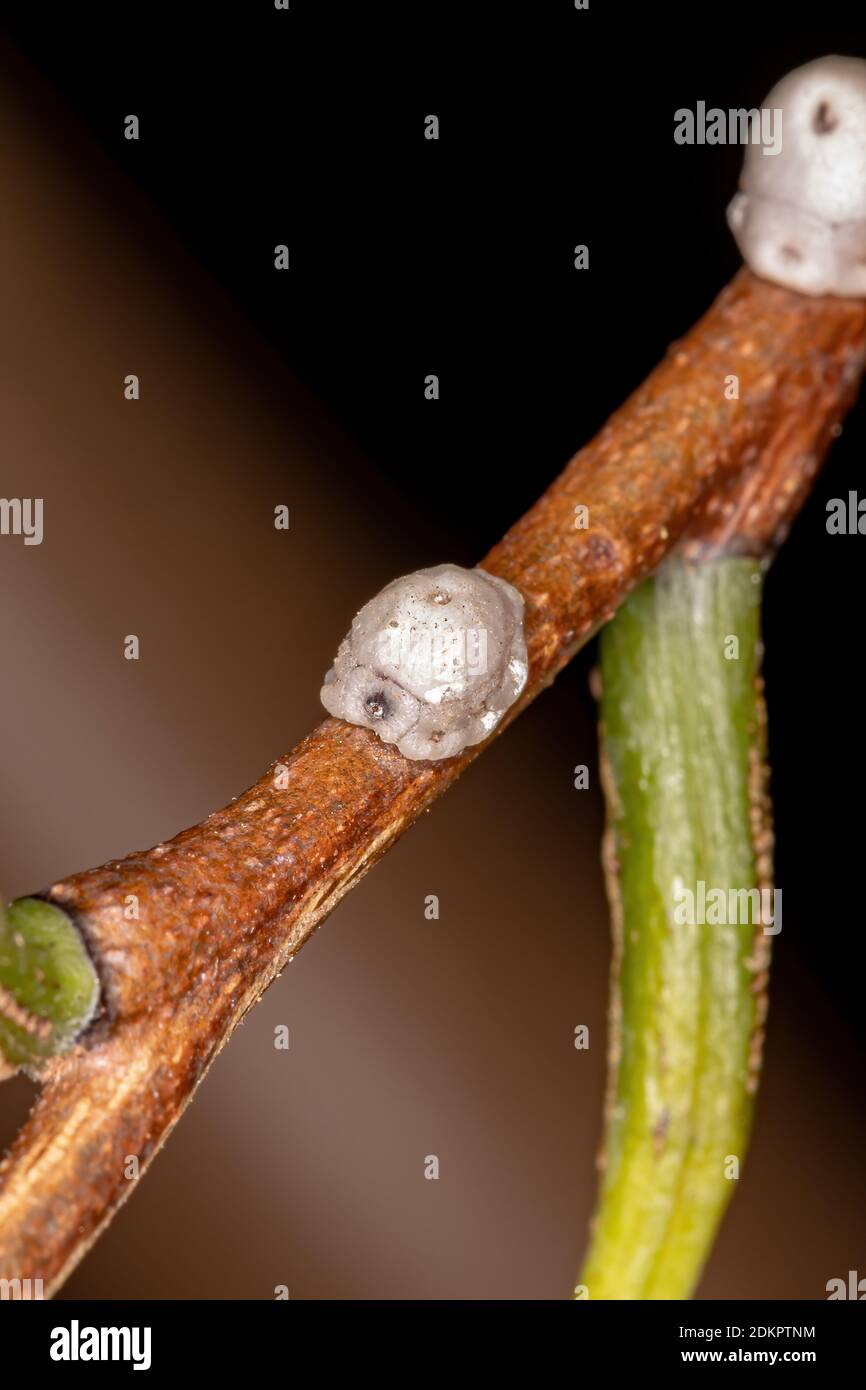 Wax Scale of the Genus Ceroplastes Stock Photohttps://www.alamy.com/image-license-details/?v=1https://www.alamy.com/wax-scale-of-the-genus-ceroplastes-image390808928.html
Wax Scale of the Genus Ceroplastes Stock Photohttps://www.alamy.com/image-license-details/?v=1https://www.alamy.com/wax-scale-of-the-genus-ceroplastes-image390808928.htmlRF2DKPTNM–Wax Scale of the Genus Ceroplastes
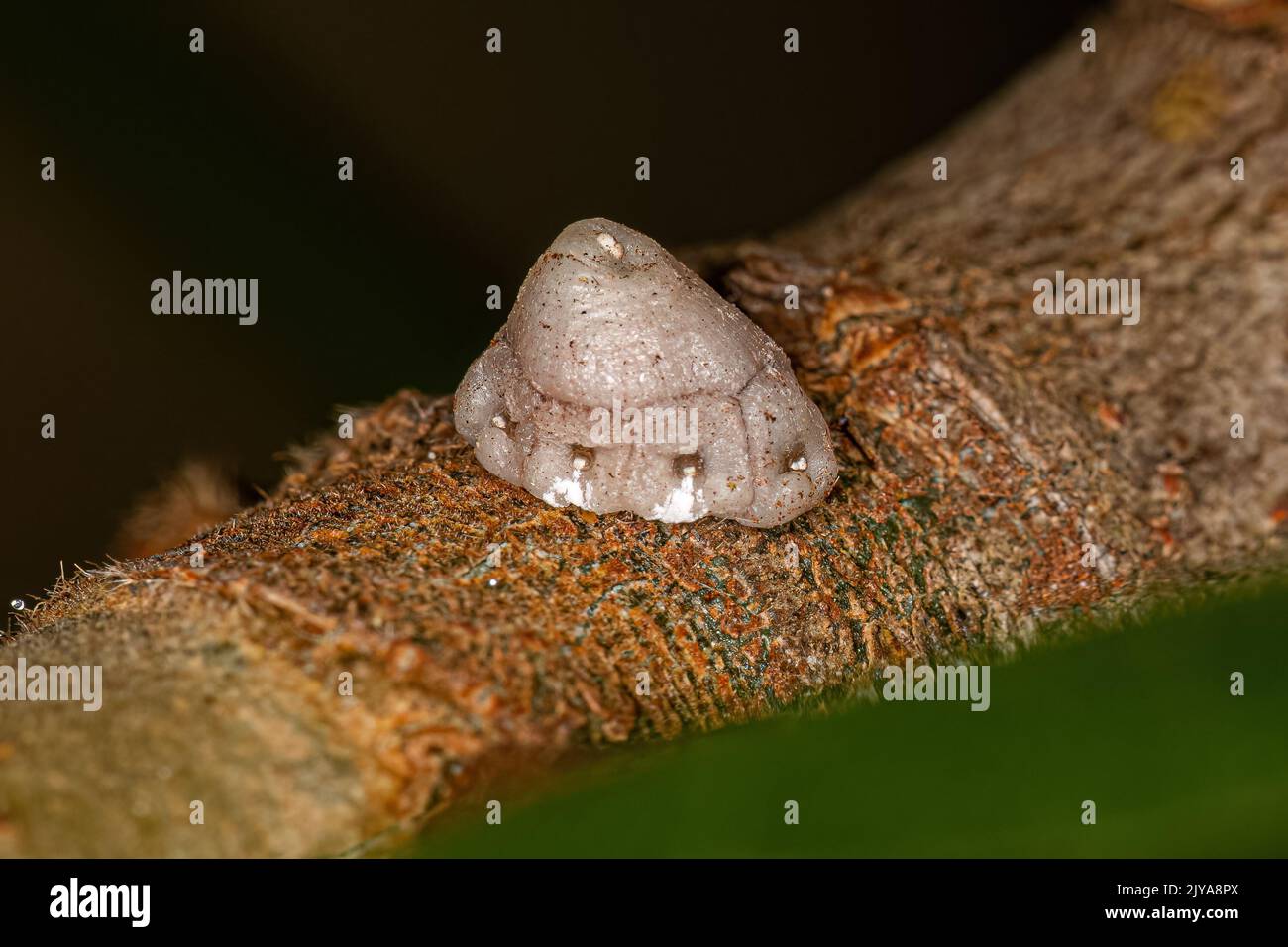 White Tortoise Scale of the Family Coccidae Stock Photohttps://www.alamy.com/image-license-details/?v=1https://www.alamy.com/white-tortoise-scale-of-the-family-coccidae-image481502082.html
White Tortoise Scale of the Family Coccidae Stock Photohttps://www.alamy.com/image-license-details/?v=1https://www.alamy.com/white-tortoise-scale-of-the-family-coccidae-image481502082.htmlRF2JYA8PX–White Tortoise Scale of the Family Coccidae
 Viburnum whitefly (Aleurotrachelus jelinekii) larvae with waxy protruberances on a viburnum leaf Stock Photohttps://www.alamy.com/image-license-details/?v=1https://www.alamy.com/stock-photo-viburnum-whitefly-aleurotrachelus-jelinekii-larvae-with-waxy-protruberances-28551876.html
Viburnum whitefly (Aleurotrachelus jelinekii) larvae with waxy protruberances on a viburnum leaf Stock Photohttps://www.alamy.com/image-license-details/?v=1https://www.alamy.com/stock-photo-viburnum-whitefly-aleurotrachelus-jelinekii-larvae-with-waxy-protruberances-28551876.htmlRMBJCJ5T–Viburnum whitefly (Aleurotrachelus jelinekii) larvae with waxy protruberances on a viburnum leaf
 White Tortoise Scale of the Family Coccidae Stock Photohttps://www.alamy.com/image-license-details/?v=1https://www.alamy.com/white-tortoise-scale-of-the-family-coccidae-image486058239.html
White Tortoise Scale of the Family Coccidae Stock Photohttps://www.alamy.com/image-license-details/?v=1https://www.alamy.com/white-tortoise-scale-of-the-family-coccidae-image486058239.htmlRF2K6NT6R–White Tortoise Scale of the Family Coccidae
 A macro of a Galleria mellonella wax moth perched on a honeycomb Stock Photohttps://www.alamy.com/image-license-details/?v=1https://www.alamy.com/a-macro-of-a-galleria-mellonella-wax-moth-perched-on-a-honeycomb-image568958294.html
A macro of a Galleria mellonella wax moth perched on a honeycomb Stock Photohttps://www.alamy.com/image-license-details/?v=1https://www.alamy.com/a-macro-of-a-galleria-mellonella-wax-moth-perched-on-a-honeycomb-image568958294.htmlRF2T1J832–A macro of a Galleria mellonella wax moth perched on a honeycomb
 Tortoise Scales Insects of the Family Coccidae Stock Photohttps://www.alamy.com/image-license-details/?v=1https://www.alamy.com/tortoise-scales-insects-of-the-family-coccidae-image417258648.html
Tortoise Scales Insects of the Family Coccidae Stock Photohttps://www.alamy.com/image-license-details/?v=1https://www.alamy.com/tortoise-scales-insects-of-the-family-coccidae-image417258648.htmlRF2F6RNJG–Tortoise Scales Insects of the Family Coccidae
 . Evolution and animal life; an elementary discussion of facts, processes, laws and theories relating to the life and evolution of animals . mbiosis arenot rare. There livesin the live-oak treesin the vicinity of Stan-ford University a cer-tain scale insect, Cero-coccus ehrhorni, whichdiffers from the othertwo or three species of its genus in not having its body covered by a heavy, thick,protecting layer of secreted wax. But it gets the neededprotection in another way. It is always covered by a thickfelt like fungus growth, which has been found by investiga-tion to germinate its spores and to Stock Photohttps://www.alamy.com/image-license-details/?v=1https://www.alamy.com/evolution-and-animal-life-an-elementary-discussion-of-facts-processes-laws-and-theories-relating-to-the-life-and-evolution-of-animals-mbiosis-arenot-rare-there-livesin-the-live-oak-treesin-the-vicinity-of-stan-ford-university-a-cer-tain-scale-insect-cero-coccus-ehrhorni-whichdiffers-from-the-othertwo-or-three-species-of-its-genus-in-not-having-its-body-covered-by-a-heavy-thickprotecting-layer-of-secreted-wax-but-it-gets-the-neededprotection-in-another-way-it-is-always-covered-by-a-thickfelt-like-fungus-growth-which-has-been-found-by-investiga-tion-to-germinate-its-spores-and-to-image369593051.html
. Evolution and animal life; an elementary discussion of facts, processes, laws and theories relating to the life and evolution of animals . mbiosis arenot rare. There livesin the live-oak treesin the vicinity of Stan-ford University a cer-tain scale insect, Cero-coccus ehrhorni, whichdiffers from the othertwo or three species of its genus in not having its body covered by a heavy, thick,protecting layer of secreted wax. But it gets the neededprotection in another way. It is always covered by a thickfelt like fungus growth, which has been found by investiga-tion to germinate its spores and to Stock Photohttps://www.alamy.com/image-license-details/?v=1https://www.alamy.com/evolution-and-animal-life-an-elementary-discussion-of-facts-processes-laws-and-theories-relating-to-the-life-and-evolution-of-animals-mbiosis-arenot-rare-there-livesin-the-live-oak-treesin-the-vicinity-of-stan-ford-university-a-cer-tain-scale-insect-cero-coccus-ehrhorni-whichdiffers-from-the-othertwo-or-three-species-of-its-genus-in-not-having-its-body-covered-by-a-heavy-thickprotecting-layer-of-secreted-wax-but-it-gets-the-neededprotection-in-another-way-it-is-always-covered-by-a-thickfelt-like-fungus-growth-which-has-been-found-by-investiga-tion-to-germinate-its-spores-and-to-image369593051.htmlRM2CD8BKR–. Evolution and animal life; an elementary discussion of facts, processes, laws and theories relating to the life and evolution of animals . mbiosis arenot rare. There livesin the live-oak treesin the vicinity of Stan-ford University a cer-tain scale insect, Cero-coccus ehrhorni, whichdiffers from the othertwo or three species of its genus in not having its body covered by a heavy, thick,protecting layer of secreted wax. But it gets the neededprotection in another way. It is always covered by a thickfelt like fungus growth, which has been found by investiga-tion to germinate its spores and to
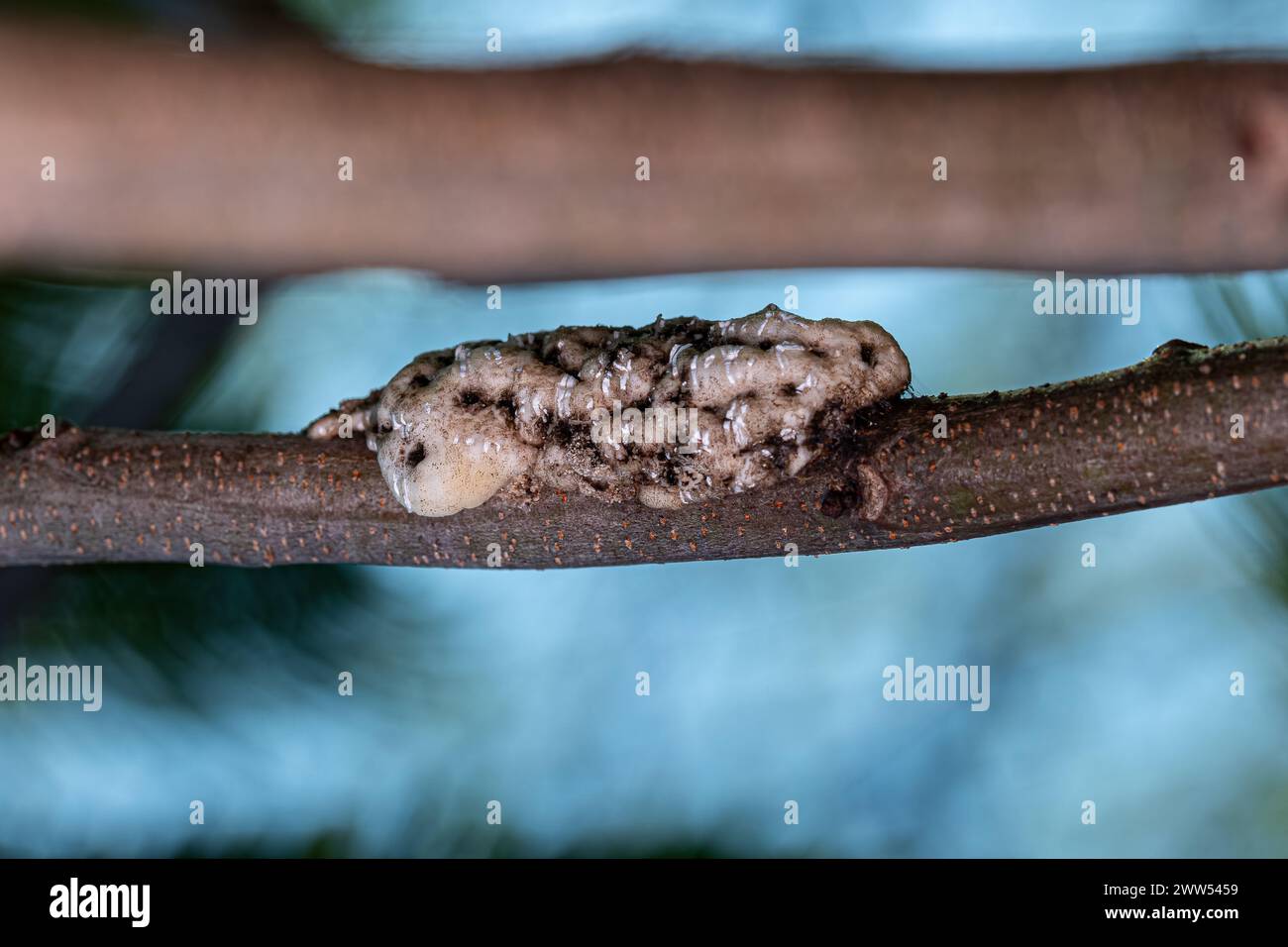 White Tortoise Scales of the Family Coccidae Stock Photohttps://www.alamy.com/image-license-details/?v=1https://www.alamy.com/white-tortoise-scales-of-the-family-coccidae-image600631957.html
White Tortoise Scales of the Family Coccidae Stock Photohttps://www.alamy.com/image-license-details/?v=1https://www.alamy.com/white-tortoise-scales-of-the-family-coccidae-image600631957.htmlRF2WW5459–White Tortoise Scales of the Family Coccidae
 . The popular natural history . Zoology. 558 CICADjE.. who employ that term in a strangely w'de sense ; the Cicadse, with their beautiful membranous wings, their large heads, and their loud voices ; the tribe of Hoppers, of which the Cuckoo-spit Insect, known in its perfect state under the name of Frog-hopper, and the beautiful Scarlet Hopper, are familiar British examples ; the wonderful Lantern-flies, also leapers, which are found only in hot climates ; the Wax Insects of China ; and lastly, the Scale Insects, or Coccida, from which the "lac" so important in commerce is obtained. T Stock Photohttps://www.alamy.com/image-license-details/?v=1https://www.alamy.com/the-popular-natural-history-zoology-558-cicadje-who-employ-that-term-in-a-strangely-wde-sense-the-cicadse-with-their-beautiful-membranous-wings-their-large-heads-and-their-loud-voices-the-tribe-of-hoppers-of-which-the-cuckoo-spit-insect-known-in-its-perfect-state-under-the-name-of-frog-hopper-and-the-beautiful-scarlet-hopper-are-familiar-british-examples-the-wonderful-lantern-flies-also-leapers-which-are-found-only-in-hot-climates-the-wax-insects-of-china-and-lastly-the-scale-insects-or-coccida-from-which-the-quotlacquot-so-important-in-commerce-is-obtained-t-image216351373.html
. The popular natural history . Zoology. 558 CICADjE.. who employ that term in a strangely w'de sense ; the Cicadse, with their beautiful membranous wings, their large heads, and their loud voices ; the tribe of Hoppers, of which the Cuckoo-spit Insect, known in its perfect state under the name of Frog-hopper, and the beautiful Scarlet Hopper, are familiar British examples ; the wonderful Lantern-flies, also leapers, which are found only in hot climates ; the Wax Insects of China ; and lastly, the Scale Insects, or Coccida, from which the "lac" so important in commerce is obtained. T Stock Photohttps://www.alamy.com/image-license-details/?v=1https://www.alamy.com/the-popular-natural-history-zoology-558-cicadje-who-employ-that-term-in-a-strangely-wde-sense-the-cicadse-with-their-beautiful-membranous-wings-their-large-heads-and-their-loud-voices-the-tribe-of-hoppers-of-which-the-cuckoo-spit-insect-known-in-its-perfect-state-under-the-name-of-frog-hopper-and-the-beautiful-scarlet-hopper-are-familiar-british-examples-the-wonderful-lantern-flies-also-leapers-which-are-found-only-in-hot-climates-the-wax-insects-of-china-and-lastly-the-scale-insects-or-coccida-from-which-the-quotlacquot-so-important-in-commerce-is-obtained-t-image216351373.htmlRMPFYJAN–. The popular natural history . Zoology. 558 CICADjE.. who employ that term in a strangely w'de sense ; the Cicadse, with their beautiful membranous wings, their large heads, and their loud voices ; the tribe of Hoppers, of which the Cuckoo-spit Insect, known in its perfect state under the name of Frog-hopper, and the beautiful Scarlet Hopper, are familiar British examples ; the wonderful Lantern-flies, also leapers, which are found only in hot climates ; the Wax Insects of China ; and lastly, the Scale Insects, or Coccida, from which the "lac" so important in commerce is obtained. T
 Boxwood with white waxy coating or extrusion from box sucker or boxwood psyllid, Psylla buxi Stock Photohttps://www.alamy.com/image-license-details/?v=1https://www.alamy.com/boxwood-with-white-waxy-coating-or-extrusion-from-box-sucker-or-boxwood-psyllid-psylla-buxi-image259444925.html
Boxwood with white waxy coating or extrusion from box sucker or boxwood psyllid, Psylla buxi Stock Photohttps://www.alamy.com/image-license-details/?v=1https://www.alamy.com/boxwood-with-white-waxy-coating-or-extrusion-from-box-sucker-or-boxwood-psyllid-psylla-buxi-image259444925.htmlRMW22MJ5–Boxwood with white waxy coating or extrusion from box sucker or boxwood psyllid, Psylla buxi
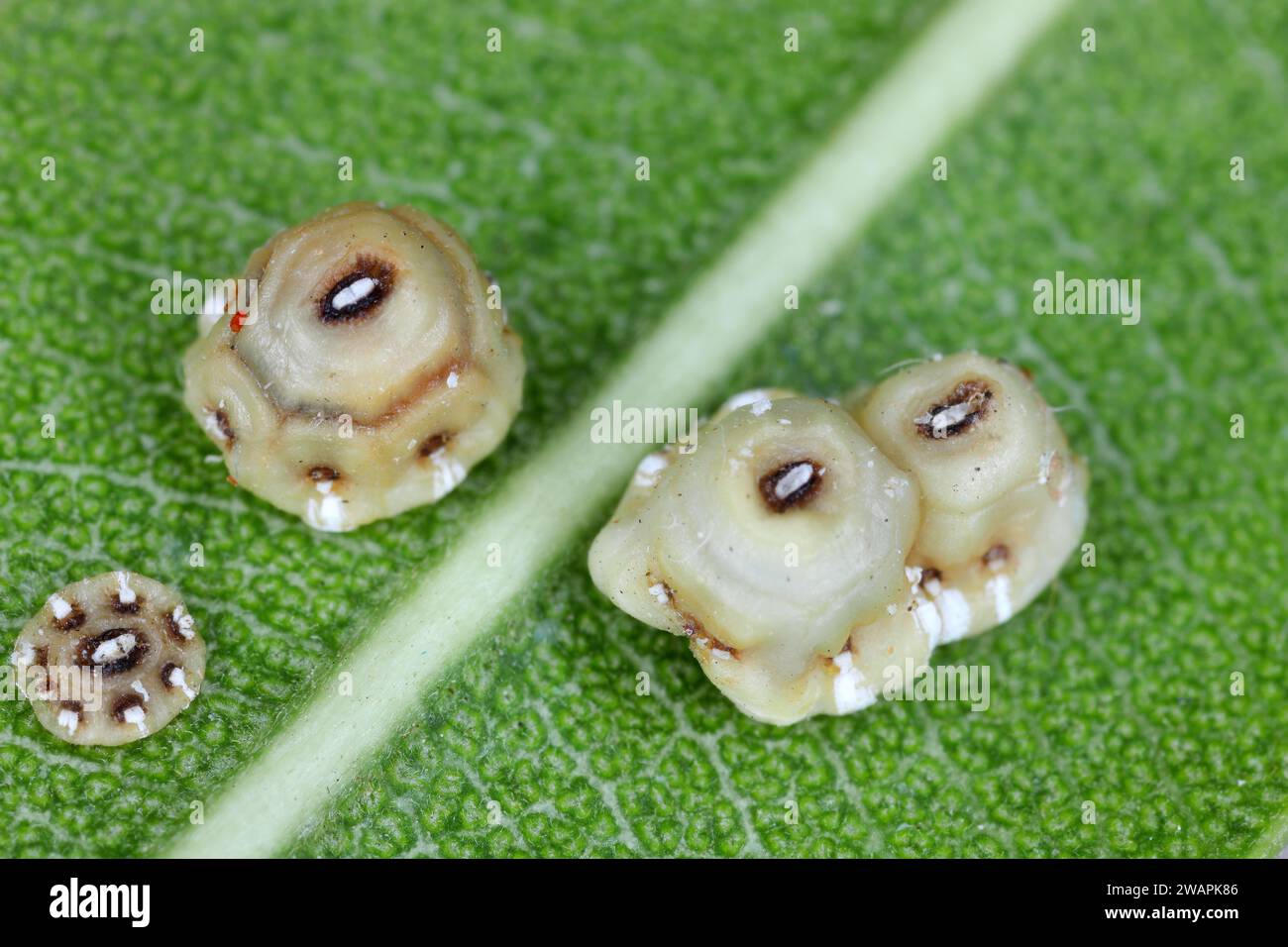 Fig wax scale (scientific name: Ceroplastes rusci, Coccidae). Insect reported as a significant pest of citrus and many other crops and ornamental Stock Photohttps://www.alamy.com/image-license-details/?v=1https://www.alamy.com/fig-wax-scale-scientific-name-ceroplastes-rusci-coccidae-insect-reported-as-a-significant-pest-of-citrus-and-many-other-crops-and-ornamental-image591797142.html
Fig wax scale (scientific name: Ceroplastes rusci, Coccidae). Insect reported as a significant pest of citrus and many other crops and ornamental Stock Photohttps://www.alamy.com/image-license-details/?v=1https://www.alamy.com/fig-wax-scale-scientific-name-ceroplastes-rusci-coccidae-insect-reported-as-a-significant-pest-of-citrus-and-many-other-crops-and-ornamental-image591797142.htmlRF2WAPK86–Fig wax scale (scientific name: Ceroplastes rusci, Coccidae). Insect reported as a significant pest of citrus and many other crops and ornamental
 Viburnum whitefly (Aleurotrachelus jelinekii) larvae with waxy protruberances on a viburnum leaf Stock Photohttps://www.alamy.com/image-license-details/?v=1https://www.alamy.com/stock-photo-viburnum-whitefly-aleurotrachelus-jelinekii-larvae-with-waxy-protruberances-28551835.html
Viburnum whitefly (Aleurotrachelus jelinekii) larvae with waxy protruberances on a viburnum leaf Stock Photohttps://www.alamy.com/image-license-details/?v=1https://www.alamy.com/stock-photo-viburnum-whitefly-aleurotrachelus-jelinekii-larvae-with-waxy-protruberances-28551835.htmlRMBJCJ4B–Viburnum whitefly (Aleurotrachelus jelinekii) larvae with waxy protruberances on a viburnum leaf
 A macro of a Galleria mellonella wax moth perched on a honeycomb Stock Photohttps://www.alamy.com/image-license-details/?v=1https://www.alamy.com/a-macro-of-a-galleria-mellonella-wax-moth-perched-on-a-honeycomb-image568962816.html
A macro of a Galleria mellonella wax moth perched on a honeycomb Stock Photohttps://www.alamy.com/image-license-details/?v=1https://www.alamy.com/a-macro-of-a-galleria-mellonella-wax-moth-perched-on-a-honeycomb-image568962816.htmlRF2T1JDTG–A macro of a Galleria mellonella wax moth perched on a honeycomb
 . Circular. Insect pests; Insect pests. MANIPULATION OF WAX SCALES OF THE HONEY BEE. 5 -.vorkers at close range, and it also obviates the necessity of placiii<r glass ends in the hive against which comb might be built. Even with the best of arrangements it is difficult to folloAv some of the movements of the workers during the act of scale removal. As an aid to vision a Zeiss binocular microscope is used, the tubes being removed from the stand and held to the eye after the manner of a lield glass. By the use of this instrument a bee appears to acquire. Fig. 2.—Observatory hive. The sides ar Stock Photohttps://www.alamy.com/image-license-details/?v=1https://www.alamy.com/circular-insect-pests-insect-pests-manipulation-of-wax-scales-of-the-honey-bee-5-vorkers-at-close-range-and-it-also-obviates-the-necessity-of-placiiiltr-glass-ends-in-the-hive-against-which-comb-might-be-built-even-with-the-best-of-arrangements-it-is-difficult-to-folloav-some-of-the-movements-of-the-workers-during-the-act-of-scale-removal-as-an-aid-to-vision-a-zeiss-binocular-microscope-is-used-the-tubes-being-removed-from-the-stand-and-held-to-the-eye-after-the-manner-of-a-lield-glass-by-the-use-of-this-instrument-a-bee-appears-to-acquire-fig-2observatory-hive-the-sides-ar-image232766847.html
. Circular. Insect pests; Insect pests. MANIPULATION OF WAX SCALES OF THE HONEY BEE. 5 -.vorkers at close range, and it also obviates the necessity of placiii<r glass ends in the hive against which comb might be built. Even with the best of arrangements it is difficult to folloAv some of the movements of the workers during the act of scale removal. As an aid to vision a Zeiss binocular microscope is used, the tubes being removed from the stand and held to the eye after the manner of a lield glass. By the use of this instrument a bee appears to acquire. Fig. 2.—Observatory hive. The sides ar Stock Photohttps://www.alamy.com/image-license-details/?v=1https://www.alamy.com/circular-insect-pests-insect-pests-manipulation-of-wax-scales-of-the-honey-bee-5-vorkers-at-close-range-and-it-also-obviates-the-necessity-of-placiiiltr-glass-ends-in-the-hive-against-which-comb-might-be-built-even-with-the-best-of-arrangements-it-is-difficult-to-folloav-some-of-the-movements-of-the-workers-during-the-act-of-scale-removal-as-an-aid-to-vision-a-zeiss-binocular-microscope-is-used-the-tubes-being-removed-from-the-stand-and-held-to-the-eye-after-the-manner-of-a-lield-glass-by-the-use-of-this-instrument-a-bee-appears-to-acquire-fig-2observatory-hive-the-sides-ar-image232766847.htmlRMREKCDK–. Circular. Insect pests; Insect pests. MANIPULATION OF WAX SCALES OF THE HONEY BEE. 5 -.vorkers at close range, and it also obviates the necessity of placiii<r glass ends in the hive against which comb might be built. Even with the best of arrangements it is difficult to folloAv some of the movements of the workers during the act of scale removal. As an aid to vision a Zeiss binocular microscope is used, the tubes being removed from the stand and held to the eye after the manner of a lield glass. By the use of this instrument a bee appears to acquire. Fig. 2.—Observatory hive. The sides ar
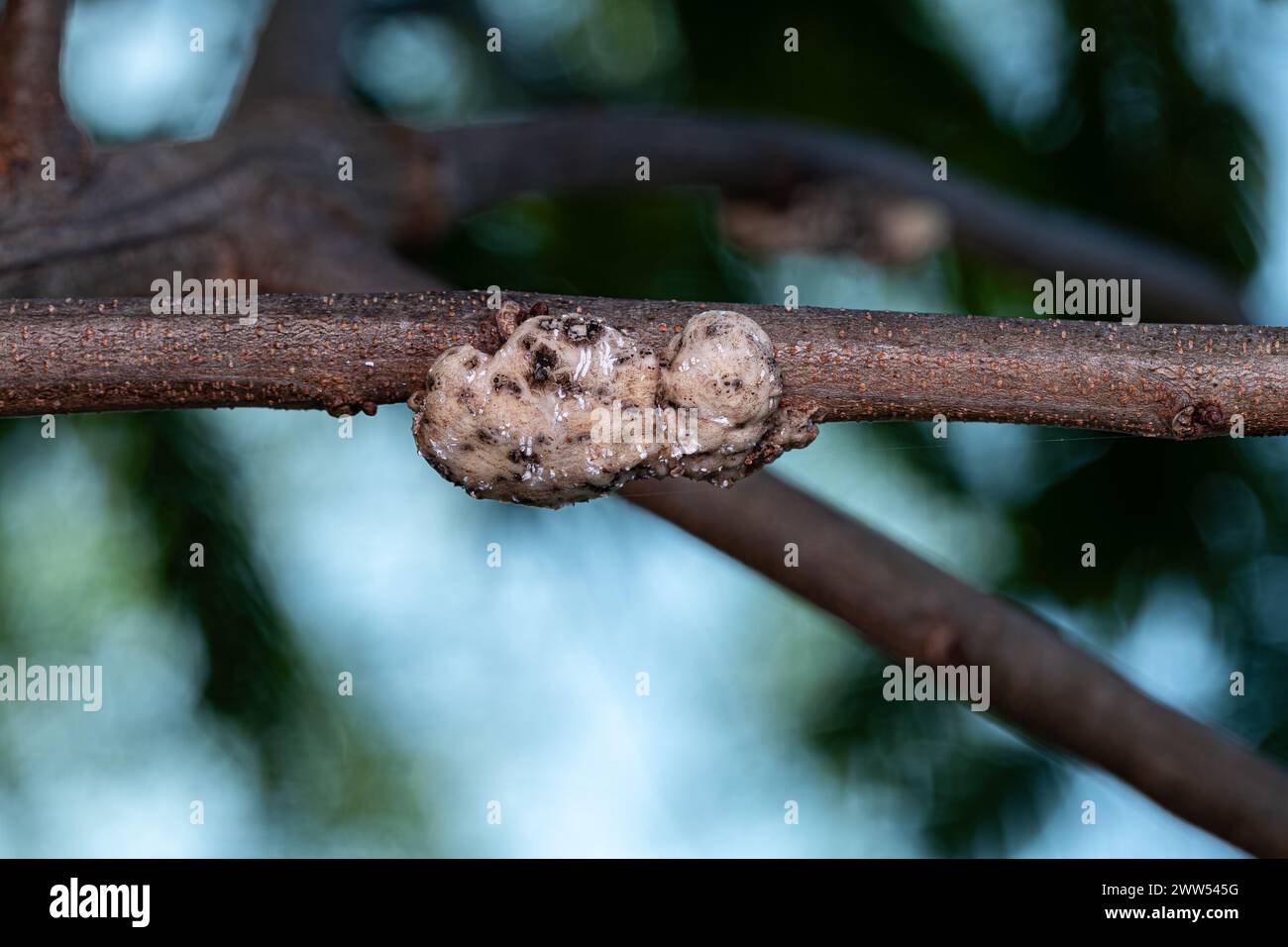 White Tortoise Scales of the Family Coccidae Stock Photohttps://www.alamy.com/image-license-details/?v=1https://www.alamy.com/white-tortoise-scales-of-the-family-coccidae-image600631964.html
White Tortoise Scales of the Family Coccidae Stock Photohttps://www.alamy.com/image-license-details/?v=1https://www.alamy.com/white-tortoise-scales-of-the-family-coccidae-image600631964.htmlRF2WW545G–White Tortoise Scales of the Family Coccidae
 Boxwood with white waxy coating or extrusion from box sucker or boxwood psyllid, Psylla buxi Stock Photohttps://www.alamy.com/image-license-details/?v=1https://www.alamy.com/boxwood-with-white-waxy-coating-or-extrusion-from-box-sucker-or-boxwood-psyllid-psylla-buxi-image259444927.html
Boxwood with white waxy coating or extrusion from box sucker or boxwood psyllid, Psylla buxi Stock Photohttps://www.alamy.com/image-license-details/?v=1https://www.alamy.com/boxwood-with-white-waxy-coating-or-extrusion-from-box-sucker-or-boxwood-psyllid-psylla-buxi-image259444927.htmlRMW22MJ7–Boxwood with white waxy coating or extrusion from box sucker or boxwood psyllid, Psylla buxi
 Scale insects Scale insects occupying space left behind on leaves after Viburnum larvae beetle damage space left behind on leaves after Viburnum larva Stock Photohttps://www.alamy.com/image-license-details/?v=1https://www.alamy.com/scale-insects-scale-insects-occupying-space-left-behind-on-leaves-after-viburnum-larvae-beetle-damage-space-left-behind-on-leaves-after-viburnum-larva-image207635345.html
Scale insects Scale insects occupying space left behind on leaves after Viburnum larvae beetle damage space left behind on leaves after Viburnum larva Stock Photohttps://www.alamy.com/image-license-details/?v=1https://www.alamy.com/scale-insects-scale-insects-occupying-space-left-behind-on-leaves-after-viburnum-larvae-beetle-damage-space-left-behind-on-leaves-after-viburnum-larva-image207635345.htmlRMP1PH01–Scale insects Scale insects occupying space left behind on leaves after Viburnum larvae beetle damage space left behind on leaves after Viburnum larva
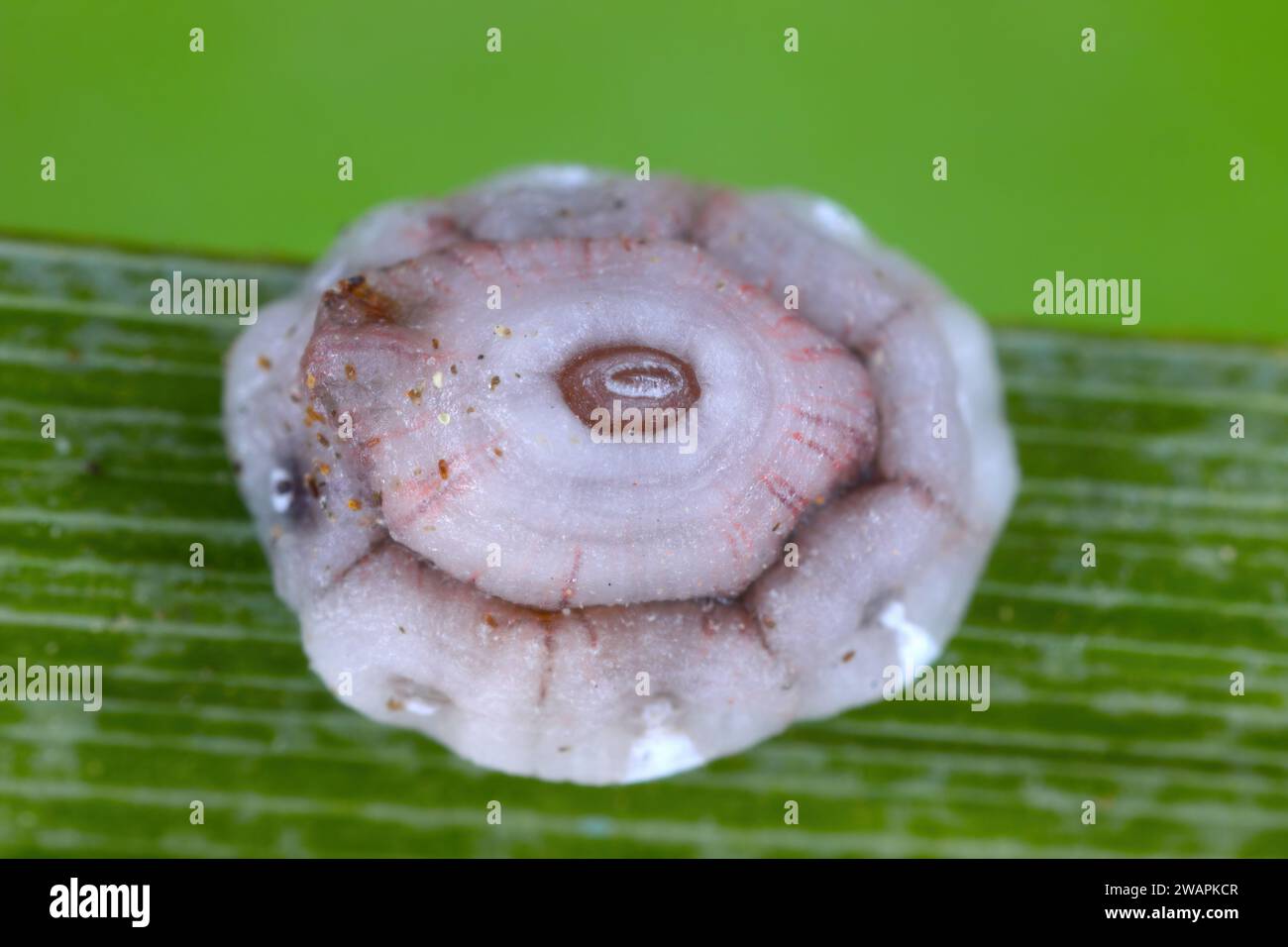 Fig wax scale (scientific name: Ceroplastes rusci, Coccidae). Insect reported as a significant pest of citrus and many other crops and ornamental Stock Photohttps://www.alamy.com/image-license-details/?v=1https://www.alamy.com/fig-wax-scale-scientific-name-ceroplastes-rusci-coccidae-insect-reported-as-a-significant-pest-of-citrus-and-many-other-crops-and-ornamental-image591797271.html
Fig wax scale (scientific name: Ceroplastes rusci, Coccidae). Insect reported as a significant pest of citrus and many other crops and ornamental Stock Photohttps://www.alamy.com/image-license-details/?v=1https://www.alamy.com/fig-wax-scale-scientific-name-ceroplastes-rusci-coccidae-insect-reported-as-a-significant-pest-of-citrus-and-many-other-crops-and-ornamental-image591797271.htmlRF2WAPKCR–Fig wax scale (scientific name: Ceroplastes rusci, Coccidae). Insect reported as a significant pest of citrus and many other crops and ornamental
 Viburnum whitefly (Aleurotrachelus jelinekii) larvae with waxy protruberances on a viburnum leaf Stock Photohttps://www.alamy.com/image-license-details/?v=1https://www.alamy.com/stock-photo-viburnum-whitefly-aleurotrachelus-jelinekii-larvae-with-waxy-protruberances-28553732.html
Viburnum whitefly (Aleurotrachelus jelinekii) larvae with waxy protruberances on a viburnum leaf Stock Photohttps://www.alamy.com/image-license-details/?v=1https://www.alamy.com/stock-photo-viburnum-whitefly-aleurotrachelus-jelinekii-larvae-with-waxy-protruberances-28553732.htmlRMBJCMG4–Viburnum whitefly (Aleurotrachelus jelinekii) larvae with waxy protruberances on a viburnum leaf
 A macro of a Galleria mellonella wax moth perched on a honeycomb Stock Photohttps://www.alamy.com/image-license-details/?v=1https://www.alamy.com/a-macro-of-a-galleria-mellonella-wax-moth-perched-on-a-honeycomb-image568958934.html
A macro of a Galleria mellonella wax moth perched on a honeycomb Stock Photohttps://www.alamy.com/image-license-details/?v=1https://www.alamy.com/a-macro-of-a-galleria-mellonella-wax-moth-perched-on-a-honeycomb-image568958934.htmlRF2T1J8WX–A macro of a Galleria mellonella wax moth perched on a honeycomb
 . Circular. Insect pests; Insect pests. MANIPULATION OF WAX SCALES OF THE HONEY BEE. REMOVAL OF THE WAX SCALES.. Fifi. 3.—Ventral viow of a worker bee in the act of removing a wax scale. The two middle legs and the right hind leg are used for support, while the left hind leg removes the scale. (Original.) The determination of the exact method by which the wax scales are removed either comes as the result of prolonged and patient watching or is the product of good fortune. Long be- fore the observer is able to decide upon all of the de- tails of the process he becomes convinced that usualh' the Stock Photohttps://www.alamy.com/image-license-details/?v=1https://www.alamy.com/circular-insect-pests-insect-pests-manipulation-of-wax-scales-of-the-honey-bee-removal-of-the-wax-scales-fifi-3ventral-viow-of-a-worker-bee-in-the-act-of-removing-a-wax-scale-the-two-middle-legs-and-the-right-hind-leg-are-used-for-support-while-the-left-hind-leg-removes-the-scale-original-the-determination-of-the-exact-method-by-which-the-wax-scales-are-removed-either-comes-as-the-result-of-prolonged-and-patient-watching-or-is-the-product-of-good-fortune-long-be-fore-the-observer-is-able-to-decide-upon-all-of-the-de-tails-of-the-process-he-becomes-convinced-that-usualh-the-image232766843.html
. Circular. Insect pests; Insect pests. MANIPULATION OF WAX SCALES OF THE HONEY BEE. REMOVAL OF THE WAX SCALES.. Fifi. 3.—Ventral viow of a worker bee in the act of removing a wax scale. The two middle legs and the right hind leg are used for support, while the left hind leg removes the scale. (Original.) The determination of the exact method by which the wax scales are removed either comes as the result of prolonged and patient watching or is the product of good fortune. Long be- fore the observer is able to decide upon all of the de- tails of the process he becomes convinced that usualh' the Stock Photohttps://www.alamy.com/image-license-details/?v=1https://www.alamy.com/circular-insect-pests-insect-pests-manipulation-of-wax-scales-of-the-honey-bee-removal-of-the-wax-scales-fifi-3ventral-viow-of-a-worker-bee-in-the-act-of-removing-a-wax-scale-the-two-middle-legs-and-the-right-hind-leg-are-used-for-support-while-the-left-hind-leg-removes-the-scale-original-the-determination-of-the-exact-method-by-which-the-wax-scales-are-removed-either-comes-as-the-result-of-prolonged-and-patient-watching-or-is-the-product-of-good-fortune-long-be-fore-the-observer-is-able-to-decide-upon-all-of-the-de-tails-of-the-process-he-becomes-convinced-that-usualh-the-image232766843.htmlRMREKCDF–. Circular. Insect pests; Insect pests. MANIPULATION OF WAX SCALES OF THE HONEY BEE. REMOVAL OF THE WAX SCALES.. Fifi. 3.—Ventral viow of a worker bee in the act of removing a wax scale. The two middle legs and the right hind leg are used for support, while the left hind leg removes the scale. (Original.) The determination of the exact method by which the wax scales are removed either comes as the result of prolonged and patient watching or is the product of good fortune. Long be- fore the observer is able to decide upon all of the de- tails of the process he becomes convinced that usualh' the
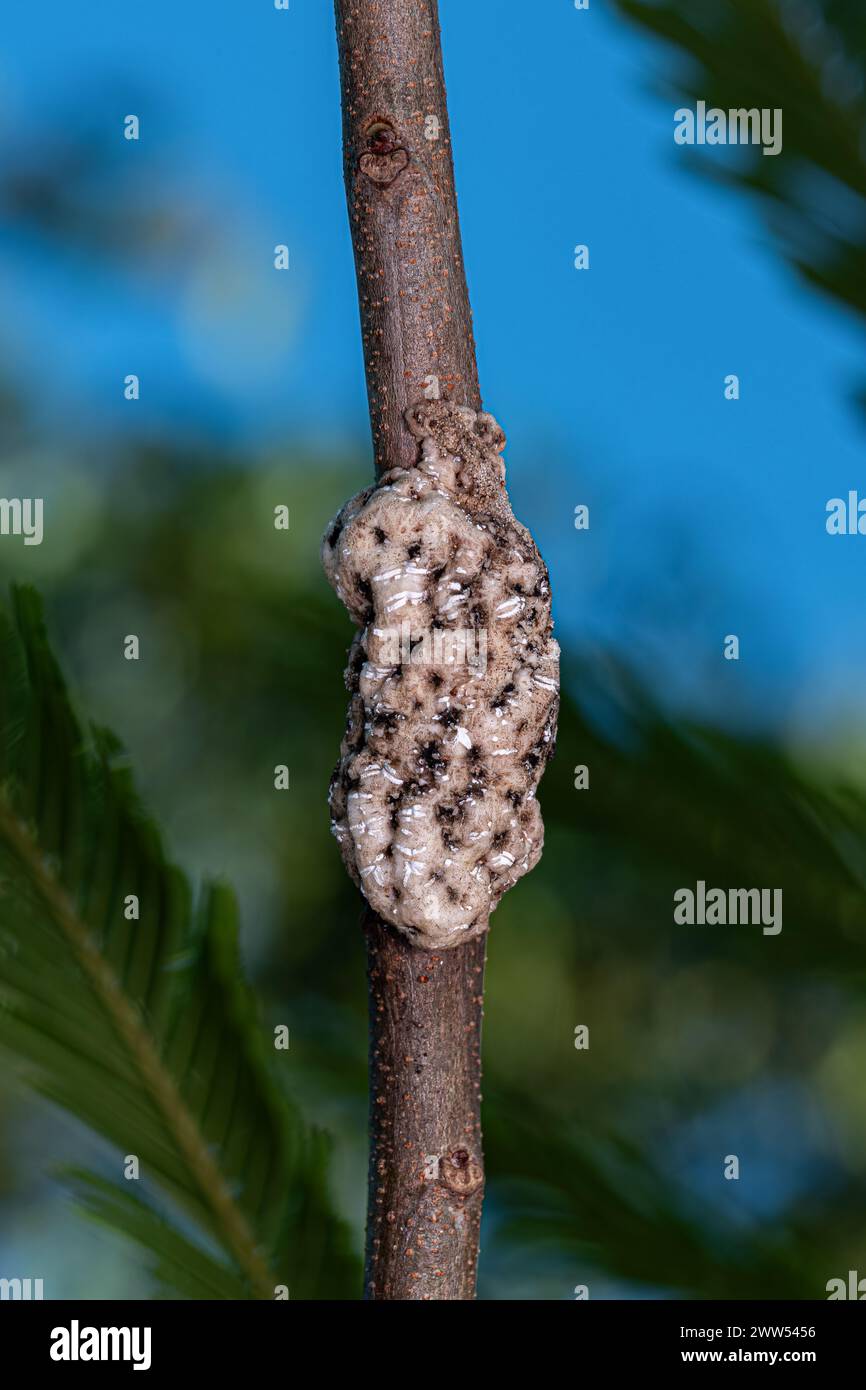 White Tortoise Scales of the Family Coccidae Stock Photohttps://www.alamy.com/image-license-details/?v=1https://www.alamy.com/white-tortoise-scales-of-the-family-coccidae-image600631954.html
White Tortoise Scales of the Family Coccidae Stock Photohttps://www.alamy.com/image-license-details/?v=1https://www.alamy.com/white-tortoise-scales-of-the-family-coccidae-image600631954.htmlRF2WW5456–White Tortoise Scales of the Family Coccidae
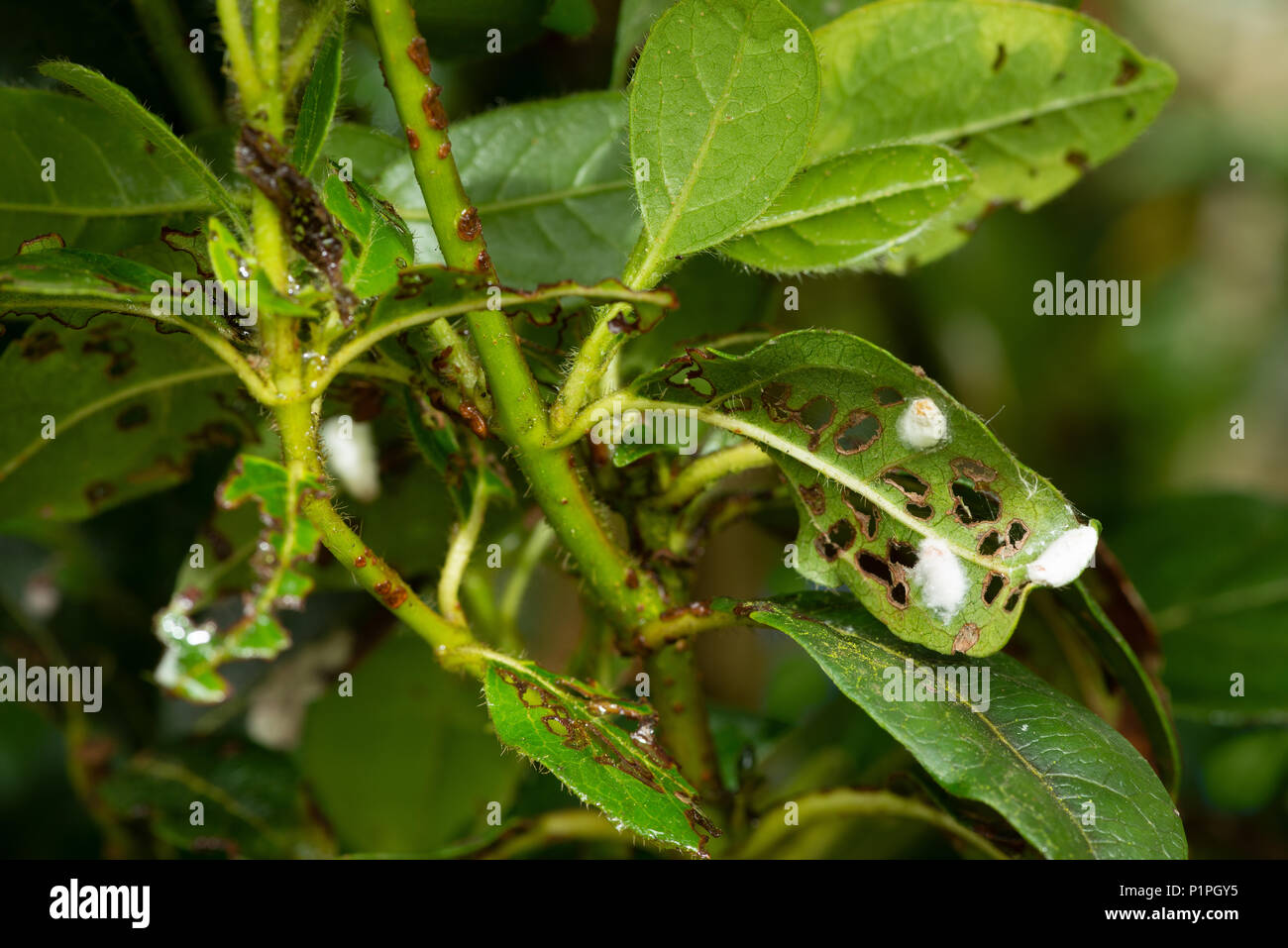 Scale insects Scale insects occupying space left behind on leaves after Viburnum larvae beetle damage space left behind on leaves after Viburnum larva Stock Photohttps://www.alamy.com/image-license-details/?v=1https://www.alamy.com/scale-insects-scale-insects-occupying-space-left-behind-on-leaves-after-viburnum-larvae-beetle-damage-space-left-behind-on-leaves-after-viburnum-larva-image207635321.html
Scale insects Scale insects occupying space left behind on leaves after Viburnum larvae beetle damage space left behind on leaves after Viburnum larva Stock Photohttps://www.alamy.com/image-license-details/?v=1https://www.alamy.com/scale-insects-scale-insects-occupying-space-left-behind-on-leaves-after-viburnum-larvae-beetle-damage-space-left-behind-on-leaves-after-viburnum-larva-image207635321.htmlRMP1PGY5–Scale insects Scale insects occupying space left behind on leaves after Viburnum larvae beetle damage space left behind on leaves after Viburnum larva
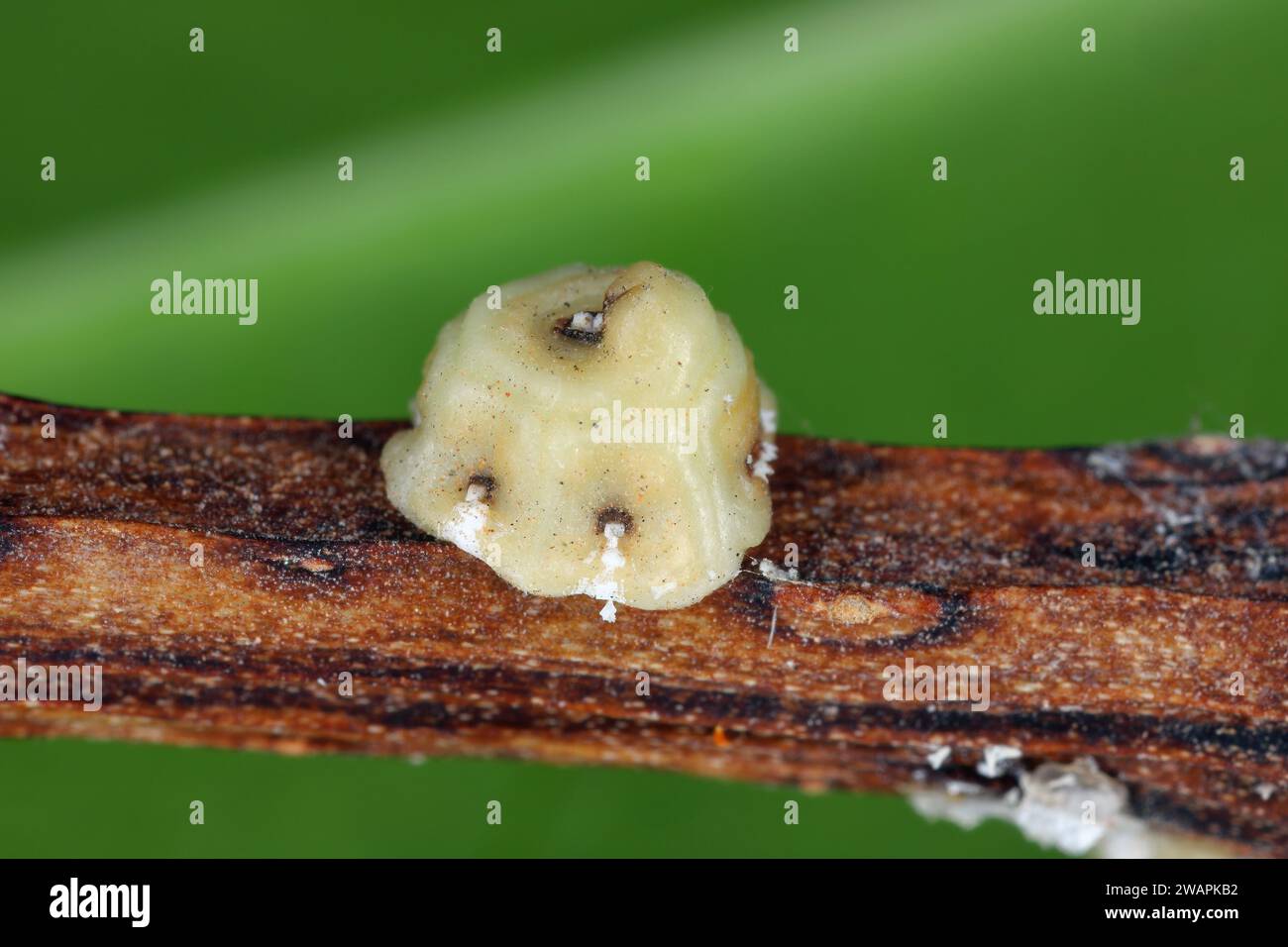 Fig wax scale (scientific name: Ceroplastes rusci, Coccidae). Insect reported as a significant pest of citrus and many other crops and ornamental Stock Photohttps://www.alamy.com/image-license-details/?v=1https://www.alamy.com/fig-wax-scale-scientific-name-ceroplastes-rusci-coccidae-insect-reported-as-a-significant-pest-of-citrus-and-many-other-crops-and-ornamental-image591797222.html
Fig wax scale (scientific name: Ceroplastes rusci, Coccidae). Insect reported as a significant pest of citrus and many other crops and ornamental Stock Photohttps://www.alamy.com/image-license-details/?v=1https://www.alamy.com/fig-wax-scale-scientific-name-ceroplastes-rusci-coccidae-insect-reported-as-a-significant-pest-of-citrus-and-many-other-crops-and-ornamental-image591797222.htmlRF2WAPKB2–Fig wax scale (scientific name: Ceroplastes rusci, Coccidae). Insect reported as a significant pest of citrus and many other crops and ornamental
 Viburnum whitefly (Aleurotrachelus jelinekii) larvae with waxy protruberances on a viburnum leaf Stock Photohttps://www.alamy.com/image-license-details/?v=1https://www.alamy.com/stock-photo-viburnum-whitefly-aleurotrachelus-jelinekii-larvae-with-waxy-protruberances-28541266.html
Viburnum whitefly (Aleurotrachelus jelinekii) larvae with waxy protruberances on a viburnum leaf Stock Photohttps://www.alamy.com/image-license-details/?v=1https://www.alamy.com/stock-photo-viburnum-whitefly-aleurotrachelus-jelinekii-larvae-with-waxy-protruberances-28541266.htmlRMBJC4JX–Viburnum whitefly (Aleurotrachelus jelinekii) larvae with waxy protruberances on a viburnum leaf
 A macro of a Galleria mellonella wax moth perched on a honeycomb Stock Photohttps://www.alamy.com/image-license-details/?v=1https://www.alamy.com/a-macro-of-a-galleria-mellonella-wax-moth-perched-on-a-honeycomb-image568961487.html
A macro of a Galleria mellonella wax moth perched on a honeycomb Stock Photohttps://www.alamy.com/image-license-details/?v=1https://www.alamy.com/a-macro-of-a-galleria-mellonella-wax-moth-perched-on-a-honeycomb-image568961487.htmlRF2T1JC53–A macro of a Galleria mellonella wax moth perched on a honeycomb
 . Elementary entomology. Entomology. Fig. 181. The cochineal insect (7, on cactus; ^, male; c, female (enlarged). (From Riverside Natural History) groups may be readily distinguished. The mealy-bugs are fre- quently found on greenhouse plants, and are so named from their mealy covering of wax and the numerous white, waxy filaments. Fig. 1S2. The peach lecanium, or terrapin scale Adults at left (much enlarged and natural size); young at center and unfertilized female at right (much enlarged). (After Howard, United States Department of Agriculture) which are given off from their bodies. They are Stock Photohttps://www.alamy.com/image-license-details/?v=1https://www.alamy.com/elementary-entomology-entomology-fig-181-the-cochineal-insect-7-on-cactus-male-c-female-enlarged-from-riverside-natural-history-groups-may-be-readily-distinguished-the-mealy-bugs-are-fre-quently-found-on-greenhouse-plants-and-are-so-named-from-their-mealy-covering-of-wax-and-the-numerous-white-waxy-filaments-fig-1s2-the-peach-lecanium-or-terrapin-scale-adults-at-left-much-enlarged-and-natural-size-young-at-center-and-unfertilized-female-at-right-much-enlarged-after-howard-united-states-department-of-agriculture-which-are-given-off-from-their-bodies-they-are-image231768038.html
. Elementary entomology. Entomology. Fig. 181. The cochineal insect (7, on cactus; ^, male; c, female (enlarged). (From Riverside Natural History) groups may be readily distinguished. The mealy-bugs are fre- quently found on greenhouse plants, and are so named from their mealy covering of wax and the numerous white, waxy filaments. Fig. 1S2. The peach lecanium, or terrapin scale Adults at left (much enlarged and natural size); young at center and unfertilized female at right (much enlarged). (After Howard, United States Department of Agriculture) which are given off from their bodies. They are Stock Photohttps://www.alamy.com/image-license-details/?v=1https://www.alamy.com/elementary-entomology-entomology-fig-181-the-cochineal-insect-7-on-cactus-male-c-female-enlarged-from-riverside-natural-history-groups-may-be-readily-distinguished-the-mealy-bugs-are-fre-quently-found-on-greenhouse-plants-and-are-so-named-from-their-mealy-covering-of-wax-and-the-numerous-white-waxy-filaments-fig-1s2-the-peach-lecanium-or-terrapin-scale-adults-at-left-much-enlarged-and-natural-size-young-at-center-and-unfertilized-female-at-right-much-enlarged-after-howard-united-states-department-of-agriculture-which-are-given-off-from-their-bodies-they-are-image231768038.htmlRMRD1XDX–. Elementary entomology. Entomology. Fig. 181. The cochineal insect (7, on cactus; ^, male; c, female (enlarged). (From Riverside Natural History) groups may be readily distinguished. The mealy-bugs are fre- quently found on greenhouse plants, and are so named from their mealy covering of wax and the numerous white, waxy filaments. Fig. 1S2. The peach lecanium, or terrapin scale Adults at left (much enlarged and natural size); young at center and unfertilized female at right (much enlarged). (After Howard, United States Department of Agriculture) which are given off from their bodies. They are
